
- Join for Free


10 Artists to Inspire Your Travel Illustration Journal
- by @amy.mcgregor
Find out how to bring a destination to life through travel illustration and the top artists to inspire your work
Travel. There’s nothing quite like it. The chance to experience new sights, sounds, and smells, to wander off the beaten track and make new discoveries, or simply kick back and relax for a week on a sun-drenched beach.
When we imagine the far-flung places we’d like to visit, reminisce about past adventures, or indeed, advertise a location to others, we turn to photos as the most powerful medium to capture the essence of a place.
But there is another, equally effective and arguably more creative way to bring a destination to life: travel illustration.
Alex Green ( @algreen_1 ) has been an illustrator for over 25 years and specializes in the art of travel illustration . He has worked in many areas including design, fashion, editorial, murals, websites, and live events, with a varied and enviable list of clients including Airbnb, the BBC, Emirates Airlines, Pfizer, The Guardian , The Financial Times , and Oxfam.
In his Domestika course, he demonstrates how to create travel illustrations that have a sense of place and atmosphere from photographic references of a location, and explains how to apply personal experiences to your illustrations to create pieces with your own vision and interpretation.
What is travel illustration?
Travel illustration is simply the art of drawing a place instead of photographing it. You can use a photo as a reference point, draw inspirational settings in real time as you travel, or recall them from memory.
The aim is not necessarily to copy the location exactly as you see it, but to give it your own interpretation and tell a story by focusing on conveying a particular emotion, theme, or atmosphere.
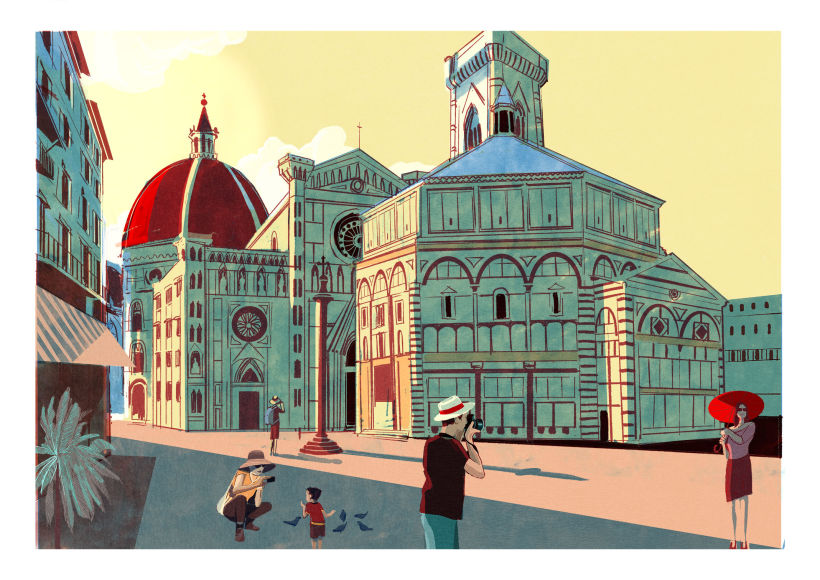
What are the benefits of travel illustration?
Aside from being a great way to practice your creative skills, illustrating a place allows for more freedom of expression and interpretation, giving you the opportunity to explore the limits of your imagination for a truly unique and personalized result.
It may require more time and patience to complete, but illustration also allows you to really connect with a place, bringing it to life through your drawings and recapturing those precious moments you spent there.
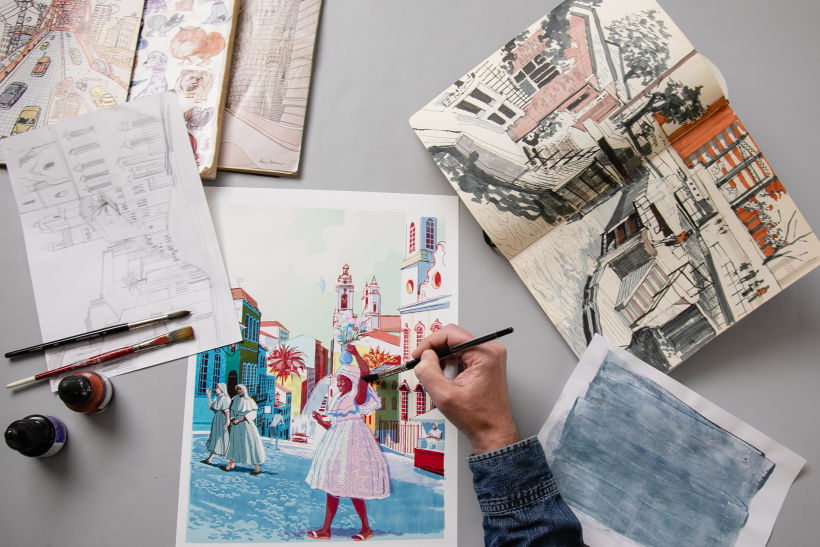
10 Artists to Inspire Your Travel Illustration Pieces
Although using your own photos as a point of departure usually means you have a greater connection with your reference, there is no reason why you can’t choose other images of locations you would like to visit. They could be photographs taken by someone else, or something you have found on the internet, as long as they spark your imagination.
Of course, all artists look to other artists for inspiration and Alex is no different. In this Domestika blog, he shares with us the top 10 artists who inspire his work, providing an invaluable tool that can help you begin thinking about how to develop your style, techniques, and give you ideas for your illustrations.
Miroslav Sasek
@miroslavsasek
The Czech artist is both illustrator and author of the This is series of children’s travel books, which bring to life key destinations around the world including New York, Rome, London, and Paris.
Abstract and representational elements contrast in his illustrations, making for a beautifully original take on seemingly-familiar places.
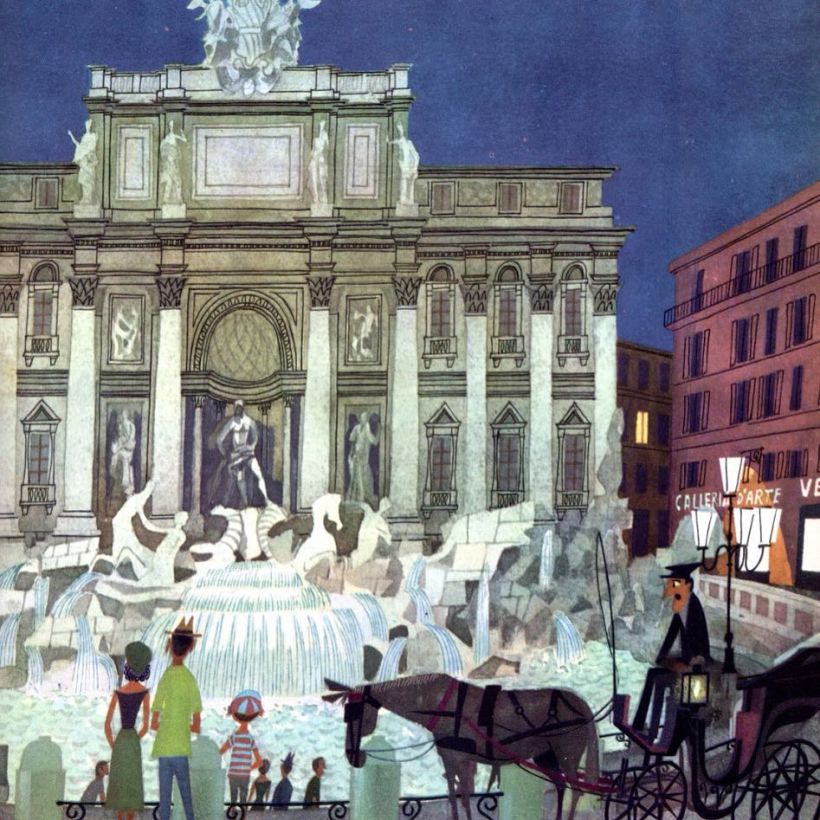
Katsushika Hokusai
@katsushikahokusai
Katsushika Hokusai was a Japanese artist, printmaker, and painter who lived from 1760 to 1849. He is most recognized for his woodblock print series Thirty-Six Views of Mount Fuji , made in response to a domestic travel boom in Japan.
From this collection, one piece in particular stood out among the rest. The Great Wave Off Kanagawa is arguably the most iconic piece of work in Japanese art, and went on to inspire many 19th-century European painters.

Evan Hecox is a multidisciplinary artist and designer based in Colorado, whose work often takes inspiration from travel.
He has a particular talent for capturing the mood and feeling of a place or moment in time, as well as giving new life and beauty to objects that are often overlooked or dismissed as mundane.

Tom Haugomat
@tomhaugomat
The Paris-based illustrator and director has had his work featured in Air France Magazine, Revue XXI, and Le Monde. His illustrations have a distinctly cinematic quality, perhaps as a result of his background making short films.
Perhaps the most interesting element of his work is that his characters have no facial features, although he is still able to convey depth and emotion through his use of color and negative space.
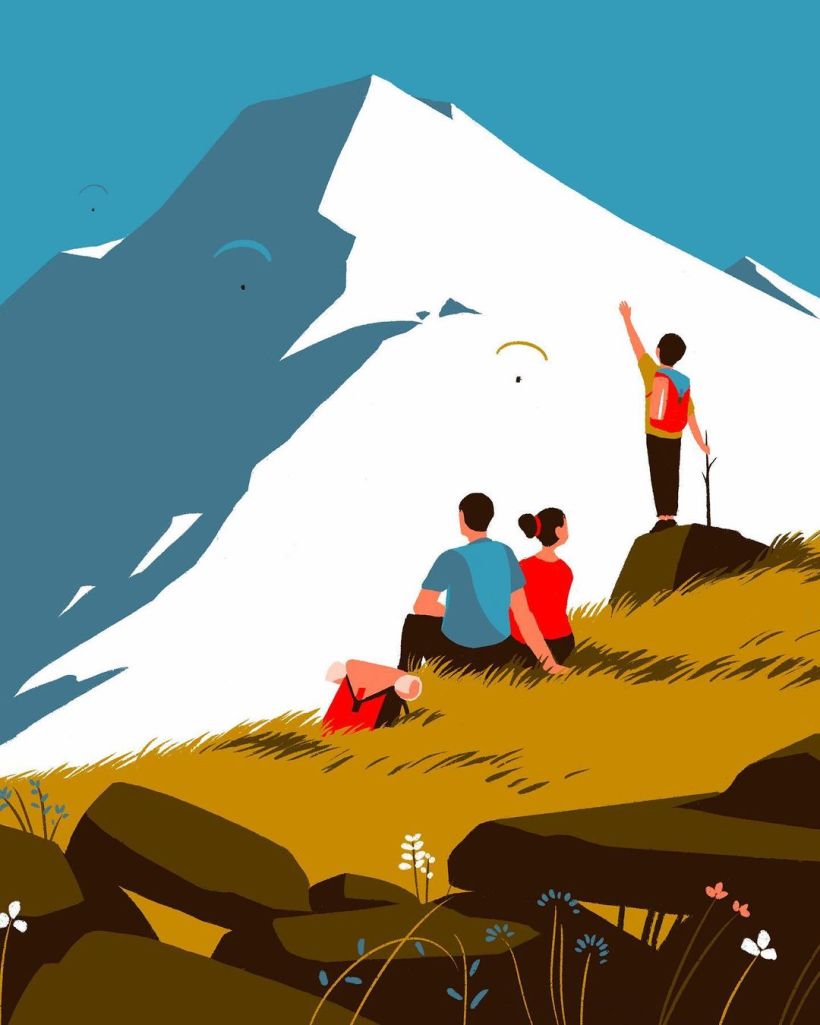
Josh Cochran
@joshcochran
This Grammy-nominated, Brooklyn-based illustrator has clients including Adidas, Apple, and The New Yorker , and he currently teaches at the School of Visual Arts in NYC.
He is known for his bold colors, humorous drawings, and urban murals.
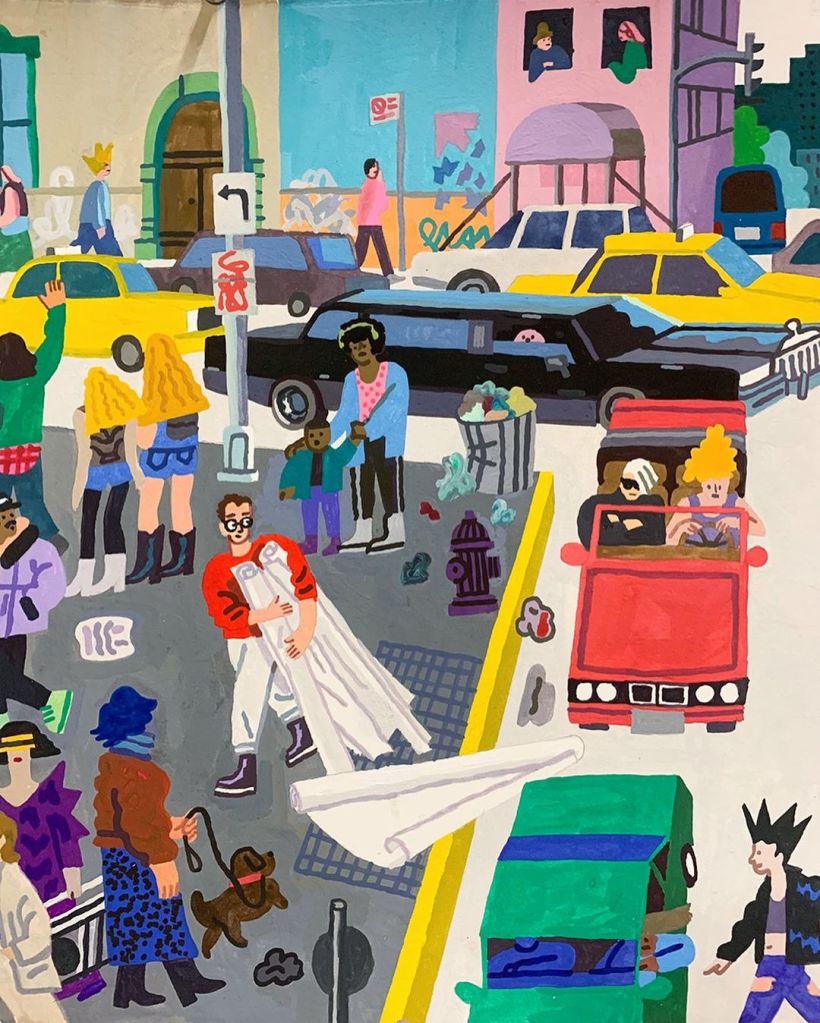
Bruno Mangyoku
@brunomangyoku
Bruno Mangyoku has worked as an illustrator and animation director who is greatly influenced by American graphic novelists such as Daniel Clowes and Charles Burns.
He uses a limited, yet highly contrasting color palette, focusing primarily on character design and silhouettes.
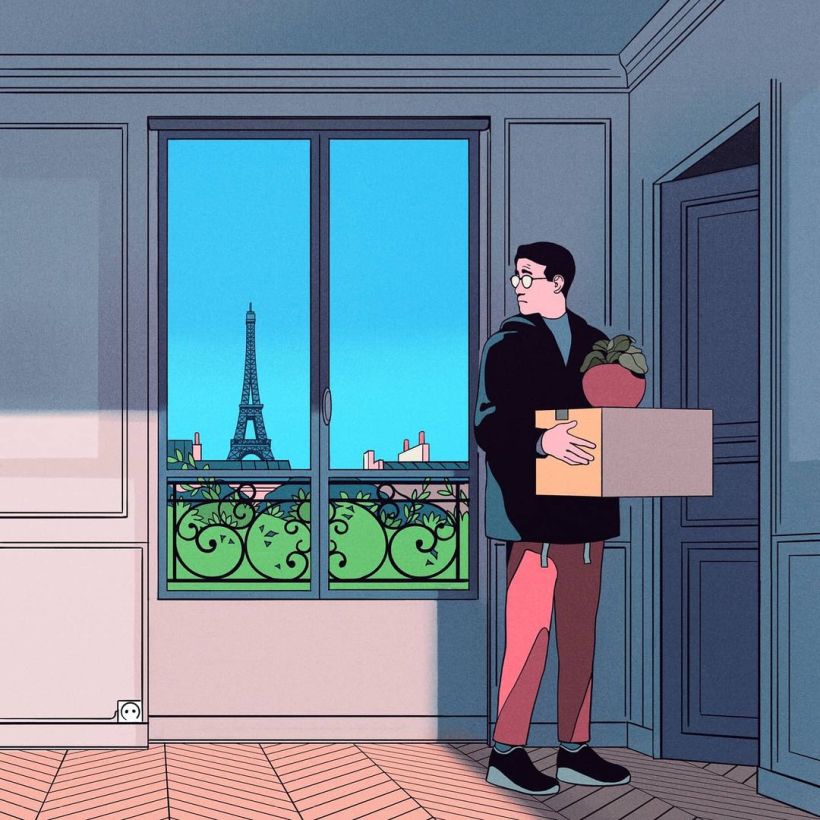
Hokyoung Kim
@hokyoungkim_
The South-Korean artist and illustrator lists clients including The New Yorker , The Washington Post , Apple, and Disney.
She finds inspiration in the Japanese comics and animations she grew up watching, and her work focuses on transmitting a strong sense of mood and atmosphere.
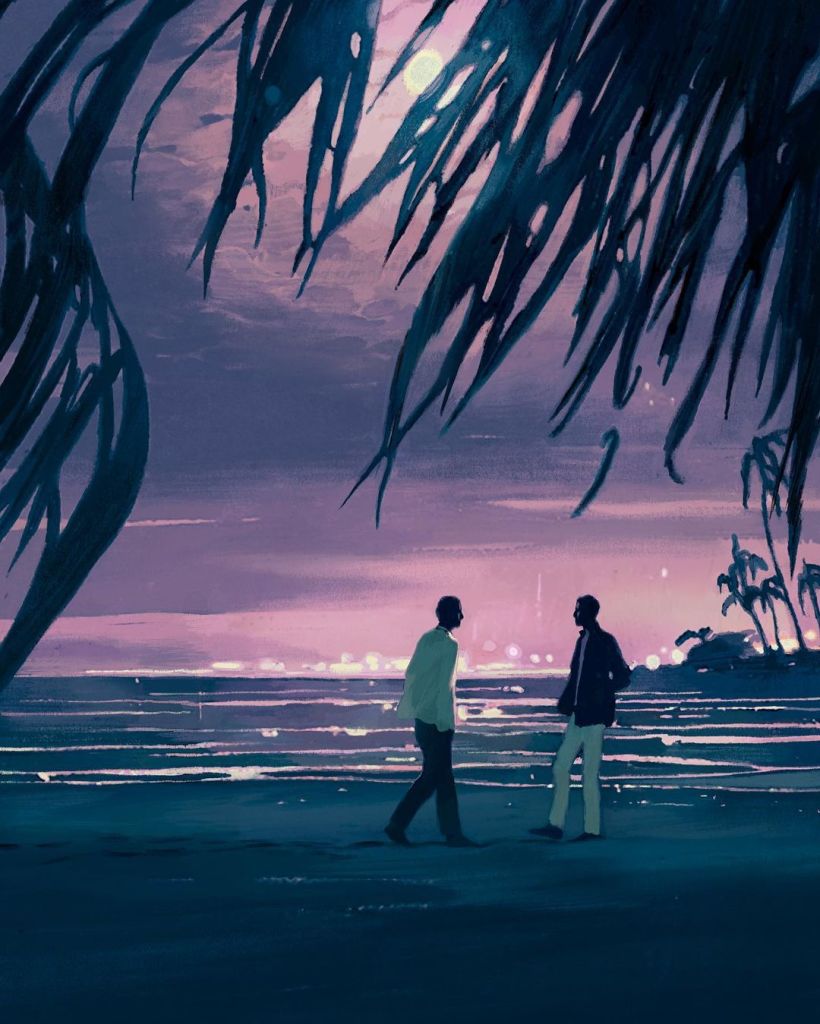
STRAUTNIEKAS
@strautniekas
The freelance illustrator studied at the Fine Arts Academy in Vilnius, before working in advertisement, animation and graphic design, with clients including the Royal Mail, The Independent , Penguin Random House.
His retro style, with soft colors and lines, lend him his unique style.

Christoph Niemann
@abstractsunday
Christoph Niemann is an illustrator, graphic designer, and children’s book author most known for his Sunday Sketches , quirky and humorous illustrations that take everyday objects and turn them into something unexpected.
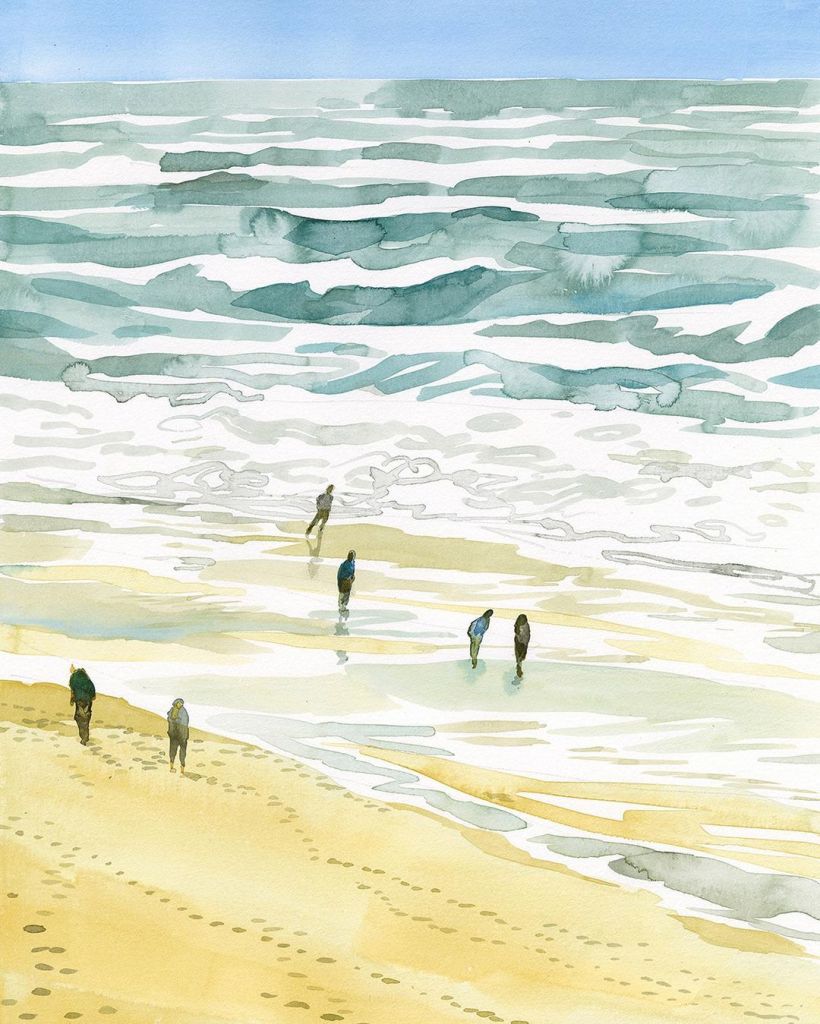
Jon McNaught
This London-based cartoonist, illustrator, and printmaker has clients including Penguin Books, Faber, The New York Times , and The Wall Street Journal .
His skill lies in taking the mundane and everyday and turning them into works of art, using simple shapes and a limited color palette.

If you enjoyed this references and want to know more about travel illustration, don't miss Alex Green's course Travel Illustration: Recreate your favorite place and learn digital illustration techniques with a splash of acrylic paint to create artwork inspired by a photograph of a place you love.
You may also like:
- What Is an Illustrated Life Journal and How to Start One? - Create a Travel Sketchbook Without Leaving Your House, with Powerpaola - What Is an Inspiration Board and How to Create One for Your Bullet Journal - Exploratory Sketchbook: Find Your Drawing Style , a course Sarah van Dongen - Lifestyle and Travel Photography , a course by Julia Nimke
Recommended courses

Botanical Watercolor Illustration: Cross-hatching Technique
A course by Vincent Jeannerot
Master the art of botanical watercolor! Learn cross-hatching technique, color selection, and water management for stunning artworks.

Watercolor Painting: Naturalistic Birds and Wildlife Art
A course by Marcellus Nishimoto
Discover the art of watercolor painting with a focus on naturalistic birds and wildlife. Elevat your skills and improve your technique.

Watercolor Fashion Illustration: Silhouette, Color and Flow
A course by Jessica Durrant
Bring fashion illustrations to life by experimenting with watercolor. Learn the best artistic techniques to create truly original fashion drawings.
- Follow Domestika

Keeping a Travel Sketchbook: Ideas for Artists
Keeping a travel sketchbook is a great way to document your travels and discoveries. Track the places you went, the people you met, the experiences you had. Travelling is one of the most creatively inspiring things you can do, with constant new visual and sensory input.
It can also be a creative outlet for exploring new ideas and techniques. Here are some tips for getting started with your own travel sketchbook.
Disclaimer: Fine Art Tutorials is a reader supported site. When you make purchases through links on this site, we may earn a small commission at no extra cost to you.
Travel sketchbook tips
Here are some tips on how to approach keeping a travel sketchbook and some tips on how to draw and paint when you’re out and about!
Choose the right sketchbook
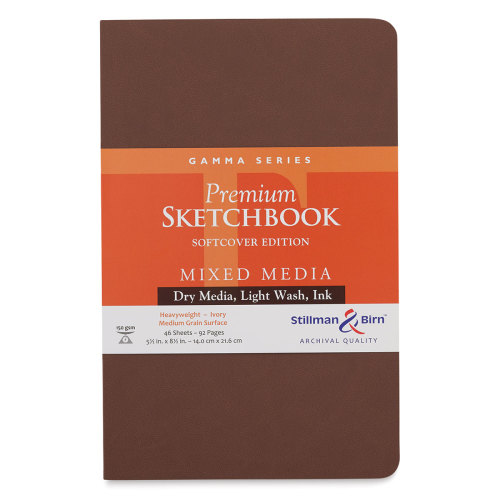
Look for a sketchbook that is small enough to carry with you everywhere, but large enough to hold all your sketches. Hardcover notebooks are ideal for travel sketching because they offer more protection from the elements. Stillman & Birn sketchbooks are lightweight, yet high quality.
Stock up on supplies
Before you hit the road, make sure you have all the drawing supplies you need to document your trip. Pencils, pens, watercolours, and travel-sized journals are all essential for travel sketching. If you prefer painting to drawing, bring all the necessary supplies to clean up afterwards.
Try using different mediums
Is graphite pencil your usual go-to medium? Try using charcoal! You can get some fantastic charcoal supplies , like powder charcoal that you can brush on the page.
Another great medium to travel with is gouache paint . Gouache is a type of watercolour, but is more opaque, so you can build layers of colours and highlights. It’s a versatile medium that is lightweight and easy to clean—perfect for travelling.
Read more about how to travel with different paint mediums in our travel art supplies guide .
Get inspired

When you’re on the road, be on the lookout for interesting places, and things to sketch. Take photos to reference later, or jot down notes about what caught your eye.
Don’t be afraid to experiment
Travel sketching is the perfect opportunity to experiment with new mediums and styles . Don’t be afraid to try something new, you might be surprised at the results.
Take a reference photo

You don’t have to complete a whole painting or drawing on location. Take a photo when the light is right and complete it later. That way, you can capture the essence of the scene with a sketch and spend time on it when you have time.
Vary your subject matter

If you’re used to painting landscapes, why not try painting or drawing a cityscape, or a building in the landscape. You could also diversify the subjects of your artworks by drawing a busy scene, including some of the people you see passing by, to give the artwork a sense of liveliness.
Note the date and location of your sketch
A travel sketchbook is like a book of memories. In it, you can document your interpretation of a scene, including the weather, people, atmosphere and main details you noticed. Even if you come back to paint or draw the same place again, no two drawings will look the same! Therefore it’s important to note the date and specific location of your sketch. Afterall the whole point of keeping a travel sketchbook is keeping a log of where you been and what you’ve seen in each location.
Let go of perfectionism
A sketchbook is a place to record your first response to a scene, to experiment and even to improve upon your plein air painting skills.
Let go of creating a perfectly polished sketchbook and instead focus on representing your sensory responses. The sketchbook page should trigger memories of the location, which you can even choose to make a larger canvas painting out of at a later date.
Store your sketchbook
If you use water based paints in your travel sketches, consider putting your sketchbook in a waterproof bag to protect it. So if you take it backpacking and it gets wet, your drawings and paintings will be preserved.
Travel sketchbook ideas
You might naturally feel inspired to sketch whatever you feel most drawn to on your travels. However, sometimes it’s difficult to know what to focus on! Here are some ideas for your sketchbook, so you can mix it up, make a theme and record as much as possible.
Draw the flora and fauna

If you spend a lot of time hiking or out in nature when you’re on your travels, you’ll know that one of the best things about it is spotting new animals and plants. Dedicate pages in your sketchbook to documenting your sightings, whether that’s birds, flowers or larger animals!
Draw the architecture of a new city

New city, new buildings! Whenever you travel to a new place, one of the first things you’ll probably want to do is explore the streets and take in the architecture. Whether you sit and draw La Sagrada Familia in Barcelona, or some random buildings you found off of a main street, architecture is an art form in itself. It’s detailed, complex and tells a story of a city’s history.
Documenting this in your travel sketchbook will give you a fantastic visual record of your trip. You could even write some facts about the buildings you go to see. This can enrich your experience of a city, as you find out more about how it was built.
Paint a crowded scene
One of the hardest things to do when painting or drawing is to show movement. This can be even harder when you’re trying to do it on location! But by taking a few minutes to sketch a busy scene, you can practice depicting moving subjects.
This might sound daunting, but it doesn’t have to be. Focus on one thing at a time, such as the way a person is walking, or the way their clothes are billowing in the wind. By breaking it down into smaller chunks, you can create a sense of movement without getting overwhelmed.
Capturing the people and energy of a bustling city is just as interesting as drawing in nature!
As well as painting or drawing people, try to include some of the background too. This could be buildings, trees or even just the sky. All of these things add to the story of your travel sketchbook and make it more interesting to look back on.
Create a cover for each location
For each new place you visit, you could create a cover page, almost like a new chapter in a book. Add some lettering to the page to show where you are. You could even leave a page blank before your other sketches of the city, then come back to it once you have more inspiration of how to sum up the area you stayed.
Create a sensory piece
What can art do that photos can’t? Drawings and paintings can capture the atmosphere of a scene better, and therefore better elicit memories of your sensory responses at the time.
You could even include some of the local produce to colour your drawings. For example, you could crush up a flower petal into a paste to make pigment and paint it on the paper. Or do the same with the local coffee. If you create art with items you find where you travelled, it can strengthen the connection you have to the place.
Draw or paint a self portrait in each location

This travel sketchbook idea is less about the scene around you, and more about your reaction to it. What did this place make you feel? How has travel changed you?
A self portrait can be a way of representing these emotions. They don’t have to be literal portraits, they could be more abstract or even just a series of colours and shapes that you associate with your travel experience.
Whatever you choose to do, have fun and let your creativity flow!
Visit the national parks

If you’re touring the US, you could stop off in some of the national parks. Each park has its own distinct topography, flora and fauna. Capture the essence of this in your sketchbook.
Every country has their own national parks and areas of natural beauty. If you visit them, make sure to pack your sketchbook.
Paint a night scene
Cities can look totally different at night, it’s when most cities come alive!

Whether you’re painting your own rendition of Starry Night, or Cafe Terrace at Night, or painting something entirely different. Capture the glow of the street lamps over a cobbled, wine bar lined street in Italy, or the moon over the ocean in Hawaii.
Find the perfect viewpoint

This might take some trekking! Find a viewpoint that overlooks the city or area you’re staying it. Take some time to make your sketch, capturing the horizon. Equally, you could go and find the best viewpoint of a famous monument in the city. Find more sketchbook ideas in our guide.
Travel sketchbook kit
Now that you’ve got some ideas and know how to approach your travel sketchbook adventure, you need to make sure you have the right supplies!
The sketchbook you choose will depend upon your size requirements as well as the medium you use. If you like to work with water based media, such as watercolour or gouache, make sure to choose a sketchbook with thick pages.
The Stillman & Birn Gamma Archival sketchbook is a high quality book, with 150gsm thick pages that have a smooth vellum finish. Use this book with mixed media, such as pencil, ink, gouache or watercolour. The pages are stitched together, so you can make double page spreads. Stillman & Birn books come in a variety of paper types and sizes, so you can choose the best one for your needs.
If you want more sketchbook recommendations, check out our guide on the best sketchbooks for artists .
Drawing media
A couple of graphite pencils in different softness levels, an eraser and a sharpener is all you really need to start drawing. However, if you want to add colour to your piece, consider taking a set of gouache paints . You don’t need too many supplies for gouache painting , just a brush, a water cup and the paints.
Another way to add a splash of colour to your travel sketches is with coloured pencils . Watercolour pencils are a great option, as they remain dry until activated with water. So they’re easier to transport and less messy to paint with. You could also take oil pencils or pastel pencils to create coloured drawings.
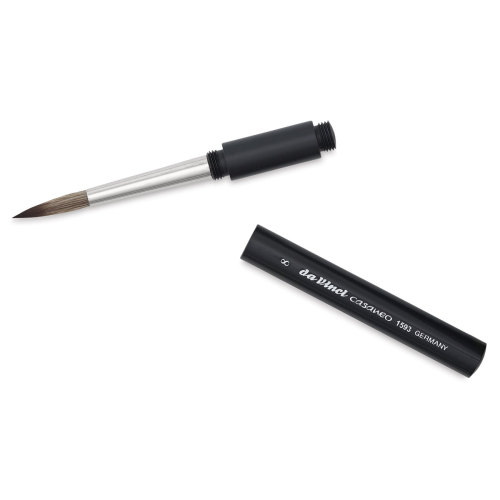
If you do decide to take some paints with you, you’ll need some brushes too. Get a watercolour travel brush like this da Vinci Casaneo, which is a synthetic yet soft and absorbent brush that can render excellent details and create wonderful washes.
If you want to see our full review of travel art supplies , check the guide!
Painting en plein air
Painting on location, or en plein air as it’s also called is a big part of keeping a travel sketchbook. It’s the best way to capture a sense of place and the feeling of being there.
When you’re painting outdoors, you need to be quick because the light changes constantly. So it’s good to have a plan before you start painting. First, decide what composition you want to paint. Look for interesting shapes, colours and textures. Then, decide what colours you want to use. Once you have your plan, start painting!
If you want to learn more about painting en plein air, check out our guide here.
Have fun with it!
Your travel sketchbook should be a reflection of your own personal style. So have fun with it! Use bright colors, experiment with different mediums, or even add in photographs.
We hope you enjoyed this travel sketchbook guide and that it’s inspired you to get out there and start sketching!
What are you going to include in your travel sketchbook? Let us know in the comments.
If you’ve found anything on this site especially useful, you can make a donation to me through PayPal. I take a lot of time to research and write each topic, making sure each tutorial is as detailed as possible and I make all my content freely available. Any small donation (even the price of a cup of coffee!) can help me to cover the running costs of the site. Any help from my readers is much appreciated :).
Follow the link in the button below to support this site.
Leave a Reply Cancel reply
Your email address will not be published. Required fields are marked *
Save my name, email, and website in this browser for the next time I comment.
- How To Travel Sketch? Tips, Tricks, & Techniques For Beginners
Travel Sketching is not only relaxing and rewarding but also an awesome family activity during travels.
In this blog post learn about what to put in a travel sketch kit, awesome travel sketching techniques for beginners and tricks to encourage kids to begin their journey of travel sketching.
How to Create Your Own Travel Sketchbook
Pausing to see the delicate patterns of lichen on tree trunks in the Nilgiri mountains.
Becoming friends with a 5-year old Vietnamese boy in a village without a word exchanged between us!
Sitting inside a bamboo grove, silently.
Watching a tour guide’s face light up.
Getting authentic local food and travel tips.
Being zen while waiting in airports and stations.

I’ve had all these experiences and many more through travel sketching.
And, that’s why I love sharing it with others and getting them started on their own sketching journey. Here’s my take on how to get started with travel sketching.
I have included step-by-step photos from a sketching session I did in Sirsi, Karnataka.

Travel sketching is an awesome family activity. It gets children to observe and remember a travel destination. And of course, you’ll have a unique souvenir for every travel

Travel Sketching slows me down, brings everything into sharp focus, and I lose myself in the moment. Sketching has truly enriched my life. Seema Misra, www.lighttravelaction.com Tweet
Explore these awesome washi tapes on Amazon

If you love slow travel, try your hands at Travel Sketching, Painting, even Yoga. The following 3 posts will keep you creative in your Sojourn.
- Are You Embarrassed By Your Painting Skills? Here’re Easy Painting ideas & Tips!
- Are you bored? Looking for ideas to fill in your blank journal? Don’t’ get intimidated by blank papers staring back at you. I teamed up with the talented artist Malabika Saikia and here are 15 of our favorite notebook ideas! 15 Awesomely Creative Things To Do In Your Blank Notebook.
- How about keeping fit while you travel? Here is a curated list of 10 Yoga asanas or postures that are as good for the beginners as for the advanced practitioners.
Travel Sketchbook ideas
People often say “I can’t even draw a straight line. Forget about sketching.”
I tell them, “ That’s great. You don’t need to draw straight lines.” There’s no such thing as a born artist. It is all about practice, practice, and more practice.
Look for inspirations around. If you find your zen moment of producing a sketch on the spot, go ahead sketch it out. If not, look for small collectibles like dry leaves, ticket stubs to paste in your travel sketch book for inspiration to strike you later.

In the above image, we had hiked up a hill and it was absolutely beautiful and surreal there. There were prayer flags strewn all around. I picked up a few and pasted them in my sketchbook.
Click on Images below to Buy on Amazon

Putting together a travel sketch kit
A travel sketching kit must be a collection of the basic tools required for making a sketch. Also, I have found having limited supplies encourages me to be creative. Such as, mixing two different mediums.
Here’s what you will need:
- Black pens with waterproof ink
- Colour pencils
- Pencil sharpener
Yes, I’ve deliberately left out the ruler and eraser😊
You could also keep a box of crayons, some watercolor pencils, and a glue stick. If you have smaller children, avoid carrying watercolors. For older children, a small watercolor pan and some water brushes are perfect. Keep it small, simple, and light.

A5 size sketchbooks with thicker paper are a good choice – they fit in everywhere and are not too small for landscapes.
Pro Tip: I like to keep all my art tools in a sling bag. This helps me access my art kit easily.
5 Awesome Tips for Travel Sketching for Beginners
Choosing a subject.
Start with a tiny step – don’t try to draw the entire forest or city around you. Choose a small window of a house, a dry leaf on the ground, or an interesting branch.
Long waits in airports can be used to draw the people, bags, food stalls or simply the announcement boards. You could even draw maps to show the places you visited.

This is a small town in Sirsi, Karnataka . The blue roofs amid all the browns and reds interested me and I decided to sketch the road.
Outlining in pencil
Draw an outline of the object using a pencil. It does not have to be perfect – if something looks off, draw over it.
Forget if the drawing “appears correct” – the idea is to capture the object in your own style and have fun while doing it.

Adding in the details using a black pen
Now that you have a basic frame done, add in the details using a pen. Encourage children to add some text to capture the place, date, the sounds around you, or any other details.
You could paste things around your sketch – a ticket stub, a leaf, restaurant bills, bits of pamphlets.
Ask a local to teach you how to write a few words in their dialect on your sketchbook.

There were some changes from the pencil outline. However, I didn’t erase anything.
Click here to read 11 Commonly Asked Questions by Painting Beginners and also get 5 DIY easy painting ideas for Beginners Step by Step.
Adding the final touches with colours
Use a mix of different colours to add life to the sketch. If you are in a hurry, colour in the most prominent bit – the red bricks, a green tree, or that yellow dress. This will save some time while capturing the essence of the place.

You’ll notice I’ve added some blue in the sky which is not there in the photograph. As an artist, you can take liberties while making a travel sketch 😊

Doing art at home or at school is different than working in a public area.
When I sketch during my travels, people often stop to see what I am drawing and want to talk about it. I remember, when I started travel sketching, I’d worry that my drawing is not good. I felt people passing by were judging me.
Eventually, I stopped worring about all those things. I’d simply draw. And that is when I enjoyed outdoor sketching the most!
So, I’d say be kind to yourself.
Don’t judge what you draw.
Just go with the flow.

Drawing on different types of paper, like newspapers, can be a lot of fun.
Often the joy is in making the art and not worrying how it turns out! There is no perfect bird … just the one you have drawn. Seema Misra, www.lighttravelaction.com Tweet

Travel Sketching – Capturing the Feel of a Place
Marco Bucci shows the Process and gives awesome ideas for sketching places from life. See the video for the art of composition, color, focal point, feel, etc.
Travel sketching for children
Encourage children to draw from their observation. Drawing from observation simply means drawing what you see. And, it is the essence of travel sketching.
Breaking the object into smaller shapes
For example, you are looking at a majestic British building and your daughter is stumped where to start drawing it. Ask, “What does the building look like? Do you see a rectangle with a triangle on top? Do the windows remind you of a shape?

Have fun with colors and collage. The above sketch always takes me back to the greenery of a tea estate.

Focus on the process not the outcome
Even if a child fails to colour inside the lines or draws a circle which is more of an oval, it is absolutely fine. Encourage the children to experiment with colours and shapes – give them the tools to draw but don’t tell them what to draw.

Making sketching fun during travel
Engage with your little story teller and ask her to describe the picture to you. Who knows she might have an interesting tale behind the picture and the colours used.
Last but not least, don’t forget to complement the little Picasos. It would be great if you could mention specifics, like “Wow, I love the way you have drawn that leaf.”

Do you find the thought of “Travel Sketch Journal” inspiring? Don’t wait for the next vacation to start travel sketching! Visit a park or museum this weekend, carry some sandwiches and try out your art kit!
Video on Travel Sketching Tips from Travel Sketchbook
In this video, Liz Steel shares lots of travel sketching strategies and tips while going through her sketchbook from her recent trip to New Zealand.
PIN NOW TRAVEL SKETCH LATER

Sharing is Caring! If you have liked reading the post please feel free to subscribe to email and share it with your friends and follow us on Facebook and Instagram.
6 thoughts on “How To Travel Sketch? Tips, Tricks, & Techniques For Beginners”
This one’s a lovely tutorial. My daughter is creative unlike me…haha…and she loves to sketch, paint and play with colors. I’d make her read this. Thank you so much for sharing.
Happy Sketching and happy traveling 🙂
I love this overview of your travel sketching. It’s another creative way to document your travels. You’re so talented! Thanks for the inspiration to start sketching (or at least improve upon my scribbles first).
Wow you are really talented. Travel sketching sounds awesome, but not many have the skills to create such beautiful pieces!
Thanks Sinjanag, this is a blog post and the sketches have been done by Seema Misra 🙂
This is such a lovely idea! I’ve never considered myself good enough to sketch a scene but you’ve broken it down really nicely, thank you 🙂 https://mcadventureblog.com
Leave a Reply Cancel reply
Discover more from light travel action.
Subscribe now to keep reading and get access to the full archive.
Continue reading
- Mastery Program
- Current Events
35+ Travel Sketching Ideas to Overcome Your Creative Blocks
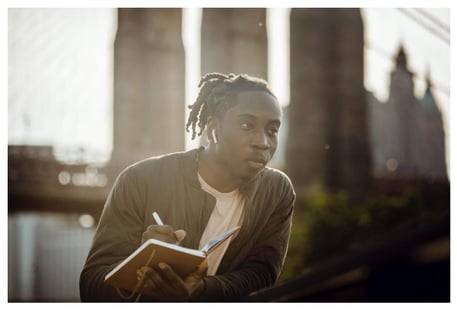
Photo caption: Your travel sketching adventures can take you from Athens, Georgia to the streets of New York City. Photo by Ketut Subiyanto from Pexels.
Student sketchbooks may count as one of the most underrated tools that art students have at their disposal for overcoming creative blocks .
Within their pages, students attending any of the art schools in Georgia can try out their must-have drawing supplies for travel sketching and for developing ideas for school art and design projects.
However, students who aren’t used to keeping a sketchbook are sometimes heard lamenting: “I don’t know what to draw!”
At Milan Art Institute, we actually offer students a solution for overcoming creative blocks. As school founder and co-owner, Elli Milan, says: Always have something to paint (or draw).
More specifically, Elli recommends that art students at the Milan Art Institute have at least 20 sources ready to paint or draw at all times.
Artists who take this advice never wonder what to paint or draw. They always have 20 pieces on the ready.
The MAI one-year professional certificate program, the Mastery Program , teaches students how to create all the painting and drawing sources they’ll need to work as professional artists.
That doesn’t mean, however, that art students who aren’t yet in the Mastery Program are out of luck.
These aspiring art students can parlay their love of travel sketching into a sketchbook filled with an abundance of drawing and painting prompts. These prompts can inspire visions of amazing works of art that have the power to change them and to change the world.
Drawing Prompts for Your Travel Sketching
The good news is, you don’t even have to travel out of town to fill up your student sketchbooks. Places like Oconee Forest Park delight the senses in the fall. And they’re close by.
These Athens, Georgia beauty spots are also filled with drawing prompts from the natural world. It’s the perfect place to practice some plein air painting and drawing.
Just a note to the students in our online art classes or who don’t attend a Georgia art school: These drawing prompts should help you fill your student sketchbooks, too, even if you don’t live in Athens. It just requires a bit of ingenuity and tenacity.
There’s more on that later...
You can also do this exercise in more than one place. For example, start in a national forest or park and then continue the exercise in town or even at the local pumpkin patch.
We do recommend that you draw anything that catches your eye while you’re out on your travel sketching adventure. The idea behind filling your sketchbooks with images from the natural world is to get you into the habit of really seeing the world around you.
It’s also important for you to notice the images that tug at your heart strings. These represent the things you care about and are one of the key components to developing your artistic voice.
If you do this, you’ll overcome your creative blocks and even have an overflow of ideas that you can turn into future art projects.
However, to help you out in case you’re really stuck, we provide you with a list of prompts for your travel sketching.
Traveling Sketching: Let’s Go on an Art Scavenger Hunt
Let’s call this activity an art scavenger hunt to make it even more fun. Basically, we’ve created a list of items you’re likely to find in the fall of the year.
The more of these items you find, the closer you are to fulfilling the requirements of the art scavenger hunt.
When you find them, spend a few minutes drawing these items in your student sketchbook. If you want to create a special travel sketchbook or journal to capture the memories of your autumn scavenger hunt in Athens, Georgia, that’s great, too!
Ideally, this exercise will give you so many fall drawing prompt ideas that you eventually fill more than one travel sketch journal. If you do, you’ll never run out of ideas for your class or professional art projects again.
Autumn Art Scavenger Hunt: Sketchbook Drawing Ideas List
Here’s a list of some suggested fall travel journal prompts for this exercise.
A List of Must-Have Art Supplies for Your Travel Sketching Adventure
Anyone who attends an art school in Georgia - well, anywhere, really - should have the opportunity to try out a variety of art supplies. Every medium handles differently and produces a different effect.
Anothing element that makes an artist’s voice unique is the art materials that a particular artist uses. The more you know about your supplies, the better chance you have at developing your voice.
We bring all of this up, because we’d like to recommend a must-have art supplies list for you to take on your adventures in travel sketching. Travel sketching gives you an opportunity to try new supplies in a fun, adventurous kind of way.
We tapped one of our amazing art coaches and mentors, Esther Franchuk , to get a list of art supplies. Esther’s list includes sketchbook recommendations, as well as drawing materials suggestions.
- Hand-book journal co. - WATERCOLOR SQUARE 8.25x8.25
- Talens Art Creation Sketchbook - Pocket size
- Paul Rubens Artist Watercolor Paints - Glitter Solid Colors
- Watercolor White Nights paint set, St.Petersburg, Russia
- Royal Talens C902 - ArtCreation Gouache set
- Refillable watercolor brush pens
If you can’t find brands above, just keep in mind that you might generally like to bring along:
- Pencils, erasers and other dry drawing media
- Watercolor pencils
- Colored pencils
- Watercolor paint brushes
- Sketchbooks made with watercolor paper
- Anything that’s easy to use in all kinds of weather
- Portable chair
One final note about your must-have travel sketching supplies: You may want to experiment with these materials in your student sketchbooks before you go out.
It’s likely that you’ll gravitate toward some supplies more than others. Knowing what those are allows you to eliminate some of your art materials from your art travel pack.
This keeps things light. It also reduces the number of supplies you’ll have to carry around with you when you’re out sketching on location.
If you’re still not certain about what should go into your travel sketchbook or journal, this video that Elli and Dimitra Milan did about drawing and painting on location may help you.

Photo caption: A trip to the museum fills your travel sketchbook and gives you a foundation in art history. Image by OpenClipart-Vectors from Pixabay.
Art Scavenger Hunt Ideas If You Get Rained Out…
Sometimes, our best efforts get rained or snowed out. That’s okay. The fall art scavenger hunt is adaptable. Some urban sketchers take their travel sketchbooks to coffee shops and sketch the streets outside the windows.
Really, you can set up your portable art studio in any building that has big windows. You may have to move around a lot if you want to try to get everything on the list into your books.
(Remember, we also encourage you to find your own sources from the drawing prompts that nature provides for you, so it’s okay to abandon the list above. As long as you’re putting ideas into your sketchbooks, you’re golden.)
Finally, there is a creative alternative that you’ll probably like.
Art museums are known for their scavenger hunts in some cities. Museum scavenger hunts encourage people to look closely at art, because museum participants are given a list, like the one above.
As art scavenger hunt players wander through the art museum, they are encouraged to find items on the list in the paintings.
You as art students can take this one step further by drawing the work of art (or portions of it) you found your scavenger hunt item in. They don’t have to even be full-blown drawings. Small sketches are fine to get you started.
This activity does a couple of things. First, it allows you to put powerful and inspiring images in your student sketchbooks that can inspire works of art down the road.
Second, it allows you to get some art history lessons in. Exceptional artists understand their place in art history. The artists that were and are most notable in history are culture warriors and influencers.
Looking at and sketching these works allows you to peer into their creative processes and adopt a new way of seeing. By immersing yourself in their virtuosity, you subconsciously develop your sense of taste and ultimately improve your art.
Third, seeing great art elevates your taste levels, which in turn, motivates you to continue to create art that has the potential to change the world.
Many museums allow art students to come in and sketch. However, it’s always best to find out ahead of time if you can come in and sketch. Always be sure to ask permission to bring your art supplies into the museum with you before you set out on your travel sketching trip.
Urban Sketching: Another Variation of Travel Sketching
The general gist of this blog post has concentrated on filling your student sketchbooks with images from the natural world. That said, you are not limited to staying on the hiking trails as you go on your art scavenger hunt.
Urban sketching, that is drawing on location, often in the city, has increased in popularity of late.
Here’s what the urban sketchers’ website had to say about the characteristics of urban sketching:
- It’s done on location and its purpose is to draw from direct observation.
- Urban sketchers can draw inside or out.
- Through drawing, urban sketching strives to tell the story of the places people live, where they travel and even about their surroundings closer to home.
- Each urban sketch captures a moment in time and is a truthful visual account of the scenes that the sketcher witnesses.
- Artists interested in urban sketching can use any kind of media: Individual drawing styles are celebrated!
- They share their work online, with the purpose of showing the world, “one drawing at a time.”
- Urban sketchers draw together and support one another in these efforts.
- While you can sketch alone, taking up urban sketching is a great way to sketch on location with other people. If you’re interested in finding a local chapter of urban sketchers, check out the urban sketchers’ chapter finder . Or check out their website to find out if there are any urban sketching workshops near you.
Final Words on Travel Sketching for Art Students
As an art school in Georgia that embraces traditional, as well as modern art techniques, we believe it’s important that art students learn to draw from life.
One easy way to develop this habit is to fill their student sketchbooks with images from cities, forests and even their own backyard. This practice sharpens art students’ technical skills.
But more than that, student or travel sketchbooks filled with visual prompts from the forest, the streets of Paris or even the local coffee shop can become stunning works of art down the road.
These images are powerful ways to help you get motivated and to push your drawing skills to the next level.
For More Drawing Tips, Check out the Articles and Courses Below:
If you want to learn to draw quickly, check out the Drawing Essentials class or the Beginner Art Program .
How To Draw a Self Portrait
Milan Art Institute
Subscribe to our blog, browse posts.
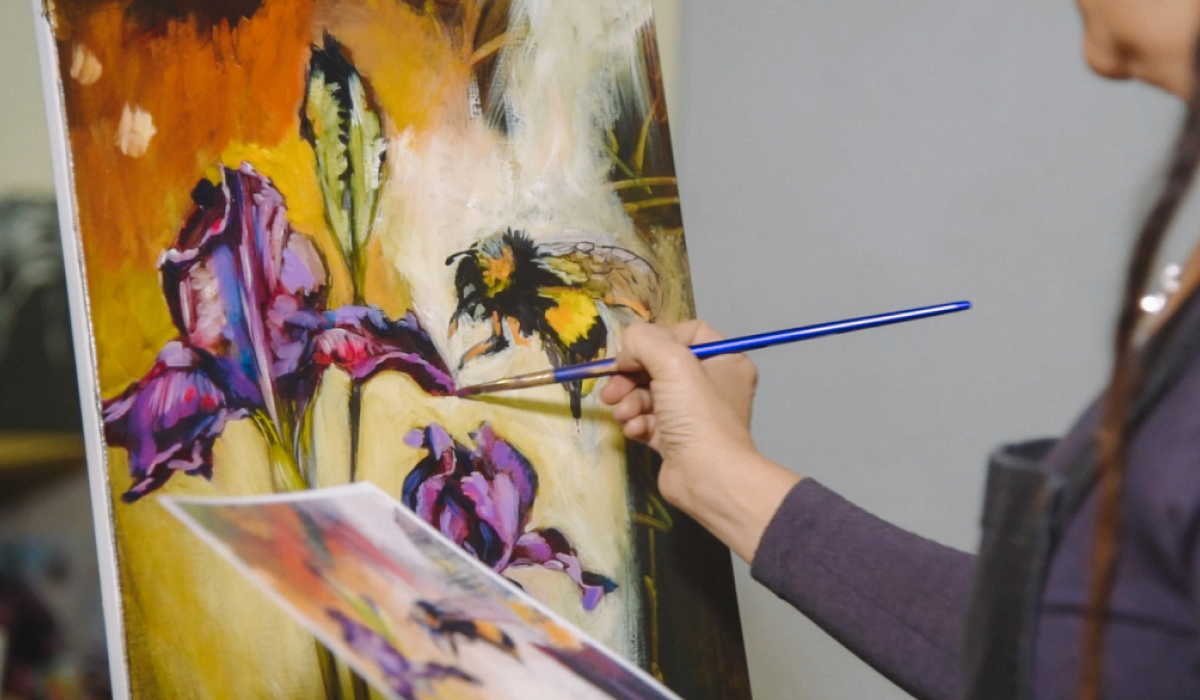
- February 2021
- January 2021
- December 2020
- November 2020
- October 2020
- September 2020
- August 2020
- January 2020
- December 2019
- November 2019
- October 2019
- September 2019
Browse by topics
- art inspiration (45)
- become a professional artist (38)
- art techniques (35)
- art tips (23)
- art tutorial (22)
- art history (17)
- art skills (17)
- hero artists (17)
- painting (14)
- art masters (13)
- art supplies (13)
- drawing (12)
- acrylic painting (9)
- sketching (9)
- art education (8)
- oil painting (8)
- sell your art (8)
- art marketing (7)
- art and travel (6)
- art fun (6)
- artist mindset (6)
- fine art (6)
- travel sketching (6)
- art business (5)
- art studio (5)
- artist brand (5)
- artist voice (5)
- holidays (5)
- professional habits (5)
- traveling (5)
- oil paint (4)
- professional artist habits (4)
- art career (3)
- art resources (3)
- doodling (3)
- professional artists (3)
- urban sketching (3)
- art school (2)
- art therapy (2)
- artist block (2)
- branding (2)
- cleaning (2)
- creative block (2)
- decorative market (2)
- surrealism (2)
- art entertainment (1)
- art galleries (1)
- art influencers (1)
- art markets (1)
- art photography (1)
- art portfolio (1)
- collecting art (1)
- coloring (1)
- composition (1)
- decorative art (1)
- eco friendly (1)
- environment (1)
- impressionism (1)
- mixed media (1)
- narrative art (1)
- plein air (1)
- portraits (1)
- price your art (1)
- right brain (1)
- success stories (1)
- symbolism (1)
- time management (1)
Related Posts
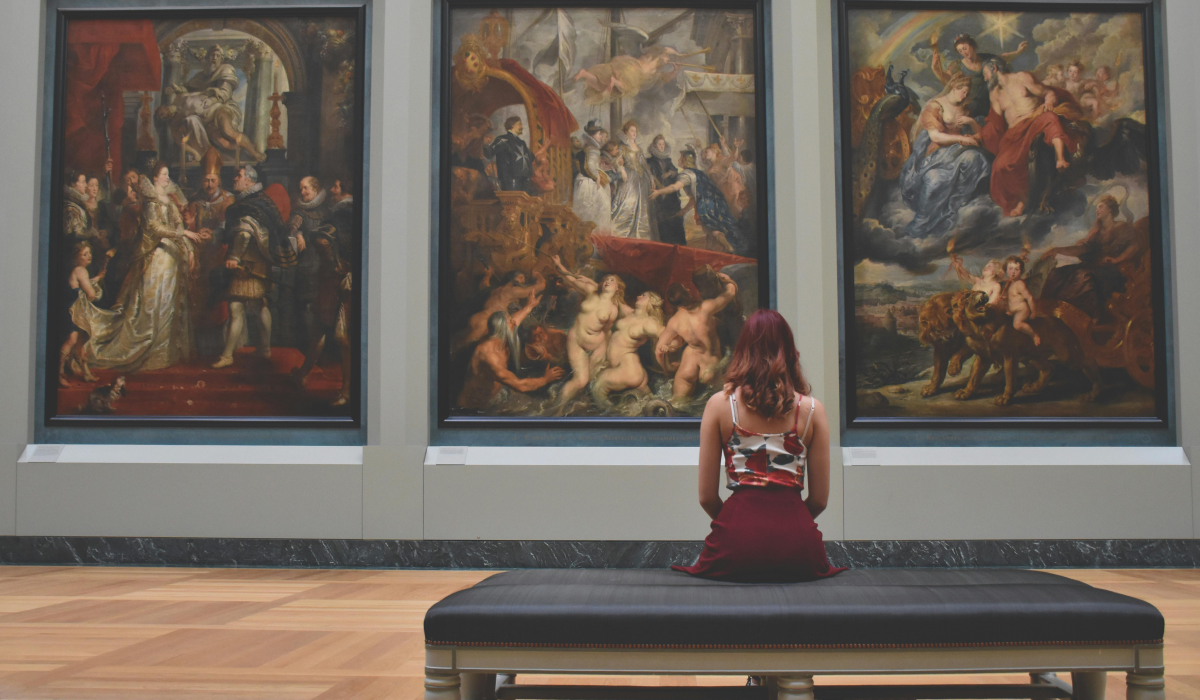
The Top 5 Reasons Why You Should Study Art History
Photo caption: As our society becomes increasingly mediated, the importance of art history cannot be overstated....
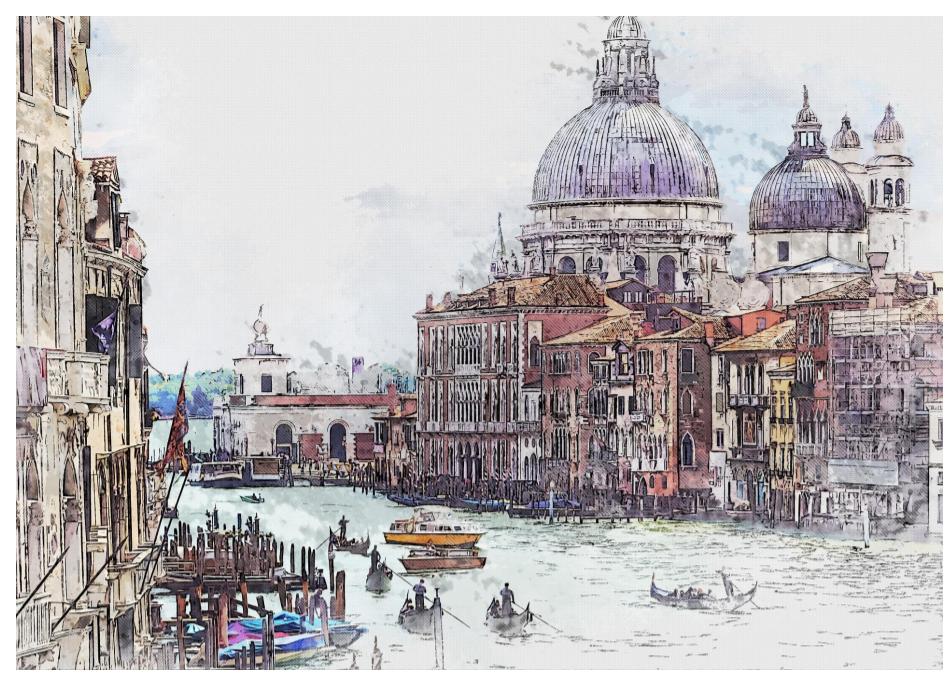
5 Reasons Why Artists Keep a Daily Sketchbook
Photo caption: If you’re into travel sketching, you can continue your daily sketchbook habit even when you’re on...
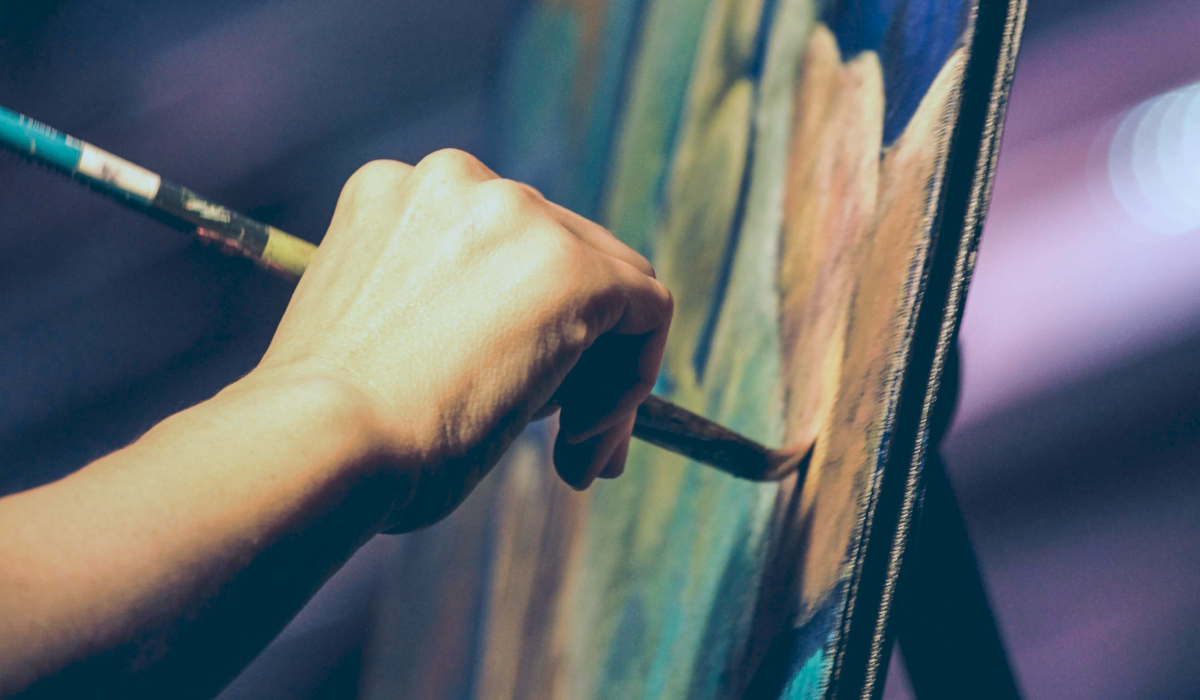
Becoming a Professional Artist: How to Develop Self-Discipline in 3 Steps
Photo caption: Finding artistic inspiration often starts with the simple act of going to your easel and having...
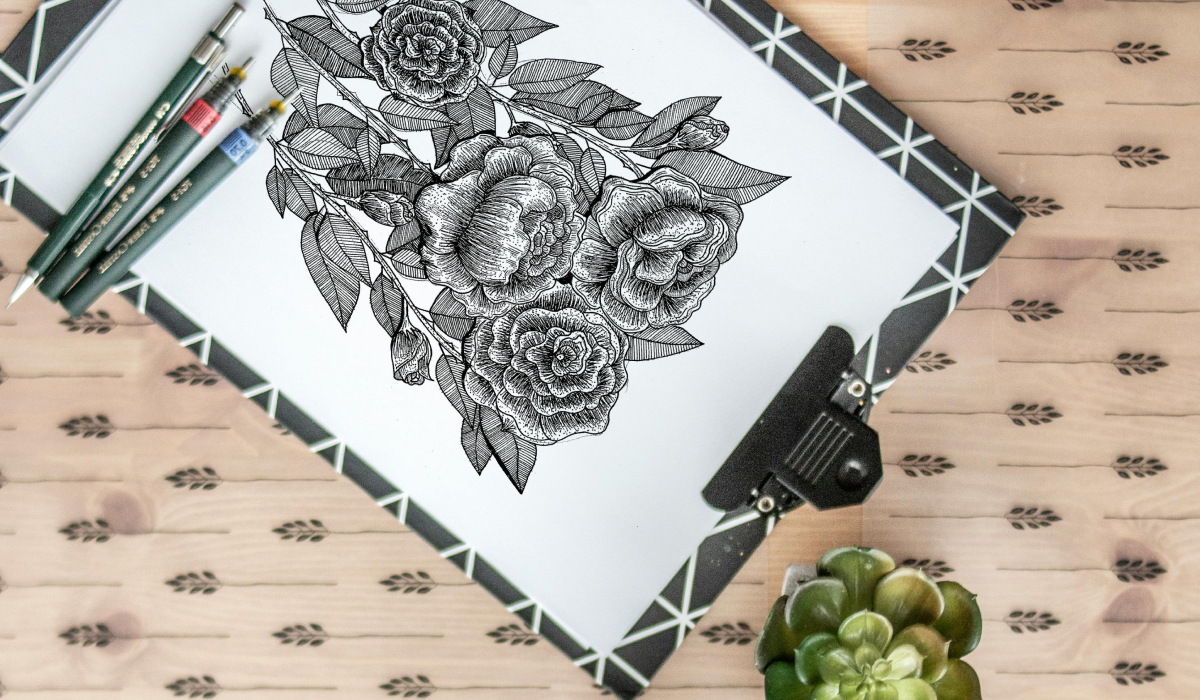
5 Drawing Games for Hours of Winter Night Fun
Photo caption: Drawing games, like Exquisite Corpse, show you what happens when you combine a bunch of silly...
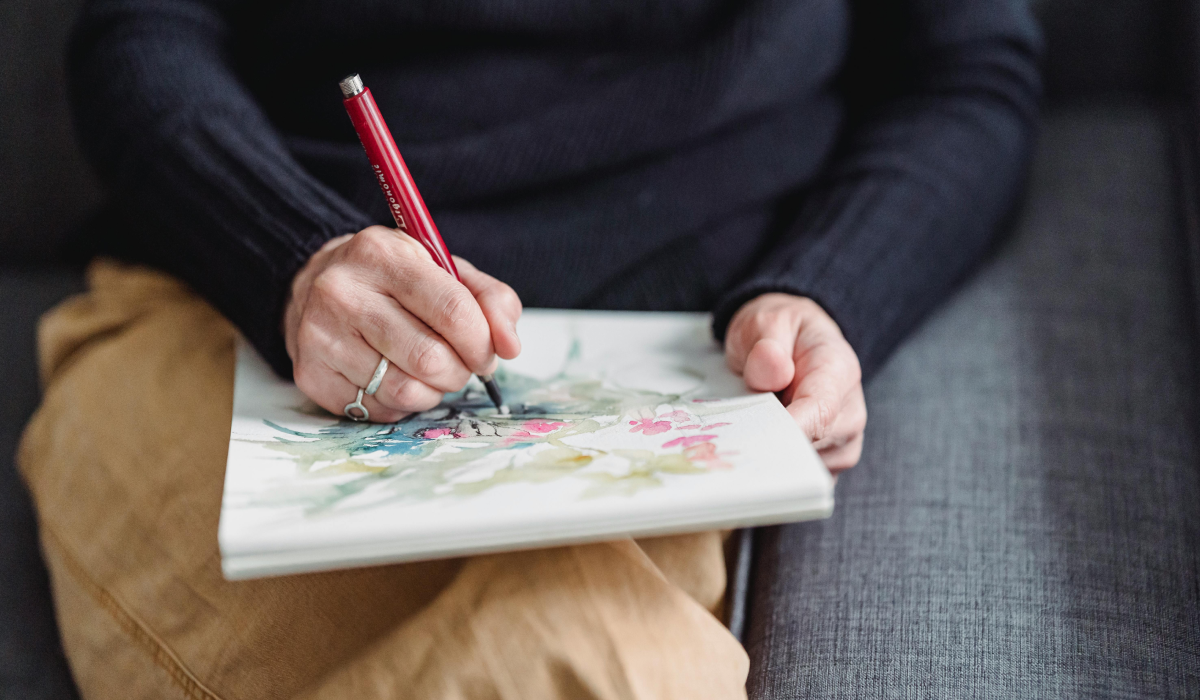
The Sketchbook Project: How to Get Motivated to Draw Everyday
Photo caption: Participating in The Sketchbook Project is an excellent way to encourage your daily sketchbook habit....
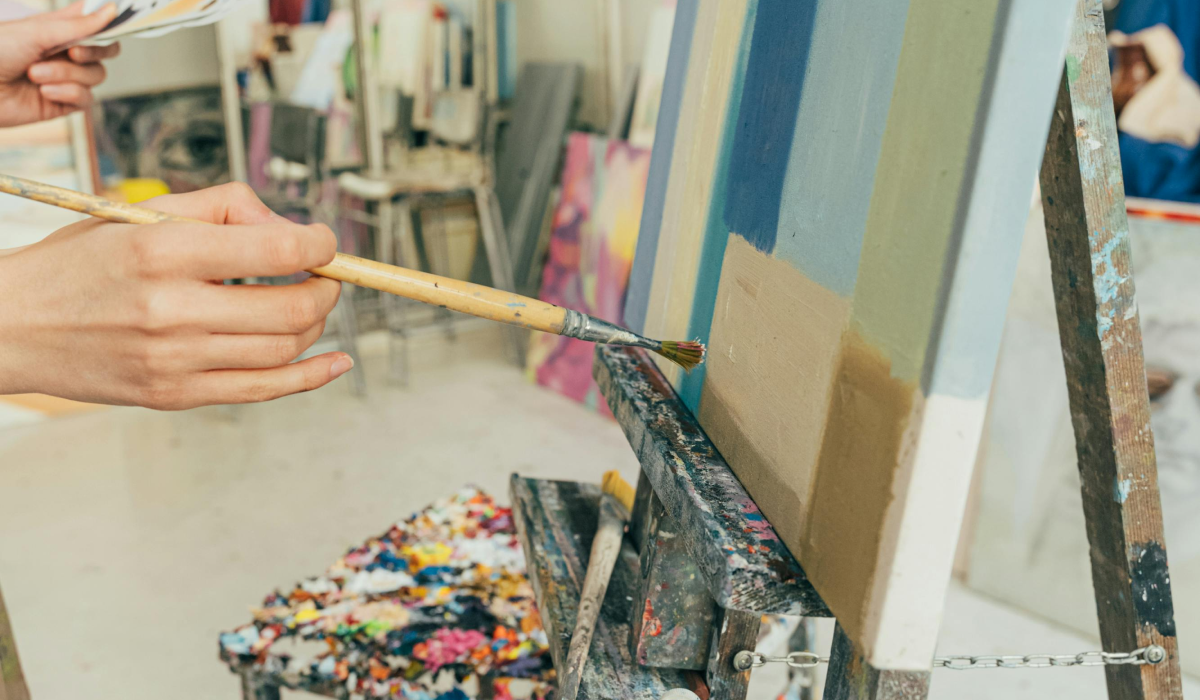
Art Schools in Georgia: What You Need to Know
Photo caption: Georgia art schools offer the serious art student training in both traditional and digital media....
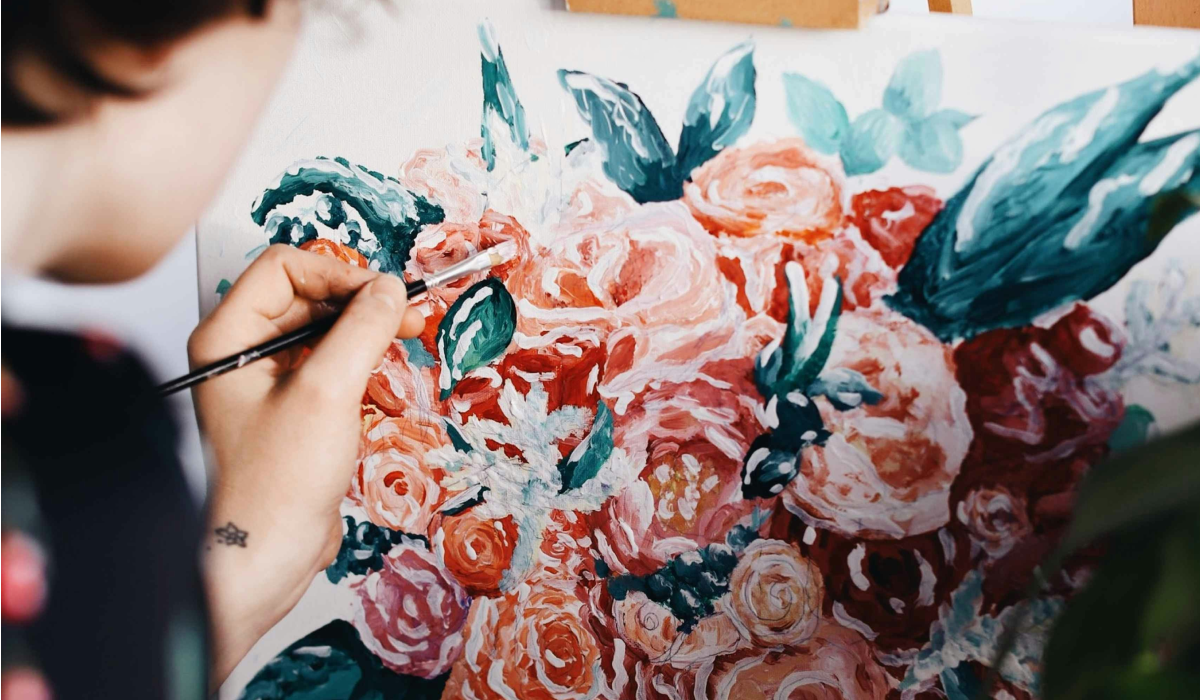
3 Reasons Why Skill Is Non-Negotiable
Photo caption: These Milan Art Institute students have the right idea: Masterful skills require masterful practice....
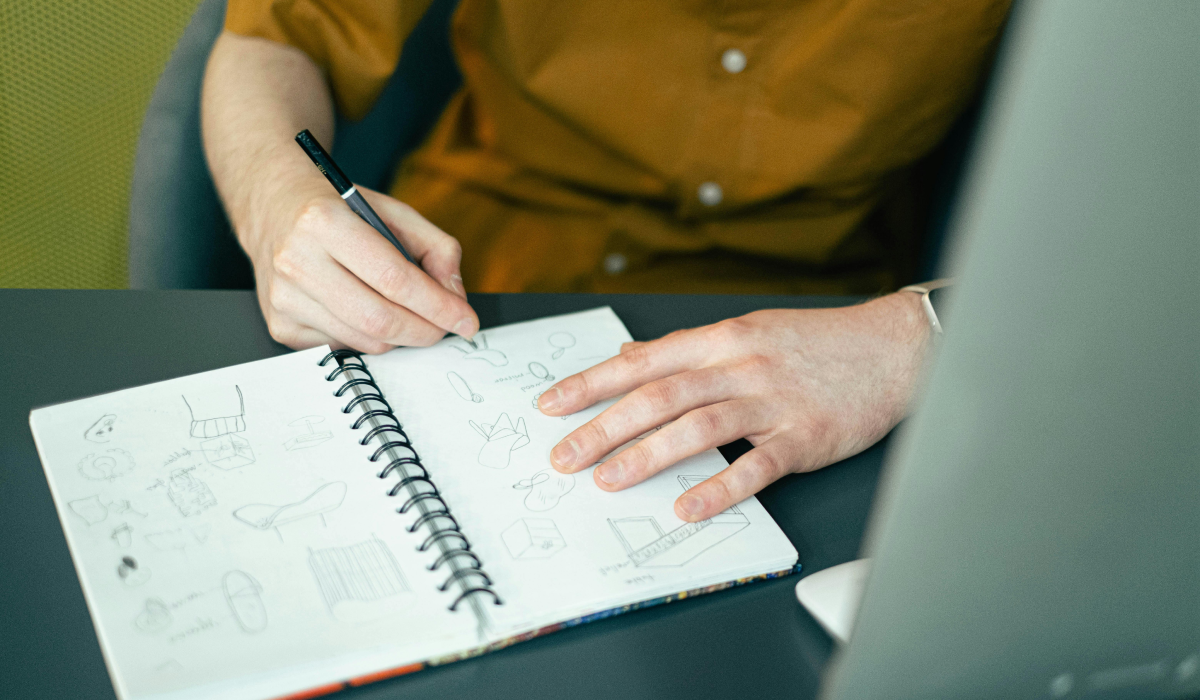
5 Benefits of Drawing and Doodling You Didn’t Know About
We’re an art school in Georgia. As such, it isn’t too much to expect us to understand the benefits of drawing and...
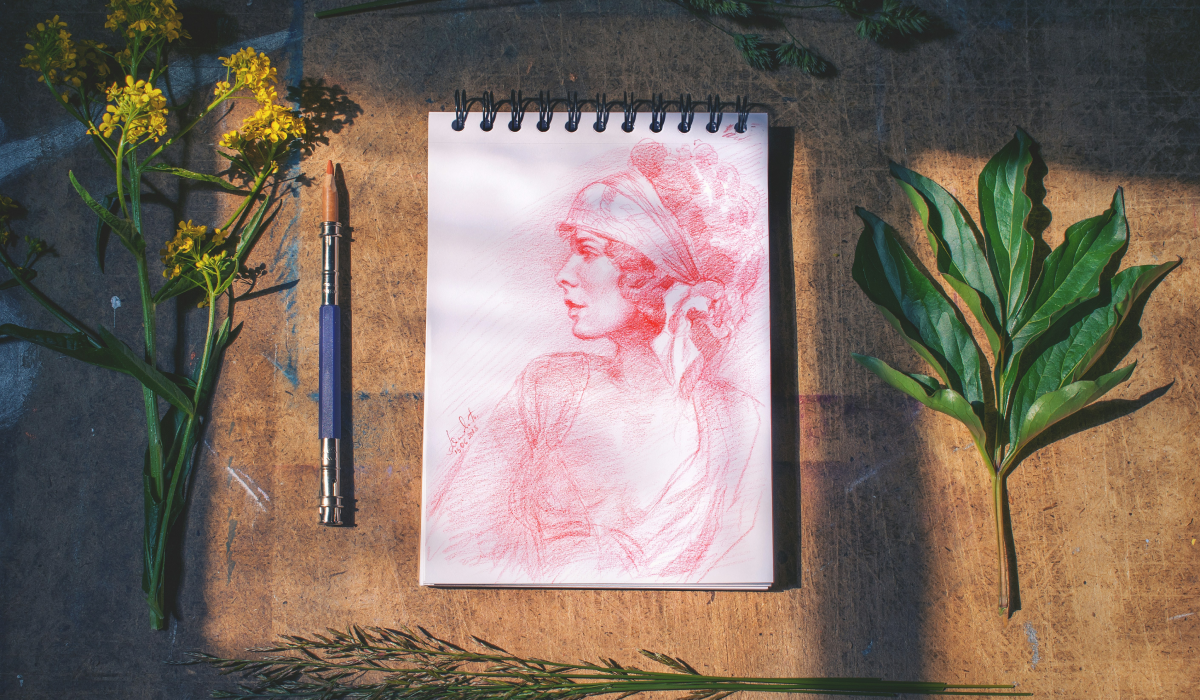
5 Sketchbook Tours: Drawing Inspiration From Other Artists
Photo caption: Sketchbook tours allow artists to peek into the minds of their favorite artists and draw inspiration...
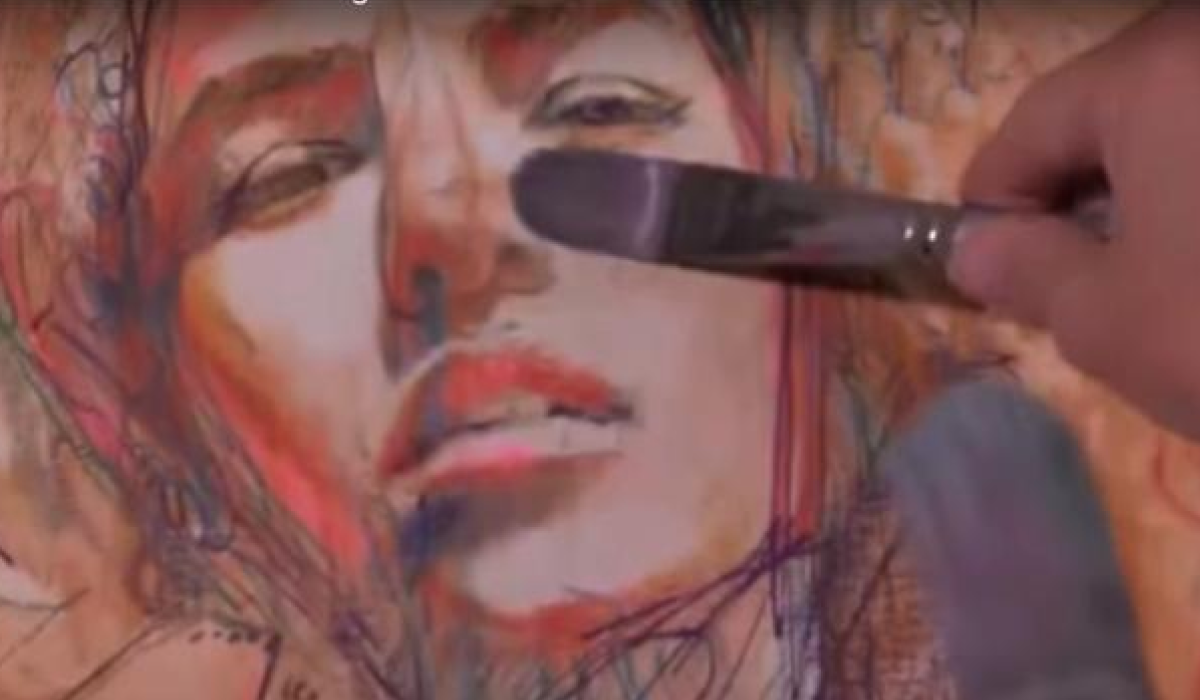
Free Art Tutorial: How to Draw or Paint the Nose Step by Step
Photo caption: Learning how to draw or paint the nose counts as a critical step for artists who want to do portrait...
Post a comment
Get latest articles directly in your inbox, stay up to date., stay up to date.

Why & How You Should Absolutely Keep a Travel Sketchbook
In this post, we will explore what travel sketching is, why it’s awesome and how you can get started documenting your travels too, whether it’s travelling around your local area, your own country or across the world.
What if you put your fears and concerns aside, get a sketchbook and a pen and start documenting your travels?
Can you imagine having a library of sketchbooks build up for you to look back on? Can you imagine how great your sketching skills will become if you sketch continuously? Can you imagine showing your friends and family sketches of your travels? And how much better than photographs they are…!
By reading this post I hope it will encourage you to either get started with travel sketching and just trying without fixating on the result. Or if you have tried travel sketching before I hope this post encourages you to keep doing it and to share your sketches with the rest of the world too (if you want to).
There’s nothing like showing your sketch to someone and seeing their face light up with recognition and delight at a familiar scene through the medium of your pen, paint and mind.
It’s easy to feel overwhelmed about taking up an activity such as travel sketching but we all have to start somewhere. I remember the first trip I truly committed to sketching every single day, everywhere I went.
No one ever said anything bad about my sketches or the fact I was sketching, in fact, over 3 months and 6 different countries meeting people from all walks of life I only ever had positive encounters.
I’m not saying no one is judging, we are human beings, everyone judges but its exceptionally rare someone will come and be rude or negative to your face.
Committing to travel sketching and filling my first book with an adventure was a real turning point in my life. It’s where my obsession with sketching, illustration and travel really took hold. Over the following years, I have sketched more and more. Other people began to notice. As such, I have been approached by many people to paint buildings or places close to their heart, I have been asked to illustrate books, fabric patterns and all manner of other things. All from just doing something I really wanted to do and getting over the fact that I was not going to be good at it at first.
I still wonder if I am any good now, I’m not sure any of us really get past that thought. But learning to acknowledge that thought is there and just doing it anyway because its fun and you love it…that’s the key.
What is a Travel Sketchbook?
A travel sketchbook is a place in which to record your adventures through the medium of drawing, painting or both. You can use one sketchbook for each of your trips or have one book for all travels until it’s full and then start another one.
A travel sketchbook is like a photo album (does anyone remember those)?? It used to be so exciting getting your roll of film processed after a trip, receiving the physical glossy photos and then arranging them inside a faux leather album that looks like an old book to put on the shelf and pull out to show people or just to look back on happy memories. Well, a travel sketchbook is like that but 1000 times more fulfilling to make!
The type of sketchbook you will need depends on what medium you intend to use. If you want to use “dry media” such as pencil, colour pencils, ink etc then a standard sketchbook will be fine. If you want to use “wet media” such as watercolour pencils or watercolour paint, it is best to get a watercolour sketchbook.
I have a post here on my advice as to which watercolour sketchbooks to consider .
My first travel sketchbook was given to me by work colleagues, it was so beautiful I knew I wanted to use it for my trip even though it didn’t have watercolour paper in it and I wanted to use watercolour paint. Luckily, I was only using light washes of watercolour paint and the paper was thick drawing paper, so it worked out well enough.
If you want to use alcohol markers, such as Copics or Promarkers for example, make sure you get a mixed media sketchbook with thick pages. Even then you will want to test whether the marker bleeds through the page. If so, make sure you have a scrap piece of paper to put between pages and be aware you will only be able to sketch on every other page on both sides of the paper.
If you want to use markers but don’t like the sound of only being able to use every other page or want to avoid the issue of the ink bleeding through the page, check out water-based markers such as the Faber-Castell Pitt pens .
Don Colley uses these pens to amazing effect and he points out that they don’t smell or bleed through the page as alcohol-based markers do.
Why Start a Travel Sketchbook?
Something to do….
I honestly believe travelling solo is one of the most liberating travel experiences you can have and is actually predominantly how I do travel. If I waited for someone else to be in a position to afford or even want to go to the same places as me, I don’t think I would have been many places.
When you do travel solo, there are many times spent alone either exploring, sitting at a cafe or simply just waiting at a bus terminal or airport. As much as I love reading a book there’s nothing like pulling out a sketchbook to draw the things around you, compose a sketchbook layout, write notes around things you want to remember.
Mindfulness
Following on from the point above, sketching while travelling is a fantastic way of practising mindfulness, i.e. being present. When sketching from life, you are focussing on your surroundings so much more. You are more aware of the small little details that you may otherwise not have noticed. By focussing on the activity of sketching your mind remains in the present and not replaying the past or anxiously fixating on the future.
For more thoughts on sketching and mindfulness, check out my post here .
Journal/record of your travels
Keeping a travel sketchbook is a great way of actually recording your trip: where you went, who you met, what you did.
If you’re anything like me then you cannot remember place names easily, so having them written down next to a little sketch of the place is super useful!
Some people like to keep a written journal while travelling. You can combine this and include written thoughts in your sketchbook too. Remember, it’s your sketchbook and just like a private journal, you are under no obligation to show it to anybody.
Great way to meet people
I found when I was sketching, people were more inclined to come and speak to me. I suppose this is because there was something tangible to start a conversation about. Again, if you are travelling alone, this can be a useful method of making new friends!
I met an architecture student who was also sketching while travelling. After starting up a conversation we ended up travelling together for the next couple of weeks as we were heading along the same route through Mexico. Having a shared interest automatically helps break the ice.
It is also a great way to make contact with local people living in the area. Even if you don’t speak the same language, seeing a smile cross someone’s face when they see your sketch is universally understood.
Basic Materials Needed For Travel Sketching
Mechanical pencils are useful for travelling as they don’t need sharpening. Some people just prefer the feel of a traditional wooden pencil though. Use whatever works for you.
I like these Rotring mechanical pencils which you can pick up affordably on Amazon.
Just like pencils, you can use any pen you want. You could just use a ballpoint pen, like a Bic. You could use fineliner pens, otherwise known as technical drawing pens. They come in a variety of different line thicknesses. They are great at producing extremely consistent line quality. Many travel sketchers use Microns , UniPins or Faber Castell pens.
The great thing about all of these fineliner pens is they have permanent waterproof ink in them, so if you want to paint over the top in watercolour, the ink won’t smudge.
If you want to get a bit fancier, you could even use a fountain pen.
For more information on sketching with fountain pens, check out my more detailed post here.
You can watch me receive some new fountain pens and show you how to fill them up with permanent waterproof ink in the video below:
As discussed your choice of sketchbook will depend on what media you want to use in it but if you want an affordable sketchbook that you could use for anything, including light watercolour, then consider using a mixed media sketchbook. You can get a hardback book, a softcover book or a wire-bound book. This is entirely up to your own preference.
I prefer a hardback book as its easier to sketch in on your lap and is a bit hardier for travelling. A softcover book can get damaged more easily in your bag and you will need to find a hard surface to lean on in order to sketch in it. Pages can slip around a lot in a wire-bound book, perhaps even being ripped out by accident. While it can fold in on itself easily to make it a bit more compact, it also removes the option of drawing across the fold of two pages which I am personally a big fan of when creating sketchbook spreads.
Also, consider the format of the book you want to use: landscape, portrait or square.
For more information on which sketchbooks are best for travel sketching, check out my post here .
One of my favourite brands of sketchbook is Stillman & Birn, I have a post here discussing the differences between each series of sketchbook the company makes.
If you are in the UK, I think one of the best and most affordable options are the beautiful handmade sketchbooks by The Pink Pig .
For quick reference, check out these sketchbooks:
Moleskine Watercolor Album
Seawhite of Brighton Travel Sketchbook
Stillman & Birn Alpha Sketchbook
Hahnemuhle Sketchbook
If you want to add colour to your sketches you could use a range of materials. The key thing to consider is portability. You do not want to be lugging a huge box of markers around with you, especially if you are on a backpacking trip or trying to travel light. This is one of the primary reasons many travel sketchers use watercolours. You can get a set in a small tin and you only need a few colours in order to mix the rest.
Pair a small box of watercolours such as this St Petersburg White Nights set of 12 with a water brush like this Pentel Aquash water brush and you have a super small portable sketching set up.
For more detailed information on watercolour sets for travel sketching, check out my post here .
Check out my ebooks with hundreds of ink & watercolour travel sketches from all over the world. Get some inspiration for your next trip…
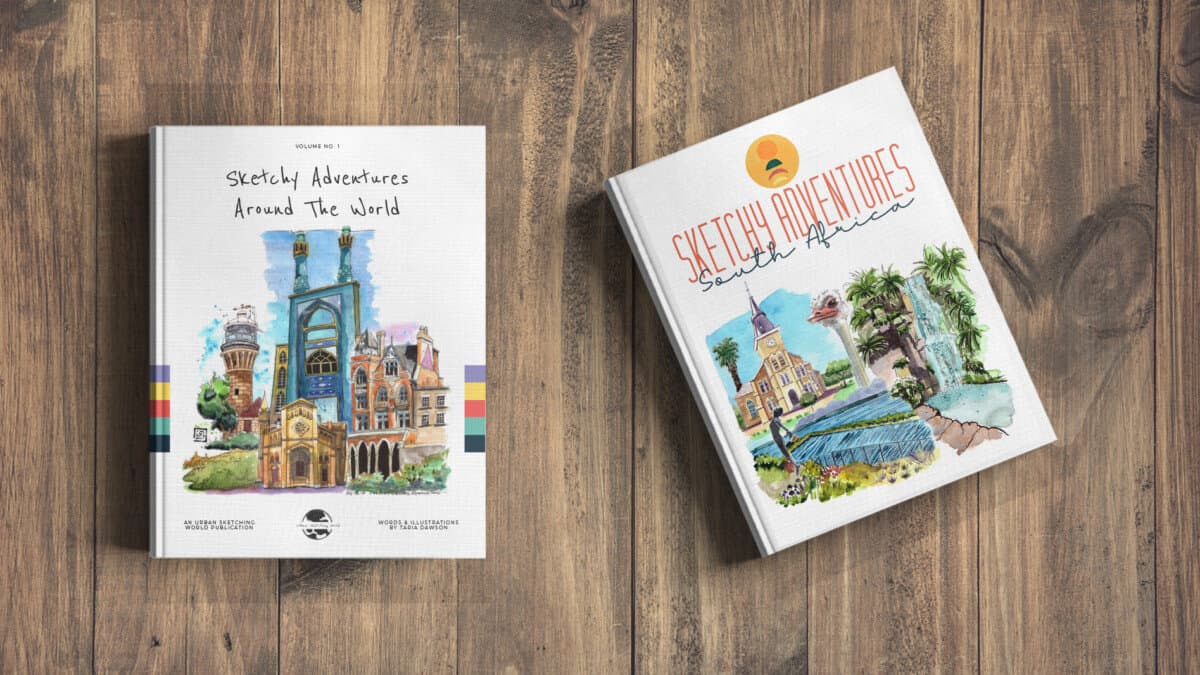
Miscellaneous
Washi tape is a great method of taping in ephemera such as tickets, postcards and leaflets. It can also be used to tape off your page to make a nice clean border. They come in a vast variety of super fun designs as well.
Pencil sharpener (unless you have a mechanical pencil)
What Do You Put In a Travel Sketchbook?
Well, this is obvious but needed to be said. Sketch the places you have been:
- Architecture: monuments, churches, museums, art galleries, castles, stadiums
- Nature: animals, plants, gardens, parks, beach, ocean, cliffs, sunrises, sunsets
- People: your family, friends, strangers, people you meet, new friends
- Machines: cars, motorbikes, agricultural machines, vintage trucks, boats, public transport, trains, buses, taxis, trams, bicycles
- Food: local dishes, recipes, condiments, drinks
- Doodle: let your imagination run wild
Do you want to learn how to sketch your own adventures in ink & watercolour?
Get 50% off for a limited time only.
I will show you my exact sketching process in ink and watercolour . I have travelled around the world in the last 3 years and this is my go-to system of creating beautiful yet quirky illustrations to capture the magic of my discoveries.
We will work through 3 projects, step by step (pictured below), all of which are real-life examples of things I have sketched along my travels. I provide the photo references you can work from. We will start by choosing a composition, laying in the initial pencil sketch, adding ink lines, layering watercolour and adding the final touches. This and much more are included in my course, Sketch Your Adventures , click the button under the image to find out more!
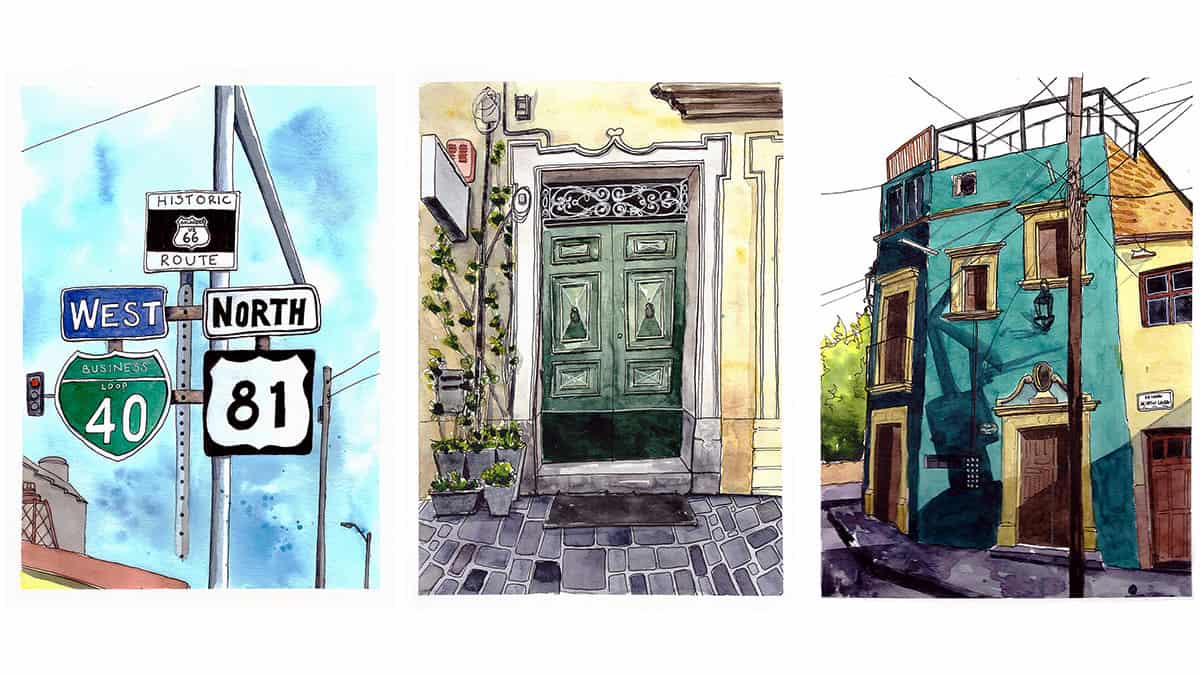
Ephemera are the bits and pieces you collect along the way on your travels. Ever wondered what to do with that random flyer, free sticker, or ticket stub? They can all be added to a relevant sketchbook spread, or all at the front, or at the back in the pocket (which some sketchbooks have) – wherever makes sense to you.
Ephemera includes the following types of things:
- drawings or messages from your travel companions or people you meet
Urban sketcher, Captain Tom, has a polaroid-type camera with him on his travels and sticks in his photos as he takes them to add to his sketchbook spreads:
View this post on Instagram A post shared by Tomas Pajdlhauser (@captain_tom)
Titles and notes about where you have been, quotes that seem fitting, jokes you hear on the road, words or phrases in a different language you want to remember.
When I was visiting Iran, I asked whoever I could (who spoke English) if they would mind writing the place name of where I sketched in Farsi (the language spoken in Iran). Even though I can’t read it, its lovely have this beneath every place name in my sketchbook. (You can see an example in the picture below, just under where ‘Kashan’ is written).

I also asked people I met or travelled with to write a little note, message or joke (whatever they wanted) in my book so I could remember them. It also makes that person more involved in what you are doing, they can be a part of it too.
Need some inspiration on adding lettering to your sketches? Check out my FREE class!
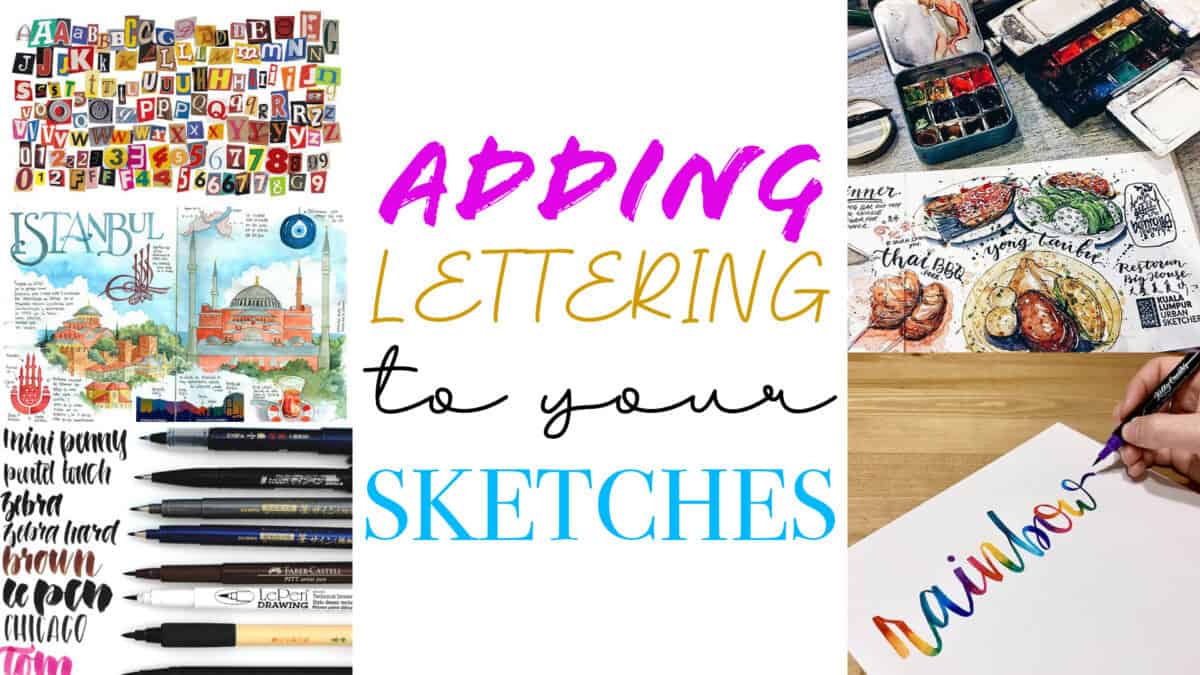
How to Start a Travel Sketchbook?
Facing a brand new sketchbook with all those blank pages, especially that very first blank page is a daunting prospect. However, there are many strategies to get rid of that first blank page and overcome the fear of getting started.
I have an entire post on how to start a travel sketchbook here but in summary:
- Draw a map of the country or area you are visiting – I did this when I visited Iran and South Sudan.
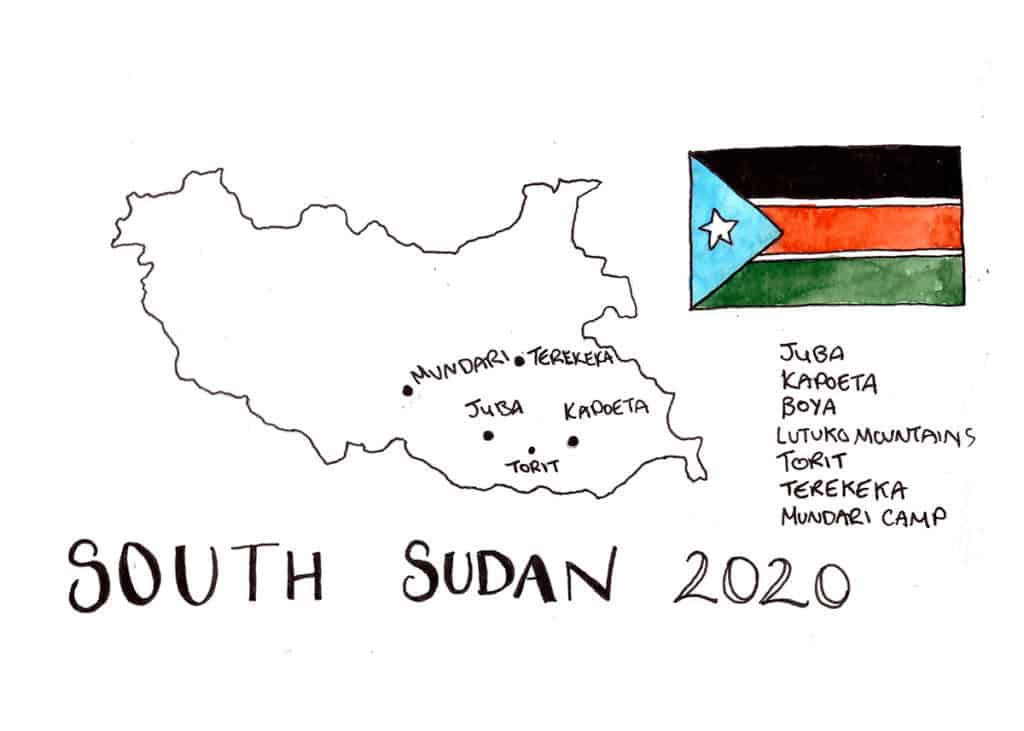
- Sketch your art supplies – a great way to remember what materials you used in your book
- Make a colour mixing chart – this is such a great reference tool, especially if you are using a small set of watercolours and need to regularly mix colours to get the shade you need. I have a post here and a video below on how go about making a watercolour mixing chart.
- Reserve the first page for ticket stubs , leaflets and other ephemera. I sometimes like to tape in my boarding pass if I’m flying somewhere and on the final page of the trip I will tape in my departing boarding pass (after I have used it of course)! More recently my tickets have all been electronic so I do this less and less.
- Sketch the mode of transport you first take to start your trip. A great way to get started travel sketching is when, for example, you are sat in an airport waiting for your flight. I like to get a seat near the window and sketch the plane while the airport staff are preparing it for the journey. If you can’t get a view of the plane, of you are taking a different method of transport which you cannot get a view of, sketch the people around you that are also waiting. Most of them will be looking at their phone, laptop, book or will be asleep so they won’t notice you sketching them, perfect models to practice on!
I have an entire guide on people sketching, you can check it out here.
How to Keep Going
Sometimes you’re not going to be happy with a sketch or a page you’ve done and it will demotivate you from carrying on but persistence is key. You will never get everything perfect, but that’s the beauty of a sketchbook or journal.
Sure, you can be super neat but how about letting go? Make it your own graffiti wall, fill every space, overlap things, write notes all over the place – let go! I personally think these types of pages can be the most beautiful as they are so free.
My First Travel Sketchbook
I remember creating my first travel sketchbook on a solo backpacking trip to Mexico and Central America. I mentioned my intention to a few of my colleagues at the job I was leaving in order to take the 3-month trip. On the day I left I was presented with a leaving gift – a handmade sketchbook with a map of Mexico and Central America on the cover. I was completely overwhelmed at the thought that went into that gift.
It was the book I used for the whole of my trip, sketching in it and sticking tickets and leaflets from everywhere I went. I adore that sketchbook and love leafing through it now and again as a reminder of my trip, the experiences I had and the people I met.
If you would like to see it, I did a flip-through of it, it was the very first video on the Urban Sketching World Youtube channel ! You can see it here:
My point is, that no matter how bad some of my sketches were, I look back on that book with such fond memories. Just like some of the photos in my photo album are badly exposed or not in focus, not all of your sketches will reach your personal standards. I’m not sure they ever will, as you will always be trying to improve.
I would hate for you to miss out on the opportunity of creating a travel sketchbook just because you’re worried it won’t be perfect. You will not care about that at all in 1, 2, 5 or 10 years time when you look back on it. Let’s just enjoy the process and not concern ourselves with the outcome.
Some of my favourite online classes
- Travel Illustration: Recreate Your Favourite Place – Alex Green
- Illustrated Diary: Fill Your Sketchbook with Experiences – David Morales
- Daily Sketching for Creative Inspiration – Sorie Kim
- Urban Sketching: Create Expressive Cityscapes – Eleanor Doughty
Final Thoughts
I hope this article has encouraged you to keep a travel sketchbook when you embark on your next adventure.
If you are new to urban sketching then check out my beginners guide with practical advice on how to get started.
If you are wanting to improve your sketching skills I have numerous articles that may be able to help but this post on things you can do to improve immediately may be a good place to start.
Perhaps you want to loosen your sketching up? In that case, try this post .
Or if you would like to focus on a certain subject, I have a post about sketching architecture here , a post about sketching cars here and a whole guide on sketching people here .
To stay in touch with me and get some behind the scenes information on urban sketching projects I’m working on, pop your email in the box below!
Keep in touch!
- New Issue Sneak Peek: PleinAir Magazine, April/May ’24
- New Subscription
- Renew Subscription
- Back Issues
- Gift Subscription
- Plein Air Today – FREE Newsletter
- What Is Plein Air Painting?
- Editorial Team
- Plein Air for Beginners
- Painting Demonstrations & Art Tips
- Extreme Plein Air
- PleinAir Collector
- About the PleinAir Salon
- 13th Annual PleinAir Salon Winners
- Call For Entries
- PleinAir Salon Calendar
- Your May 2024 Painting Events Guide
- Plein Air Convention
- Fall Color Week
- Paint Adirondacks
- Pastel Live, September 2024
- Realism Live, November 2024
- Watercolor Live, January 2025
- Plein Air Live, November 2025
- PleinAir Podcast
- Art Marketing Podcast
- Subscribe to the Podcasts
- 2024 Ultimate Guide to Painting Events and Organizations
- 2024 Artists’ Guide to Workshops, Schools, and Ateliers
- Artist Guide to Painting in North Carolina and Tennessee
- Artist Guide to Painting Colorado
- Plein Air Today
- Art School Live with Eric Rhoads
- PaintOutside.com
- Plein Air Force
- Help Veterans
- Collector’s Guide To Watercolor
- Fine Art Connoisseur
- Plein Air Convention & Expo
- PleinAir Salon Art Competition
- Art Training
- Publishers Invitational
- Art Marketing Bootcamp
- Art Marketing Book
- Art Marketing Minutes Podcast

Travel Sketching: Tips for Keeping an Art Journal
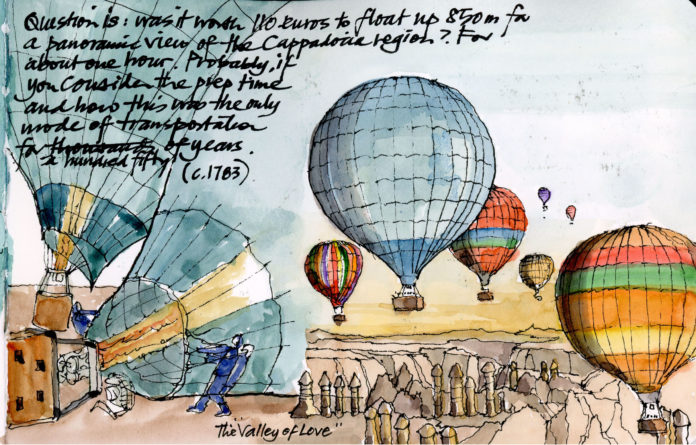
From 2015 to 2018, Ivan Chow made trips to and around Istanbul, Turkey, sketching many scenes along the way. In this excerpt from his upcoming book, “ Travel Sketching: Drawing Insights from Istanbul ,” he shares one of his favorite formats for drawing on location.
BY IVAN CHOW
Travel sketching, an ancestor of sorts to Instagram, has changed the way I observe the world. I have discovered that the act and art of converting visual observation into graphic representation has far surpassed the benefits afforded by digital photography. What I have learned and enjoyed from the practice of travel sketching has enriched my travel experiences as well as deepened my appreciation of different cultures and peoples.
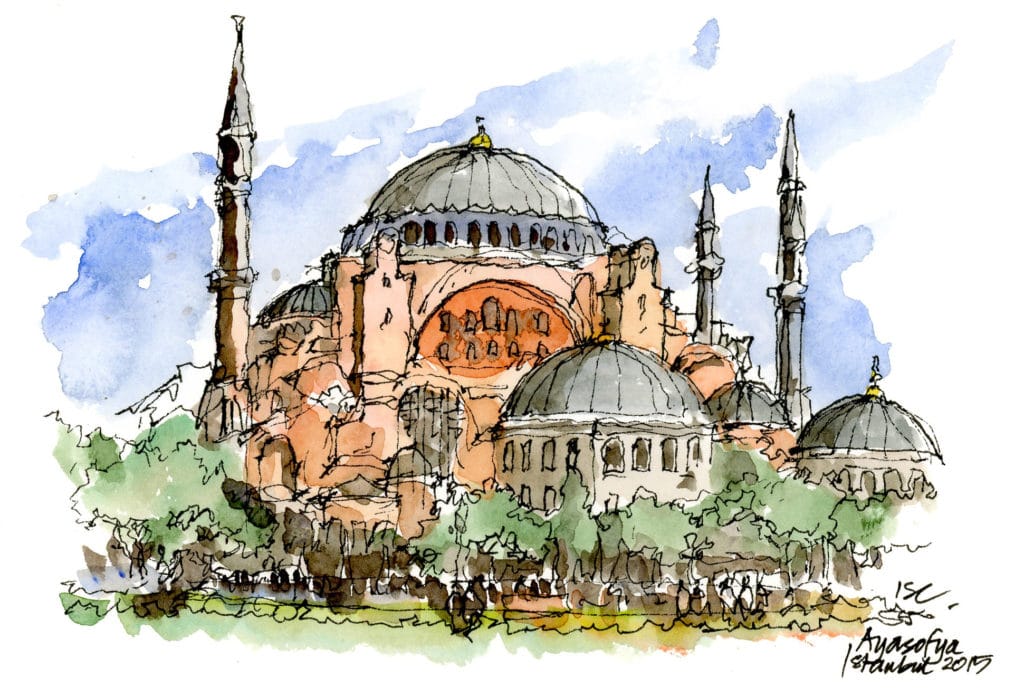
A Fresh Approach to Travel Sketching
One of the most invigorating formats for travel sketching is one I have recently become more intentional about, and which has been received with a great deal of enthusiasm, especially when posted on social media in audio-visual form. On platforms such as Facebook or Instagram, posts of travel photos depicting scenes or people accompanied by captions attempting to describe said experiences are fairly typical. Posting travel sketches, however, is still unique and arguably more interesting. Adding written captions or commentary makes this approach of sharing travel experiences even richer and more memorable.
Enter the travel art journal. While not necessarily a new genre or form of expression, it has become for me a fresh approach to sharing experiences in an otherwise digitally saturated world. A travel art journal has the potential to transform travel sketching into a unique mode of expression, combining drawing with handwriting and composition to create a new “voice.” My forays into developing art journal sequences have been thoroughly rewarding, as I can combine my drawing skills with an interest in writing to communicate much more than either discipline can on its own. That’s probably why comic books and graphic novels have such appeal and why skillful cartooning can be so influential.
A travel art journal can be formatted in as many ways as there are personalities. My favorite format is an A5 size journal (about 5.5” x 8.5”), either in landscape or portrait mode, with sufficiently thick paper to stand up to waterproof ink lines and light washes. (80 lb. minimum, 140 lb. preferred) As with sketchbooks, an elastic closure strap and inside back cover pocket can be helpful. In addition to the usual array of tools I might have on hand for travel sketching, I would add a few choice writing instruments, such as a chisel-nib calligraphy pen or fountain pen.
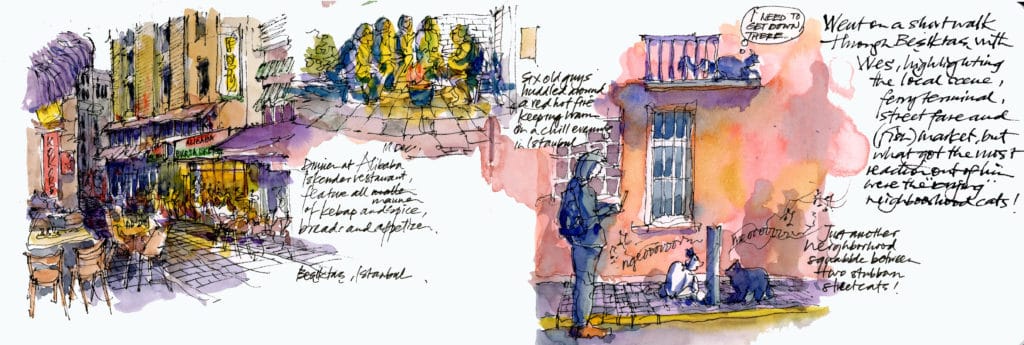
As the name implies, a journal is a regular log of activities and events that occur roughly in chronological order. A travel journal might memorialize the daily travel schedule, places visited, people met, cuisine enjoyed, and souvenirs acquired. A travel art journal adds the element of artwork in the form of sketches, doodles, graphic illustrations, even glued-on collages using torn excerpts from brochures, tickets, receipts, and labels. I have found this last exercise quite a satisfying way of closing out a busy day of touring.
Travel-art journal entries are unique compositional challenges. In its simplest form, each page might contain a few sketch vignettes describing the activities of the day. Arranging the sketches on the page may require some foresight, consideration of the size, scope, and subject of each vignette and how they might tell the story of the day. Each entry becomes a graphic design exercise involving the layout of sketches, diagrams, titles, and text.

The addition of handwritten text to a composition of sketches is both an enriching enhancement and a potentially stressful endeavor. It is enriching because it adds information, flavor, and specificity to a sketch. Potentially stressful because, unlike the editability afforded by computer software programs, each phrase or caption needs to be somewhat thought through and composed before being physically written within the space available.
I love to write by hand and am constantly experimenting with different writing instruments with different tips, nibs, and inks. It’s almost an obsession with me, and I am easily disappointed when my writing falters. Having said that, I highly enjoy narrow, flat-nosed calligraphy pens for travel art journaling, especially used in a generally cursive lettering style. However, most fountain pen type writing instruments with reservoirs have no tolerance for waterproof ink, which tends to clog the fins and feed tubes. This often leaves me with little choice but to use the waterproof ink felt-tipped pens I used to sketch with for lettering as well. A real calligraphic treat is to use Speedball dip nibs with bottled India ink, although both have proven not to travel well.

This summertime sketch of the renowned Taksim Square (above) was completed in one sitting but from multiple positions. I had begun sketching seated on the pavement in front of the Taksim Mosque facing the square. Within 10 minutes, the local constabulary approached, ordering me to move. I continued the sketch while standing about 50 feet to one side, which required walking to and from my original position for reference, and back to the “safe zone” to continue sketching, clutching my watercolor kit and sketchbook in one hand, pages flapping in the breeze; brush in the other hand, pinky finger trying to hold down the page.
I ended up crossing the street into the square proper and finishing the 45-minute sketch seated on a low rail around the Republic Monument. Even under these conditions, I was pleased by how the sketch reflected the windy conditions, the movement of people and the “life” of this symbolic gathering place.
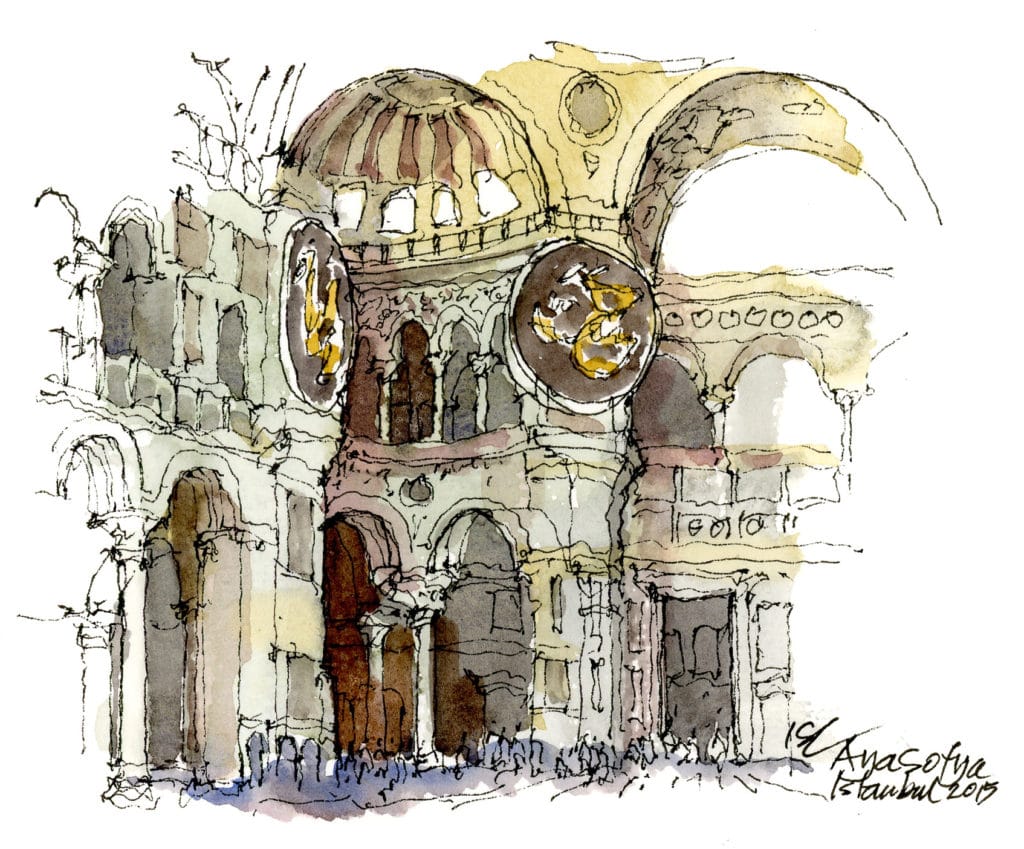
This interior sketch (above) was made while standing within the cavernous expanse of a 1,500 year-old Byzantine monument to Ottoman architecture and culture. The contrast from the warmth and bustle of the exterior to the hushed coolness of the inside almost mandated reverence.
This is where my Winsor & Newton professional watercolor travel kit came in handy, albeit restrictive. Being able to clutch both watercolor kit and sketchbook in one hand is a cultivated skill and immensely useful for situations like this. It was important to limit the scope of the sketches knowing that I would likely not be able to stand in place for much longer than 20 minutes at a time.

Do you keep a travel sketchbook or art journal? Tell us about it in the comments below!
ABOUT THE AUTHOR: Ivan Chow is an architect, author and award-winning artist. He was born in England, grew up in Southeast Asia, and has worked in the United States and around the world as an architect, educator and artist for almost four decades. He has practiced in design firms of various sizes; managed a private real estate company; worked in academia as a department chair and dean; and served as artist-in-residence at Frank Lloyd Wright’s Fallingwater. He has degrees in architecture from Harvard and Berkeley and a degree in theological studies from Gordon Conwell.
Facebook: @ivanchowsketches Instagram @qkkdraw
> Click here to subscribe to the free newsletter, Plein Air Today > And click here to subscribe to PleinAir Magazine so you never miss an issue!
RELATED ARTICLES MORE FROM AUTHOR
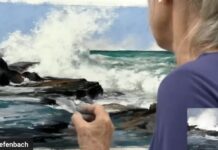
Pastel Painting Demo: How to Create Crashing Waves

Are You Loving Nature to Death?

One Day in Bayou Country
13 comments.
Your lines are lovely! I carry a 6×8 WC book and fine line pens as well as a travel WC set. A film can (remember those?) half filled with water is all I need to complete hasty or slow drawings and paintings wherever I go. In a ziplock, it fits under a car seat or in an airplane carryon. The water is small enough to pass security. Thanks for posting your images. I consider my pages suitable to be Urbansketches.
Hello Kath, please excuse my 5-month tardiness in replying, but I very much appreciate your comment. I still have a couple of film cans around! Have you tried posting on Instagram? (I am @qkkdraw) I learn so much from following other artists around the world.
I love travel sketching! I use the same size book you do, and I’ve found Lamy Safari sketching fountain pens to work wonderfully with waterproof ink. I have a small (Altoids tin) travel palette, and often use a water brush to add a little paint to a small ink sketch.
Leslie, I’m only now realizing there were comments to this September 2020 article! Sorry about the delay in response. The Altoids tine palette is such a good idea. Although I have a handful of water brushes, I tend to get annoyed and how the colors get muddles when I forget to rinse properly.
I have 2 types of travel journals. The first is done strictly with sepia Micron Pigma pens in a Moleskine journal. I do line drawings on the spot, or later in my hotel room from photos on my phone. I annotate the day with text. These pages allow me to look back and remember details of my trip. The second book is done strictly with watercolor. I use a Moleskine or HandBook watercolor journal. These paintings are always done plein air and without text. I love keeping travel journals and they have become treasured keepsakes.
Hi Marian, thanks for your comment; my response is unforgivably tardy, but hopefully still relevant. Interesting idea to keep two travel journals concurrent; I never thought of doing that. Makes sense though – almost like mood-based entries. I’ll try that on my next trip, assuming Covid gets dampened(!)
I started travel journal sketching on a 3 week trip through England. London, to western most area near Penzance and with to the Lizard. Then up to Bath, followed by a week in the Lake District. Now, I take it whenever we travel — though there’s been damn little of that lately!
KL, sorry about this delayed response. I really miss traveling; we used to make any excuse to visit our family all around the US and internationally but now stuck looking at the world through a laptop… I spent some time in the Lake District decades ago, before I took up travel sketching, and aim to go back some day armed with my weapons of art!
I have notebooks that I kept while serving in Germany where I sketched various church steeples as I took various bus tours. Every two weeks tours after joining reserves, I sketched and took photos
Hi Dixie. Thanks for sharing and please excuse my tardy response. Have you posted your steeple sketches on FB or IG! I learn so much from following what other urban sketchers are doing.
Ivan thanks for sharing the details. I have several different sketch books but need to start using one and go through it day by day . I usually try to sit down so I can put my watercolor pallet on the ground and bring a spritz bottle to keep them wet.
Hi Bruce, thanks for your response; there are no excuses for my super tardy one. The thing about these plein air experiences is that every one seems to be accompanied by lasting memories: the sounds, smells, hapticity of the moment. And the need to come up with inventive ways of setting the right ambience for each little sketch can be such an annoying yet rewarding travel experience.
Hi Ivan, great sketches and tips. I’ve kept illustrated travelogues and journals for a few decades now. Smaller sizes work best for me. It keeps the sketching from being too detailed, they are quick and leave just enough space for minor remarks. They are also discrete cause I don’t like to make a show. Check out my IG-feed @ivanseymus or visit my portfolio on http://www.ivanseymus.com . Good luck and take care! Ivan (yes, that’s my name too!)
LEAVE A REPLY Cancel reply
Save my name, email, and website in this browser for the next time I comment.
Artist Spotlight: Jessie Rasche

An old way to see new: How travel sketching can improve your trips
See the world anew through travel sketching.

When I used to see people out travel sketching or examples from history, I had two responses:
1) That is so cool! and 2) I could never do that.
I was half right.

Travel sketching is meaningful because you capture a very personal view of what you saw. More importantly, you actually perceive the world around you in a whole new way.
To my second response, let me paraphrase Chef Auguste Gusteau in the film Ratatouille :
Anyone can draw.
You did it as a kid. You can do it again. But you have to try and you have to practice. The good news is that with travel sketching, you get to practice in some pretty remarkable places.

You just have to take that first step
Awhile back, I completed a trip to China where I practiced travel sketching each day in a travel journal. What got me over the “I can’t draw” hurdle was seeing my son do it and reading Danny Gregory’s, The Illustrated Journey where he profiles various artists and their travel journals. Major inspiration. Plus, when I first picked up one of Gregory’s books, I thought, “Wait a second. His drawings aren’t perfect. And he doesn’t care.” Nope. And neither should you.
Your goal with travel sketching isn’t to render perfect replications of what you see. Your camera can do that. Your goal is to have more fun and experience your trip in a new way. Here’s how travel sketching can help.
The benefits of travel sketching

- You see things better . Much better. You appreciate the details and understand how various elements relate. You discover small visual treasures you’d otherwise miss if you weren’t travel sketching.

- You slow down. Travel sketching forces you to stop. And look. And look again. You not only perceive your subject in a new way, you get to know the place better because you experience it over a longer period of time.

- You meet people easier . They approach you. Everyone loves to see what you’re drawing. No one cares if it doesn’t look exactly like the scene before you. At least you’re trying. They’re not. You both know it. And that can lead to wonderful conversations.

- You get to choose what you draw . I am a rank beginner when it comes to drawing or travel sketching. But it doesn’t matter. I journeyed through China with my son who is a graphic designer and artist. He’d be tackling some complex building or—gasp—a person, and I’d settle for drawing the trash can. It didn’t matter. I liked that trash can. And I knew it wouldn’t be as hard as what Leonardo there was sketching. We both walked away satisfied.

- You improve other creative areas. I’m a better photographer because of sketching since now I’m more intentional about what I shoot. Plus, I can draw during the bright mid-day hours when the light isn’t as great for photos. I think I write better too because I notice more details.

- You experience a place on a deeper level . I now see things I never would have before, plus I look for things I never would have previously. Every place is now a visual scavenger hunt. I see a completely new dimension of a place as a result. It’s like the artist’s trick of drawing negative space: to draw the chair, for example, draw the empty spaces between the legs and back slats and you’ll actually draw the chair as a result. You begin to see the “negative spaces” of life that before were invisible. And in that is an entire world of wonder.

- You learn there is no wrong way. Stop the self-judging. There are no bad drawings. Everything is a chance to practice and learn. Sure, the kangaroo I drew from a photo in the in-flight magazine looks psychopathic. And yes, that large round flower pot I drew in the Suzhou garden looks like a fallen cake. But so what? As an art professor once told my son, “You’ve got 2,000 bad drawings in you that you need to get out.” 1998 to go…

Not yet convinced?
Here are some other tips, resources for inspiration, drawing ideas and suggestions for how to get started with your own travel sketching.

To get started, just start playing with different media. Here I didn’t even sketch the outline first in pencil. I just started painting. Is it great? No. Was it fun? Yes. And that’s what matters.
- Find a style you like . Maybe one out of ten books I’ve read on drawing work for me. And I can tell by looking at a few pages. Most are too complex or photo-realistic. Others are too fussy. Still others are too messy. You’ve got to be like Goldilocks and find learning resources — books, online courses, websites or even classes — that work for you. Otherwise, I guarantee you want stick with it or likely, even get started.

I saw a pin of this image on Pinterest and re-created it. It would be blatant copying except that I am only using it to practice.

More recreations, this time from a Matthew Rice book using pencil with watercolor. It’s good to simply enjoy making the sketch and not worry if it is perfect. But it’s also helpful to learn from each one. For example, with the top castle, I really like the building on the right but the one on the left got a little wonky.

I’ve recently started using ink instead of watercolor since I still can’t make watercolor sketches quite the way I want. Ink reduces the learning to only dealing with shades, not colors

Here’s a very different style using pen and ink instead of pencil and ink. I think I like pencil better, but I still have a lot of practice ahead of me before I figure out my preferred style. So why not try both?
- Find resources that fit your needs . Just like finding a style you like, finding the right learning resources is a matter of evaluating a lot and choosing a very few. Start online with courses or tutorials. Or go to the library and look through all the options there. But you’ll know you’ve found the right one when it inspires you to want to try. If it doesn’t, keep looking. Here are some that have worked for me:

This is typical of the majority of my travel sketches where I make it quickly in ink alone, not worrying about so-called mistakes. As one artist put it, they aren’t mistakes. They are evidence of your personal style!

Sketches don’t have to be big to be enjoyable. I re-created these little people from a book on watercolors but now, I can make similar ones from real people because I understand the technique.
- Art Before Breakfast – While focused on being more creative, the emphasis here is on getting started doing daily drawing by providing drawing ideas and other creative activities you try so you form the habit sketching or doing something creative every day.
- The Creative License which teaches you how to be more creative in anything.

One thing I learned from Danny Gregory is that you’re never without subjects. A trip around the block will reveal all kinds of things to sketch.
- Keys to Drawing — It’s over two decades old but still one of the best for providing drawing ideas, getting started and progressing.
- Drawing with the Imagination —This is great if you want to learn to draw on your own without a subject before you. I’d start with Keys to Drawing first and then progress to this book. But check this one out just for the inspiration.

Anything can be a source of a practice drawing, even a photo of Betty Edwards on the back of her book. This is one of the few times I took more time to draw something more detailed in pencil.
- Drawing on the Right Side of the Brain
- Explorers’ Sketchbooks
- The Sea Journal: Seafarers’ Sketchbooks

If you’re making your travel sketchbook just for you, you can fill in blank (or smudged) areas even after a trip with, I don’t know, maybe Baby Yoda? As long as you date each entry, it doesn’t really matter the order of them.
You can see other examples and resources in my article on travel journals .

Sometimes you sketch things over and over just to understand what you’re doing. After that, your practice is both more fun and productive.
And in case you’re wondering about the sketches shown above, the older ones up to the “Not yet convinced?” section come either from the Smithsonian’s recent release of over 2.8 million images to the public domain or the New York Public Library’s digital collection which is also in the public domain. Both are great resources for old images. The newer ones are all mine just to show that anyone can do this.
Need more inspiration?
Here are some wonderful examples I’ve come across of different styles and approaches for your inspiration.
Why sketch a city you see when you can just make up your own ?
You can draw whatever you love. Especially food.
This will expand your perspective on using the medium of pastel.
Here’s a good overview of some specific sketchbook tips.
Finally, here’s a wealth of various travel sketchbook examples on a few different Pinterest boards. With Pinterest, it helps to search by boards because then you can get a sense of people who have similar taste to you. Or you can just search on pins and see a wider variety. These are four boards I enjoy (click on the image to go to the board), but your taste may differ, so go hunt down some boards that inspire you:

Wow! Fascinating read, and actually quite encouraging to those of us who are artistically-challenged to give it a whirl!
Thanks, Rick. I’m glad it is encouraging. I was going to say I expect to see some masterpieces from you. But that would defeat the point of this post. So how about this: I expect to see some great efforts soon.

- Search for: Search
Get the Good Stuff!
My instagram images.

Session expired
Please log in again. The login page will open in a new tab. After logging in you can close it and return to this page.
National Geographic content straight to your inbox—sign up for our popular newsletters here

- INTELLIGENT TRAVEL
Travel Sketching: A Manifesto
The idea of documenting a trip through art isn’t a particularly new one. Aboard Captain Cook ’s second voyage to the Pacific was oil painter William Hodges ; artist Edward Adrian Wilson accompanied Robert Scott as he explored the Antarctic; even 22-year-old Jacqueline Bouvier and her sister Lee completed sketches of their European tour in 1951 (their illustrated journal is now available as One Special Summer ).
Three and a half years ago, I decided to give this tradition a try. I was studying in London at the time and had booked a solo weekend trip to Porto, Portugal. Despite the fact that I hadn’t had a single art lesson in a decade, I brought a drawing pad with me, along with a set of watercolor pencils. And it was there, on the edge of the Douro River—safely ensconced in a glassed-in restaurant—that I completed my first on-location travel sketch.
It was hastily drawn, with rows of capital Ls for windows and messy scribbles for trees, but I immediately noticed two effects the process had on me. As Robert Reid has noted , sketching slows you down, and helps you be present. Sitting in the same spot for hours on end in a new city was almost uncomfortable at first, but I learned such stillness has its rewards.
The second thing I noticed was how sketching makes your whole body pay attention.
I grew braver that weekend and began sketching in the open air—from park benches and riverbanks, feeling all of my senses swing into overdrive. With my camera in hand, I seem to run around recording everything while retaining next to nothing. Without a machine to do the remembering, I had to become the camera.
It was up to me to observe how the river changed colors under a setting sun, to listen to the crunch of gravel as a religious procession moved through the park on a Sunday morning, and to note how the lines of washing hung from balcony to balcony resembled strings of Christmas lights. As though my eyes were the aperture and my mind a square of film to be exposed, I was absorbing a place more deeply than I ever had before. I was living in the here and now.
Since that first trip to Porto, I haven’t visited a country without completing at least one sketch, as a means of capturing my impressions of each place.
It was only last May, though, that I discovered my sketchbook’s third gift. I was drawing on assignment in Ho Chi Minh City , and arrived at the Bến Thành night market with plans to draw an overview of the scene. I set up shop on a median, but soon realized that with two chaotic lanes of traffic between the market and me, I would have little chance of meeting anyone as I worked. So I moved across the street and resumed sketching from a plastic stool right on the bustling sidewalk outside the market.
As motorbikes blazed past and vendors grilled bananas, I felt someone looking down at me. “Excuse me,” a voice asked. “You do with watercolors?” I looked up. There stood two local college students, Há and Nhan. Há was majoring in fashion design and asked if I’d like to sketch with him. We met the next morning and ended up spending the day together: feasting on Hanoi-style phở for lunch, sketching at an artsy, out-of-the-way café, and hanging out in 30/4 Park as evening fell, the entire square filled with students playing guitars and singing. My new friends revealed layers of the city I never would have found otherwise.
I realized that sketching does more than help us remember places—it opens doors and creates connections. I could write all day in my journal and no one would stop to watch or ask me what I was doing. It’s different when I have my sketchbook. There’s just something about art that encourages people to approach you, to peer over your shoulder, to look up at the subject you’re sketching and then back at your drawing to compare likenesses.
Sometimes the door is opened even wider. I’ve been invited into family homes in Bosnia, danced with union workers in a Dublin pub, and befriended young monks in Cambodia, simply because I happened to be sketching on location. These serendipitous encounters—and the global connections they engender—are now the reason I travel.
I may set out on each trip alone, but thanks to my sketchbook and watercolors, I’m never on my own for long.
How to start travel sketching:
1. think of the world as your studio..
The beauty of sketching is how portable it is, and how any surface—from a table at an outdoor café to the desk in your hotel room—can become your work space. While all you really need is a sketchbook (look for paper sturdy enough in weight that it won’t buckle; 140lb, or 300 gsm, works well) and a pen, colored pencils or a travel-sized watercolor field kit will help bring your drawings to life.
2. See with your eyes, not with your brain.
Begin by framing your sketch and choosing the perspective you’d like to capture. Our brain often jumps to conclusions; for instance, telling us a roofline slants up when it actually angles down. These mental shortcuts are natural, but should be fought against. Take the time to really study a scene, and constantly compare what you’ve drawn on the page with what’s actually in front of you.
3. Make use of all your senses.
Though drawing is primarily a visual exercise, flexing your other sensory muscles can deepen your engagement. What do you smell? What do you hear and which sounds stand out the most? With each observation, consider noting it on your sketch. “The air swirls with the scents of apple shisha, roasting lamb, and Turkish coffee,” I recorded while sketching in Singapore last spring. These annotations will help you create evocative mementos of the wonderful places you experience in your travels.
Candace Rose Rardon is a writer and sketch artist with a passion for travel. In addition to running her blog, The Great Affair , Candace saw her first book of travel sketches, Beneath the Lantern’s Glow , published in 2013 . Follow her on Twitter and Instagram @candacerardon.
> You Might Also Like:
- Travel Sketching 101: Your Guide to Getting Started
- The Secret to Remembering Travel
- Nat Geo Expeditions
Related Topics
You may also like.

The 8 best travel backpacks of 2024

The travel essentials we’re most excited for in 2024
For hungry minds.

10 of the best UK destinations for spring travel

Why it's high time for slow travel in Gstaad, Switzerland

The best gifts for women who love travel and adventure

The best Easter gift ideas for adults who love travel

Is the cruise industry ready for the rise in solo travel?
- Environment
- Perpetual Planet
History & Culture
- History & Culture
- History Magazine
- Mind, Body, Wonder
- Terms of Use
- Privacy Policy
- Your US State Privacy Rights
- Children's Online Privacy Policy
- Interest-Based Ads
- About Nielsen Measurement
- Do Not Sell or Share My Personal Information
- Nat Geo Home
- Attend a Live Event
- Book a Trip
- Inspire Your Kids
- Shop Nat Geo
- Visit the D.C. Museum
- Learn About Our Impact
- Support Our Mission
- Advertise With Us
- Customer Service
- Renew Subscription
- Manage Your Subscription
- Work at Nat Geo
- Sign Up for Our Newsletters
- Contribute to Protect the Planet
Copyright © 1996-2015 National Geographic Society Copyright © 2015-2024 National Geographic Partners, LLC. All rights reserved

ART iful, get inspired to create
Free resources for artists, travel sketching basic supplies and techniques for beginners.
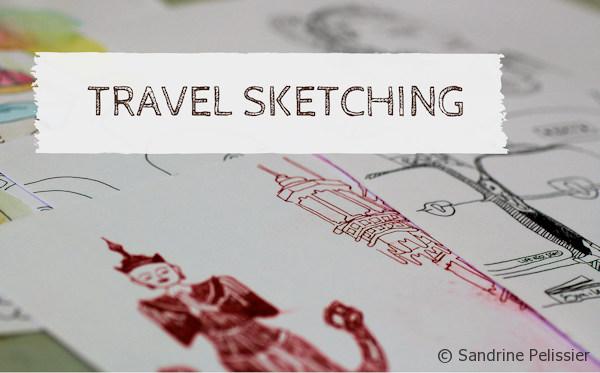
Travel sketching is a very enjoyable activity. I don’t consider myself an advanced sketcher, but I am really enjoying recording places and people while on vacation. I think sketches have a way to bring back vivid memories at least as well as a picture would, and they are more unique.
You might also be interested in: watercolor and pen figure drawing
We traveled to Thailand for Spring break and here is what I brought with me. With these basic supplies you will be able to sketch while travelling:

You can make a small portable watercolor set from a box of Barklays or similar candy and chewing gum packaging.
Here are the colors I used for my travelling watercolor box:
Paynes grey, sap green, Winsor green, ultramarine blue, Turquoise blue, permanent red, Alazarin crimson, cadmium yellow, burnt sienna, yellow ocher.
I am a Blick Art Materials affiliate and I receive a small compensation for sales. That does not effect in any way the cost of the purchaser’s order but it helps me keeping the content of this blog free.

We traveled with a group and a local guide and the rhythm was quite intense so most of the opportunities I had to draw and paint were during our travelling times or waiting in hotel lobbies. I will have to use my reference pictures to make more drawings of the places we visited.
Travel Sketching techniques
For drawing, I recommend you use a fine liner or fountain pen to make contour drawings. I like it better than using graphite as it will forces you to draw with assurance, knowing you won’t have the possibility to erase.
Don’t try to make your drawings perfect, little inaccuracies in perspective or lines that are not straight are part of the charm of sketching. Try to not use a ruler as it will make your drawings look very starch and unnatural.
Adding watercolor to your sketches
For adding color, the watercolor travel box will be very convenient. You can also use the watercolor pencils with the water-brush.
Here is a selection of my drawings and some of my daughter that she made from imagination while travelling:
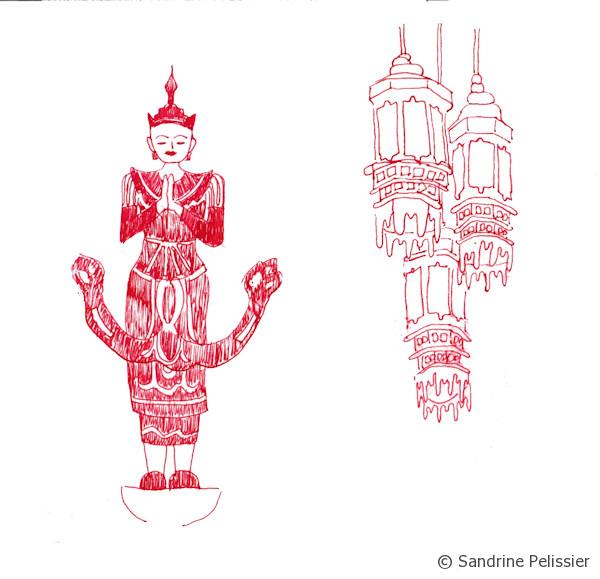
You might also be interested in:

Sandrine Pelissier
Watercolor and pen figure drawing, shooting art videos for your blog, website or social media, comments (6).
Excellent sketches Sandrine. Looks like your daughter is following in your footsteps hers are brilliant also.
Thanks Sonia, she will be very happy to read your comment 🙂
Endlessly creative! Some of the products are new to me but I promise myself a trip to Dick Blick in the very near future – so am adding to my shopping list already. The sketches are fun, Charlotte’s animals look great. I actually have sketch books almost unused – now I really must pack them when travelling, or even in the car. Thank you Sandrine.
Excellent! Thanks Eddi. I am sure you will enjoy sketching on your next trip 🙂
Sandrine you are a genius. I love the way you think. A gum box. 😀
Thanks Tracie 🙂 Maureen from our life drawing class gave me the idea.
Leave your thought here Cancel reply
Your email address will not be published. Required fields are marked *
Subscribe to newsletter
This site uses Akismet to reduce spam. Learn how your comment data is processed .
Search this blog:
Download this PDF
A Mixed Media Treasury of Techniques and Ideas
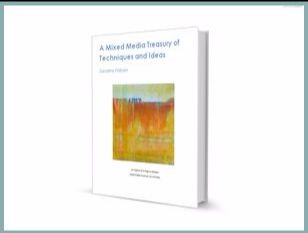
Learn from the comfort of your home:
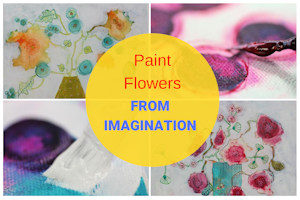
En Français

- Join Mailing List
Insert/edit link
Enter the destination URL
Or link to existing content
13 Best Travel Sketchbooks for 2023: Perfect Gifts for Artists and Travelers
July 20, 2023 May 18, 2022 | Dee
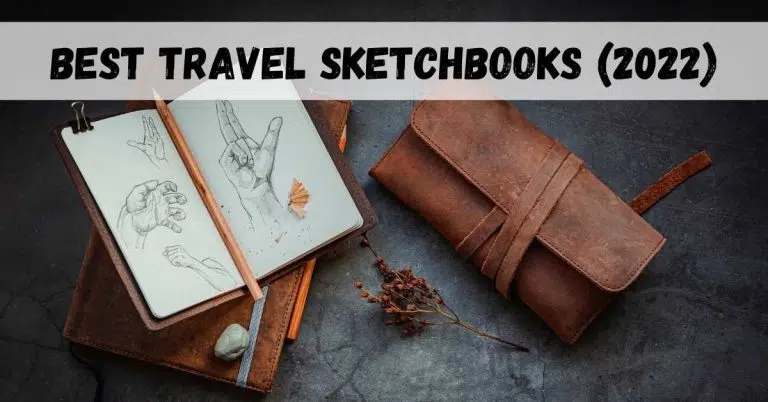
Sharing is caring!
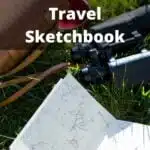
Last Updated on July 20, 2023 by Dee
Do you love to travel and sketch? If so, you’re going to want to check out this list of the 13 best travel sketchbooks for 2023!
These sketchbooks are perfect for artists and travelers alike, and they make great gifts for anyone who loves to explore the world.
Whether you’re a seasoned traveler or just getting started, these sketchbooks will help you capture your memories and experiences in beautiful detail.
Table of Contents
What is a travel sketchbook, you ask, best pocket travel sketchbook for pencil and ink, best vegan-friendly travel sketchbook, best travel sketchbook for colored pencils, best travel sketchbook for mixed media, best travel sketchbook for markers, best refillable travel sketchbook, best kids travel sketchbook, best vintage keepsake travel sketchbook, best mini travel sketchbook, best travel sketchbook for urban sketching, best travel sketchbook for graphite pencil or charcoal drawing, best travel sketchbook for watercolor painting, best pocket field travel sketchbook, paper weight, cold-pressed or hot-pressed, amount of pages, how do you make a travel sketchbook, keep your sketchbook close by, keep essential art supplies close by, release the desire to draw or make perfect art, commit to drawing/ making one page a day on your travels, annotate your drawings, 10 travel sketchbook prompts.
- [Best Watercolor Set for Beginners][Best Drawing Kit for Creative People][The Top Black Paper Sketchbooks][Gifts for Artists who Paint][Gifts for Artists who Draw][Art Journal Supplies]
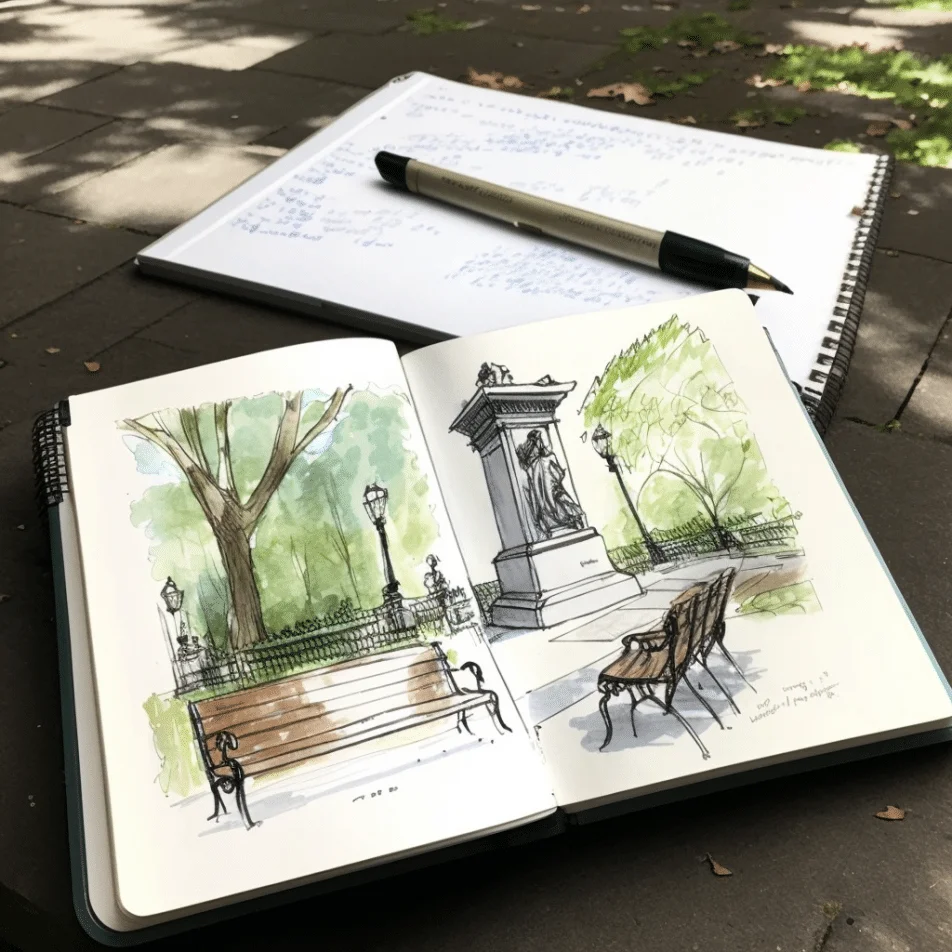
A travel sketchbook is essentially a pocket-sized or easy-to-carry visual diary, usually composed of good quality blank paper, on which you can draw, sketch, doodle, paint, and make art during your travels.
Whether you are traveling for work, waiting in a queue at the bank, or sitting on a bench in your local park, having a travel sketchbook is a valuable asset to creative living. It provides an immediate outlet for creative inspiration and ideas.
**This page may contain affiliate links to products I have used or recommend. If you purchase something from this page, I may receive a small percentage of the sale at no extra cost to you.**
Below is a list of the best travel sketchbooks for 2023.
13 Best Travel Sketchbooks for 2023
Pentalic pocket sketchbook traveler journal.
Size: 6” x 8”
Paper Weight: 120gsm
Suitable for: sketching with pencil and ink on the go!
The Pentalic Sketchbook Traveler Journal was made from recycled, acid-free paper for professionals, students, and artists to sketch journals or draw art and their surroundings.
It is an everyday sketchbook! It includes an expandable pocket, an elastic band to close it, and a ribbon to mark your page.
Ricco Bello Art Sketchbook
Size: 5.5” x 5.5”
Paper Weight: 180gsm
Suitable for: Dry mediums – pencil, pen, markers, pastels, and light washes
Is the Ricco Bello Art Sketchbook worth it? Yes! The Ricco Bello Sketchbook is a high-quality, vegan-friendly sketchbook with a vegan leather cover, and it is perfectly square in shape.
These are the ideal dimensions for sharing on social media. It is also important to note that this sketchbook is a lay-flat sketchbook, making it easy to work on a two-page spread. It also has an elastic enclosure and a ribbon to mark your page.
Arteza 5.1” x 8.3” Sketch Book
Size: 5.1” x 8.3”
Paper Weight: 175gsm
Suitable for: colored pencils, pencil, pen, ink, markers, and pastel.
The Arteza sketchbook is high quality and good for use with most media and in fact is at the top of my list for the best sketchbook for pencil and ink. It includes a ribbon to mark your page and also an expandable inner pocket to hold your visual references, notes, and ephemera.
This travel sketchbook comes in a pack of 3 notebooks and is very easy to travel with. It also has a 100% satisfaction guarantee. If you aren’t happy with it, you can simply ask for a refund.
[Related article: Aesthetic Things to Draw]
Tumuarta Square Watercolor Journal
Paper Weight: 300gsm
Suitable for: Watercolor, acrylics, pen, pencil, markers, pastel, and more. It also tolerates firm pressure from using an eraser.
The Tumuarta square watercolor journal is composed of 25% cotton 300gsm heavyweight watercolor paper. It is cold-pressed and easily holds mixed media studies – great for wet media!
The paper is acid-free and stays vibrant over time without turning yellow or fading. Another great aspect of this journal is that the sheets are microperforated so that they can be easily turned or removed if you want to.
The paper tears easily along the micro-perforations, and you can remove a page in order to frame an artwork you created during your travels.
This is a lay-flat sketchbook which means you can work on a two-page spread at once. This sketchbook has a sturdy cover with round corners to protect you from accidental paper cuts, and it also includes a handy back pocket to store your reference images , photos, ephemera , and small items you have found along your journey.
Arteza 3.5” x 5.5” Watercolor Book
Size: 3.5” x 5.5”
Paper Weight: 230gsm
Suitable for: Watercolor washes, pen, pencil, pastel, ink.
The Arteza Watercolor Book is a wonderfully portable option for a travel sketchbook. It is pocket-sized and has the perfect amount of tooth for watercolor painting and mixed media studies.
This sketchbook comes in a set of three It is a dual-sided sketchbook and is perfect for beginners and more advanced artists to explore their creativity.
The pages are acid-free and are natural linen-bound. It includes an inner pocket to store reference images, photos, and small items, and it also has an elastic strap to prevent it from opening and getting damaged.
[Related Article: How to Start Drawing]
Leather Writing Journal Notebook
Size: 7.3” x 5.0”
Paper Weight: 80gsm
Suitable for: Pencil and pen.
This classic spiral refillable travel sketchbook has a nautical, vintage aesthetic to it. It comes with 160 pages which are mostly suitable for sketching and writing.
The sketchbook cover is made from durable man-made leather, and it’s a handy sketchbook to have if you want to add or remove pages easily.
Travel Journal Kids Prompts Sketchbook
Size: 6” x 9”
Paper Type: Crisp white paper
Suitable for: Pencil and pen
The travel journal kids sketchbook is a great place for kids to record their experiences while traveling.
It provides prompts to stimulate their writing, drawing and art-making. It includes activities, gratitude prompts, and sketchbook pages to draw and log each day.
Kids are prompted to log the weather, what they saw, what they ate, who they met, and what they learned about during the day. They are also prompted to draw or sketch any interesting sites they would like to include.
This journal is durable and lightweight to carry around. It also makes for a great birthday or pre-travel gift and can be used during pit stops, waiting at terminals, or on the airplane, bus, or train.
Leather Journal Tree of Life
Paper Weight: 125gsm
Pages : 120
Suitable for: Pencil, pen, markers, and colored pencils.
This traveling sketchbook is a beautifully crafted Coptic leather-bound and embossed journal with a vintage tree design on the cover. It is handmade from 100% genuine leather, and no two journals are exactly the same. Because of this, it becomes a special keepsake for your sketching, thoughts, and ideas.
The paper used is hand-crafted, recycled, tree-free and environmentally friendly. It is acid-free, and because of the thickness and the fiber of the paper, there is no bleed-through from pen ink.
This makes it great for wet media and also a beautiful and creative birthday gift or travel gift for a loved one. In the unlikely event you don’t absolutely love your sketchbook; you have up to a year to ask for a full refund or free replacement.
Your purchase will also be helping children in Zambia in Africa, as a percentage of the profits go to Tehila, a Non-Profit organization that promotes the prevention of child cruelty.
Arteza 3.5 x 5.5” Mini Sketch Book
Size : 3.5” x 5.5”
Suitable for: Pencil, pen, markers, charcoal, and colored pencils.
Arteza is known for its high-quality paper and sketchbooks that are built to last. This is a great travel-sized sketchbook with thick paper and is perfect for all dry media and light watercolor washes.
This traveling sketchbook includes an inner pocket to store your art reference images, photographs, ephemera, and small embellishments. It also has an elastic strap to hold the sketchbook closed and a ribbon as a page marker.
Arteza has a 100% satisfaction guarantee – if you are not happy with the product, you can request a refund or replacement.
Field Artist 4” x 4” Square Watercolor Journal
Size: 4” x 4”
Paper Weight: 200gsm
Suitable for: Watercolor or ink washes, acrylic paint, pencil, pen, charcoal, and markers
The Field Artist Travel Sketchbook comes in a square format, the perfect format for Instagram artwork posts.
This traveling sketchbook contains high-quality, 200gsm thick paper and cold-pressed paper, ideal for watercolor or ink washes, sketching, and mixed media art. It is a perfect travel-sized sketchbook for artists who want to work en Plein air or carry it around urban scenery.
This sketchbook is durable and is hardbound in soft, gray thermo-PU leather. It has a panorama fold-out in the back cover for an elongated drawing surface as a cool extra.
[Related article: How to use graphite paper for drawing]
Moleskin Art Sketch Album
Suitable for: Pencil and pen drawing.
A very popular choice of a sketchbook, this Moleskin Sketchbook is pocket-sized and high-quality.
This is the best pocket sketchbook on my list because it is durable and is suitable for use with a wide variety of dry media. It’s is a pity that it doesn’t have thicker paper because then it could be used for wet media too.
[Wondering How to Find Your Art Style? Read this blog post!]
Strathmore 483-5 Softcover Watercolor Art Journal
Size: 8” x 5.5”
Suitable for: Watercolor, ink, pen, pencil, mixed media, and most other media.
Strathmore paper is high-quality with natural white color and is perfect for mastering ink and watercolor washes. Because the 300gsm paper has a good tooth, it is also ideal for mixed media artwork. This is a great sketchbook to travel with and has a velvety softcover.
Leda Art Supply Pocket Stitched Sketchbook or Field Journal
Paper Weight: 216gsm
Suitable for: Pencil, ink, pen, pastel, charcoal, and light washes.
Leda Pocket Stitched Sketchbook or Field is ideal for light color washes and most dry media. It fits easily into your pocket for easy traveling and sketching anywhere. It has 160 pages, so it won’t be used up too quickly and is bound in durable leather, which means it is ideal for the outdoors.
It has been tested by wilderness guides who take the Pocket Leda on backpack trips in the Rocky Mountains! It is the perfect field journal and a great gift for outdoors lovers!

How do I choose a sketchbook?
There are various factors to consider when you are choosing a travel sketchbook to buy.
What is the best-sized sketchbook?
It is important to reflect on your own artistic processes and artmaking. What size are you comfortable working on, and what size do you usually work on?
If you choose a travel sketchbook that is too large, it can be difficult to carry around with you on your travels. You really want a sketchbook that is easy to take out and do a quick sketch in.
On the other hand, if you choose a sketchbook that is too small, then you might feel frustrated by the limited space available for your artmaking.
However, this all depends on your style of art-making and what size you usually work on.
It is good to test out some quick impromptu sketching or art-making on different-sized plain sheets of paper to get a sense of what would better suit your needs.
Spend an hour sketching someone at a café on a sheet of A6 paper, or sit on your balcony and draw a stationary bicycle on an A4 page.
Generally speaking, a travel sketchbook is a smaller and more compact than a regular sketchbook because it must be travel-friendly and easy to slip in and out of a pocket or bag.
A5 size or approx. 5” x 8” is my ideal travel-size sketchbook. It doesn’t quite fit into your pocket, but it is small enough to fit into a handbag easily.
I also find that working on an A5 page size means that I have a good amount of space to quickly sketch down something I see on my travels in pen, pencil, charcoal, or watercolor.
This is a really important factor because you want to make sure you have selected a strong sketchbook to weather the elements!
Your travel sketchbook is going to be slipped in and out of your bag or pocket often, it’s going to be placed on strange surfaces (like rocks, a grassy mound, or the sidewalk!), it’s going to be drizzled on, and possibly have coffee (or wine) spilled on it!
The best travel sketchbook must be well bound and have a waterproof protective cover to prevent the book from buckling and the pages from getting damaged.
It also really helps to have an elastic band or tie of sorts to hold your books closed. This will prevent your book from opening in your luggage and getting damaged.
Make sure to choose a travel sketchbook that has good quality paper-heavy paper.
A good quality sketchbook will have a cotton paper that is at least 120gsm. This is perfect for sketching and using dry media on paper. It will also tolerate you using an eraser firmly on the surface without tearing it.
If you want to work with markers or fountain pens, it is recommended to go for a heavier paperweight, – 200gsm or more. This means the paper is denser and won’t have ink bleed through it.
300gsm cotton paper is ideal for painting with watercolor and ink washes. You should also choose a travel sketchbook with 300gsm paper if you are looking for a sketchbook in which to work on mixed media art. This paper will easily hold various liquid glue and gel mediums without buckling or tearing.
A travel sketchbook can have either cold-pressed or hot-pressed paper. The cold-pressed paper has more texture to it and has a more pronounced tooth, whereas hot-pressed paper is smoother with almost no tooth.
The bumps and texture of the cold-pressed paper allow it to better hold and absorb liquid without buckling. This makes cold-press paper ideal for watercolor painting, ink washes, and mixed media art.
The hot-pressed paper doesn’t hold liquid very well and tends to buckle when washes are applied on its surface. For this reason, hot-pressed paper is better suited for dry media like graphite pencil, charcoal, pen, and colored pencil.
It is important to note that markers will work on heavier gsm hot-pressed paper, but bleed through will occur on thinner paper.
Choose a sketchbook that is lightweight and easy to carry. A sketchbook with too many pages can make it more difficult to carry around. Aim for a balance between a good amount of pages (at least 70) and something that isn’t too heavy.
One of the most important factors to consider when looking at the best travel sketchbooks is layout. It is good to get a lay-flat travel sketchbook if you would like to work on a two-page spread at once. This means that the sketchbook will open up and lie flat so both pages can be worked on at the same time. Essentially, you can create artwork that extends over both pages.
It is very useful to have a spiral bound lay-flat travel sketchbook if you are painting botanicals or detailed illustrations where you don’t want to be holding the sketchbook open all the time.
That being said, having a sketchbook that you can hold with one hand, and sketch in with the other is absolutely fine! In fact, that’s how most artists work!
You can make your own travel sketchbook from scratch by arranging sheets of paper into collections called signatures. You can then sew the signatures into a cover to bind the book. For more details on how to make your own sketchbook from scratch, you can read my article on Junk Journal 101 for tips on how to do this.
You can also make your own sketchbook by using a readymade old textbook, encyclopedia, novel, or another book with a firm cover.
You can remove and add pages and paper to the book and repurpose the book as an art journal or travel sketchbook. This is called an altered sketchbook or art journal.
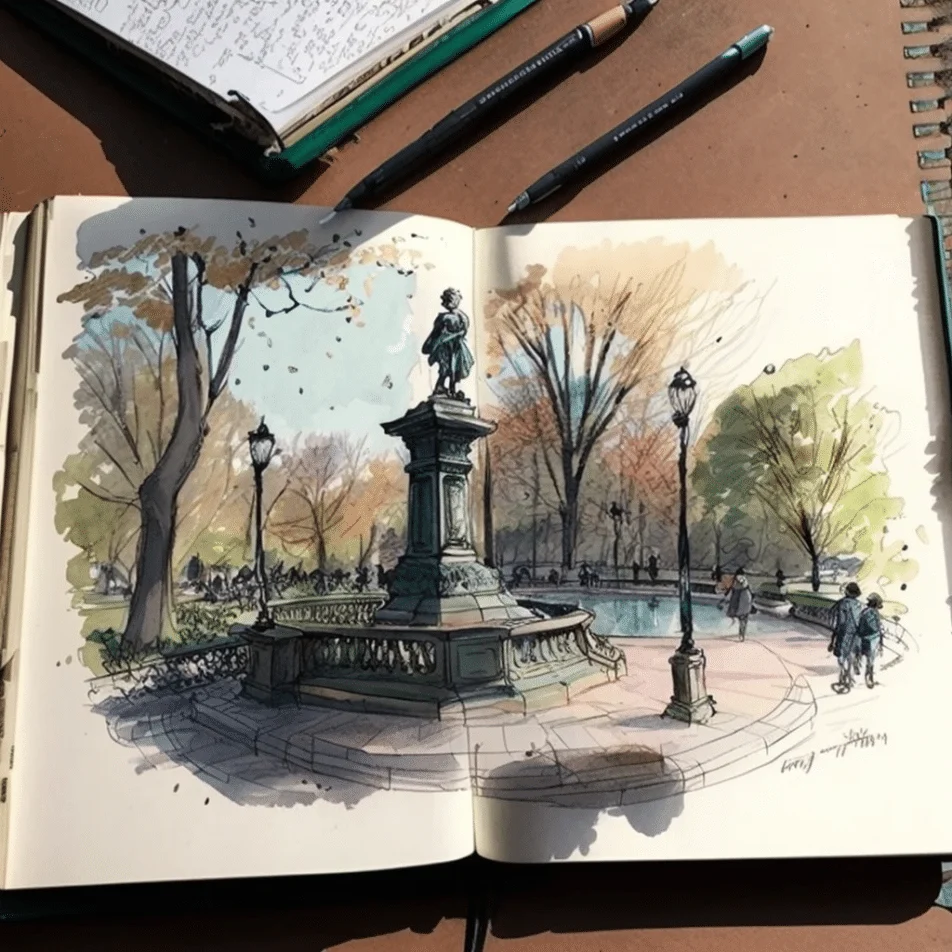
[Related Post: Let’s Explore Pen Ink and Watercolor in our Travel Journals]
How do you sketch when traveling?
[Related Post: A List of the Best Junk Journal Supplies]
Here are some tips for sketching while traveling:
Have your travel sketchbook available in your handbag, backpack, or pocket for those moments when you are suddenly inspired by something you see on your travels. You really don’t want to be wasting precious time and energy rummaging around in your luggage for your sketchbook!
It’s a good idea to have a small pencil bag that can hold your essential supplies – pencils, pens, eraser, watercolor pans, glue stick, scissors, and markers. You can also get a travel-sized watercolor pan that is easy to whip out when the moment strikes!
Perfectionism kills creativity. Remind yourself that making art is much more about the process than the end result, and beauty is found in imperfection.
In order to reap the fruits of your artistic labor, it is important that you work consistently in your travel sketchbook. Just think about how great it will be at the end of your journey when you can look back over all the creative explorations and memories of your travel.
Consistently working on your travel sketchbook will also get your creativity flowing, and new sketchbook ideas and thoughts will emerge. You will also find your art-making skills will improve with this regular practice.
[Want to sketch better? Read my top tips on How to Improve Your Drawing]
Just because it’s a travel sketchbook doesn’t mean you can’t write in it too! It’s a great idea to write down notes about what you see and experience on your journey. Write about what you are drawing and what inspires your artmaking.
Here is some excellent travel sketchbook art prompts to start you on your travel sketchbook!
- Morning light
- Something New
- A Beautiful Stone
- An Interesting Stranger
- Music or Song Lyrics
- A quote from a book I am reading
- Landscape/ Cityscape
- Café/bar/restaurant scene
Other Art Supplies You Might Need …
[best watercolor set for beginners] [best drawing kit for creative people] [the top black paper sketchbooks] [gifts for artists who paint] [gifts for artists who draw] [art journal supplies].

If you are an artist who loves to travel or a traveler who loves to sketch, we hope that this list has helped you choose the best travel sketchbook for you and has given you some ideas for your next artistic adventure 😉
In the comments below, we would love to hear about your favorite sketchbooks and art supplies for traveling. Happy sketching!
Other articles you may enjoy…
Digital Painting Tips
21 Procreate Coloring Pages to Help You De-stress and Relax
15 Best Pencil Cases for Artists & How you Should Choose One
[Looking For a Mixed Media Sketchbook? 16 Best Mixed Media Sketchbooks for Wet & Dry Media]
Leave a Comment Cancel reply
Save my name, email, and website in this browser for the next time I comment.
Sharing is Caring
Help spread the word. You're awesome for doing it!
Artjournalist
101 Travel Journal Ideas: Page Examples, Inspiration & Prompts
Use these 101 travel journal ideas as prompts and inspiration to fill your travel journal no matter where your next adventure might be.
These 101 Travel Journal ideas will help you fill up a notebook of all sorts of adventures – whether it’s an exotic voyage or the everyday journey in life.
And of course, please, please, please DO NOT feel like you have to do every single thing I put on this list – especially all in one journal. {That would be one awfully big, heavy book to lug around!}
Whether you’re off to a grand exotic adventure, dreaming of places you want to go or maybe just enjoying a stay-cation and local points of interest, I hope you will find this post of travel journal ideas inspiring to document your next creative adventure.
101 Travel Journal Ideas: What to Put in a Traveler’s Notebook
1. start with a map.

Maps are always great in a journal. You can paste or tape them in or even make pockets and envelopes with them. Drawing maps can be a lot of fun also.
There are also a lot of ways to get maps:
- Google Maps: You could even print out a satellite/street view version or the directions.
- Maps Category on Wikimedia Commons : Lots of great free maps you can download and print out.
- Old Books & Atlases: If you have an old set of encyclopedias that’s way outdated and not of collector value, there are likely a lot of great maps to use in your journals. I love finding an old atlas at the thrift store or book sales.
- Marketing Maps: Many welcome centers, tourist agencies and travel rest stops have all sorts of maps available in marketing brochures.
Staying local? Why not make a map of where you live? It could be your neighborhood, the backyard or even your kitchen. Doodles and sketches are perfectly 100% awesome here.
Another idea is to cut out shapes from old outdated maps you have. I sometimes buy old atlases and books with maps just for this purpose! These hearts shown below were cut out using a heart shaped punch similar to this one on Amazon .

I love scrapbook punches for so many different things in my art journals – you don’t even need that many of them and you can get perfect cut-outs anytime. These are great to make in advance before you travel somewhere – and you can get all sorts of different shapes! Circles, tags, you name it.

2. Can’t Decide Where to Go? Make a Mind Map
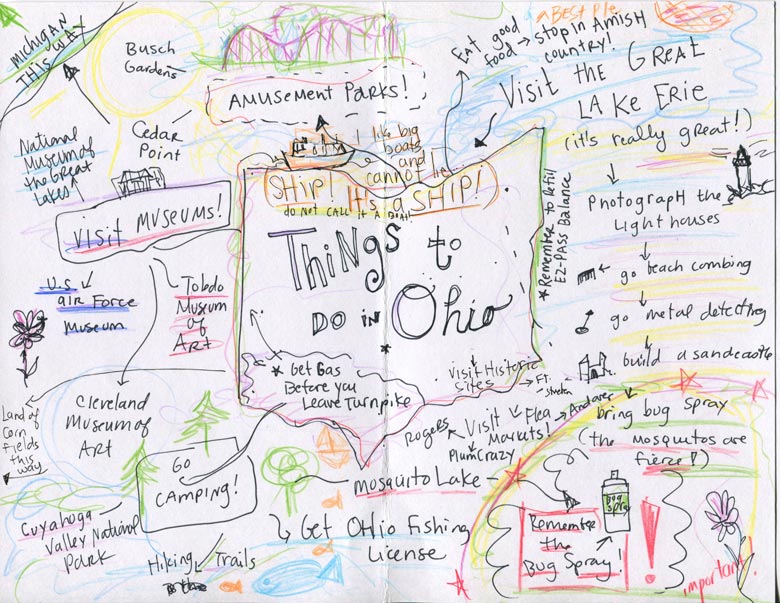
As creative people, making plans and staying organized is sometimes a challenge. I know when I go anywhere it sometimes feels overwhelming to keep track of all the details or even just decide what I want to do. Sometimes I don’t even know where I want to go or what I want to do.
Mind Maps are great for easily mapping out ideas, dreams, plans, thoughts – especially if you’re not sure how to really organize them. You can draw them out on paper or even use mindmap software to create one you like and then print out and decorate.
Sometimes just making a mind map of an ordinary place can be fun – this mindmap of things to do in Ohio actually makes me excited to go there this summer. {Living next door in PA sometimes causes me to take all the neat things to explore in Ohio for granted.}
Even if you’re only going as far as your imagination, a mind map is a great way to explore all sorts of different ideas and concepts.
3. Packing List & Trip Prep
If you are using your travel journal as part planner, part journal, making a packing list and a to-do list before leaving is a great idea.
This is not only practical, as it will hopefully help you remember everything, but it can also help document some of the excitement and anticipation for the trip before you even arrive at your destination.
4. What’s In Your Bag?
While similar to a packing list, it can sometimes be fun to either snap a quick photo or sketch and doodle a picture of your suitcase and bags.
This can also be a fun way to document different day trips – it’s always interesting to see what sorts of things you consider essential to carry with you – especially if you find yourself looking back 5 – 10 years later. I am still in awe that fanny packs are coming back in style .
5. Make a Bucket List
A bucket list is a list of all the things you want to do. Maybe this is a list for while you are at a specific location for a period of time – or this could even be a list of all the different places you want to visit during your lifetime.
Some of the examples of things you could create for a bucket list:
- Places you want to go
- Region Specific Foods you want to try
- Things you want to do
- People you hope to see
6. Found Things: Collecting Ephemera & Other Treasures
Lately I’ve been keeping my eyes on the ground whenever we go places. I’ve found all sorts of very interesting things by keeping my eyes and my head open to finding stuff at random.
I’ve found old coins and pennies, tokens, dropped business cards – all sorts of interesting stuff. A lot of times people may think this stuff is just trash, but if it’s flat enough it can fit into a journal and a great way to document things you’ve encountered while out exploring the world. You never know what you might find on a sidewalk.
7. Save Those Receipts
Receipts are a great way to keep track of different things you do and need during your trip. Maybe you need a special airline approved travel bag you buy before the trip, or it’s the receipt for lunch at that adorable sea-side cafe you stumbled across.
Usually these sorts of things also have geographic information printed on them, so it can make even the national/international chains a little more interesting.
I always joke that doesn’t matter where we go or how well I plan I usually end up at a Wal-mart buying supplies we forgot – but hey, at least it’s fun to see your Wal-mart receipt has a different city and state printed on it.
8. Attach an Envelope or Pocket for Collecting & Storing Supplies
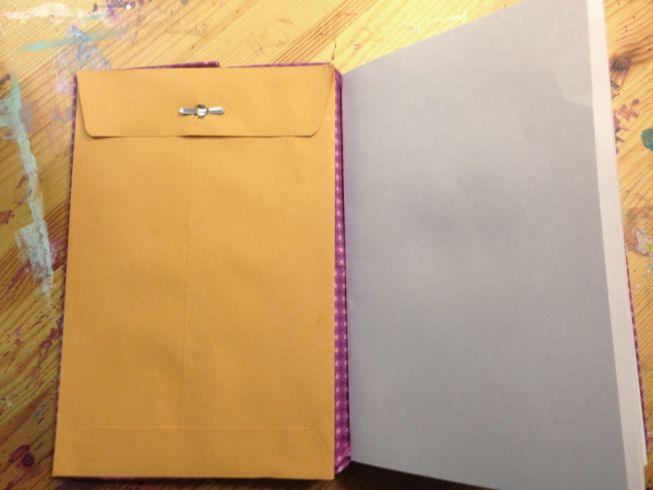
Speaking of ephemera and found things, another great idea for things to include in your journal is an envelope you can use as storage. The pocket for collage supplies is one of my favorite things about Dylusions Art Journals – so handy for holding stuff!
Since most of my journals are either 7×10″ or 6×9″, I like to use the 6×9″ mailing envelopes and glue them or tape them into my notebooks and journals to use as a pocket for holding stuff. They are great for fitting all sorts of paper scraps and other things you might find on the trip!
If you are like me and realize what a deal it is to buy 100 clasp envelopes on Amazon , you can use the envelopes to make many, many more junk journals and art journals in the future!

Beyond just envelopes, there are also a lot of other ways to display and store things inside of a journal, and one of the great things to use for this are the pocket page protectors often used in pocket scrapbooks.
If you are trying to keep things small and simple while traveling, Simple Stories is one brand with a wide variety of differently configured 6×8″ Pocket Page Protectors that can be a great way to hold and display items you might find in your adventures. Bonus : No glue stick needed.

9. Keep a Record/Log of Daily Events
I know sometimes when I actually DO go on a real vacation, I don’t always have time to keep track of everything we do. One good way to get around this, without necessarily having to write a whole lot or spend the day drawing and gluing things in the book is to keep a very simple log each day.
This doesn’t have to be elaborate. Keep it simple – use the actual date or the day of the week and challenge yourself to j ust write one word for each day . This will help you remember details of the trip long after it happens.
- Monday – Beach
- Tuesday – Friends
- Wednesday – Museum
Keeping a log helps you remember things so that you can continue to fill the book up with memories and ephemera from the trip long after you return.
10. Method of Travel: Document Your Transportation
There are plenty of ways to get from one place to another. You can ride a bus, take a train, or fly up high in a fancy jet plane!
Once you arrive at your destination, there can also be a lot of additional things to note about getting around town, especially if you are traveling somewhere that drives on opposite sides of the street or relies primarily on bicycles or scooters for transportation.
All of these things make for great ideas for stuff to doodle, sketch, and write about!
11. Accommodations – Where Are You Sleeping?
Whether you’re staying in a hotel, airBNB, fancy resort or maybe your RV, there are plenty of things to document about where you are staying during the trip.
Some ideas for ephemera might be brochures, print-outs of your reservation confirmation, map directions to the location. You can also always do a sketch of your room or view out the window.
12. How’s the Weather?
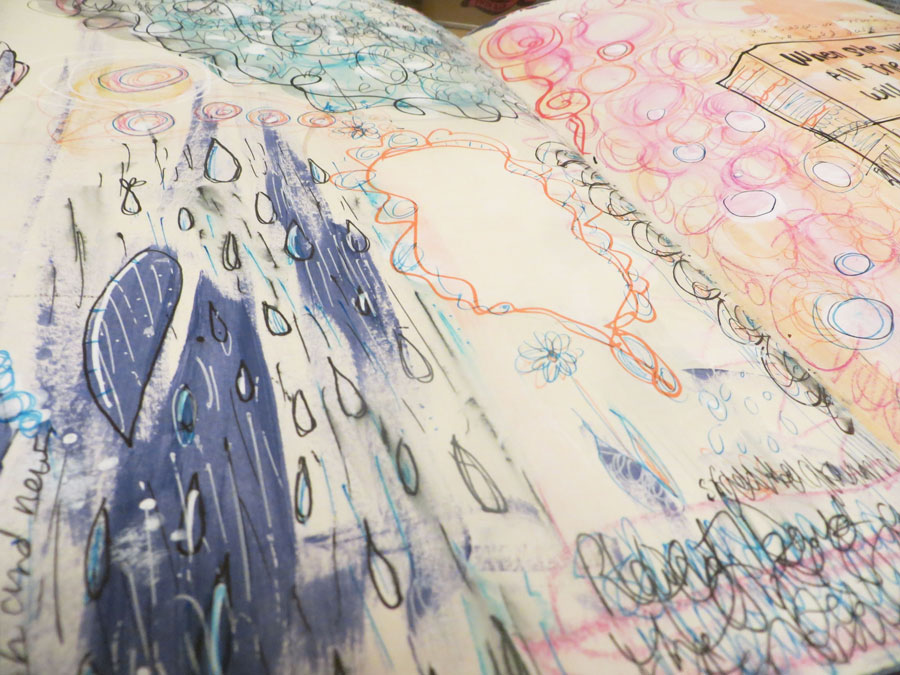
Weather is one of those things that might be considered “small talk” but it’s also something I know can really influence what types of activities we do when we are on a trip.
We do a lot of camping – so if it’s warm and sunny, you’ll find us hiking, kayaking, and fishing. If it’s rainy, you might find us playing card games, visiting shops, or checking out area museums.
Sometimes bad weather can even make a trip more fun than expected – you might check out something new you ordinarily would have skipped, or maybe you will come home with a funny story of events.
You can record different weather events bullet journal style in your notebook or just draw different weather related symbols whenever you jot down any notes.
13. First Impressions – Any surprises?
Once you arrive at your destination, take a note of some of the things you notice right away or any different thoughts you might have about the trip there so far. This is especially a good idea if you are going somewhere completely new that is not like anything you have done before.
You might also want to take note of what expectations you had prior to leaving the trip – Is there anything that surprised you once you got there? Did you over estimate or under estimate what it might be like? Sometimes the anticipation before a trip can be much different than the actual reality once you get there!
14. Paint Backgrounds in Advance to Pack Less Art Supplies
Something I like to do in art journals when I’m traveling is to paint the pages before I go with acrylic paints I like to use. It doesn’t have to be anything elaborate – maybe some simple stripes for writing on, or you can even use by block-by-block art journal technique to prep different page sections in advance.
This gives your pages a nice background and start for any type of journaling or doodles – and you don’t have the hassle of having to pack or carry around a whole lot of supplies. All you need from there is a couple of favorite pens and maybe a glue stick.
15. Try Watercolors for Compact & Portable Art Supplies
If you do want to paint while you are on your trip, a set of travel watercolors is a great option because they are generally very compact and easy to clean up and carry around – some pocket field sets could literally fit in your pocket and are smaller than most cell phones!
Watercolors are a great fun way to give your pages a little hint of color – and of course you can always use the opportunity to try out some new and different watercolor painting techniques !
16. Portrait Sketches
Meeting new people, or sometimes just seeing new people can be very inspiring to practice sketching different portrait drawing techniques.
Portraits of new faces and people can be a great way to practice and hone in on your skills in drawing and painting faces – it can also serve as a springboard for additional art to make even when you return from the trip.
If the idea of sketching or painting a portrait makes you nervous, do not worry – there are lots of great resources to help you out here, like Mixed Media Portraits With Pam Carriker – Jane Davenport also has lots of great books such as this one which can be a wonderful resource to start with.

17. Draw & Sketch Landmarks
No matter where you go, there are sure to be landmarks. These can be great sources of inspiration for stories and drawing practice.
Some landmarks are famous {such as The Statue of Liberty in NYC or The Sistine Chapel in Vatican City} – other landmarks are more of directional markers or might have personal significance to you. One example is a water tower we always look for when we drive past it on the highway.
18. Architecture
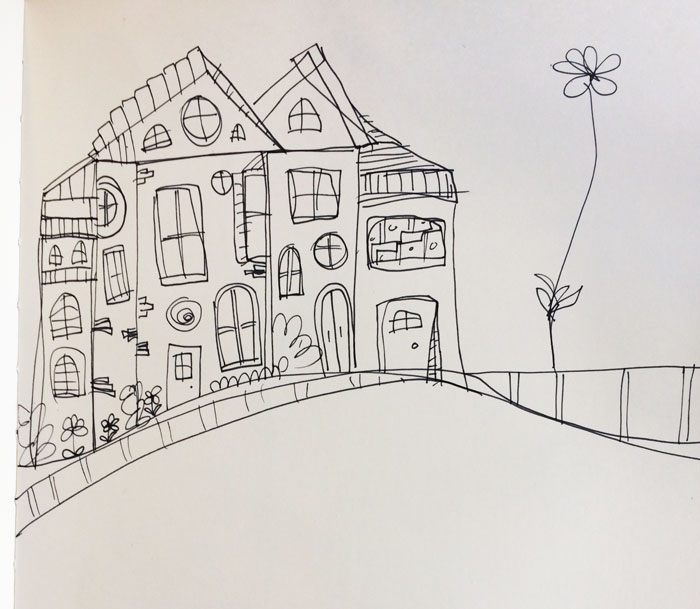
Wherever you find yourself, take some time to notice different architectural details such as windows, doors, gates, fences and roofs. Make a page inspired by the different things you see! This can be a detailed sketch or simply a whimsical doodle like the photo shown above.
19. Make a Cityscape
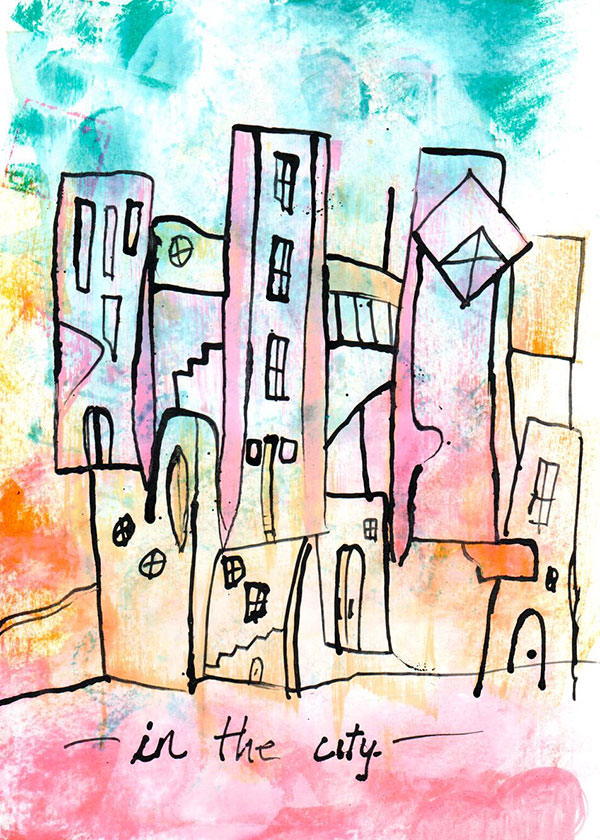
After you pay some attention to the different architectural details, it can be fun to incorporate this into cityscape art.
It can be a very fun challenge to recreate a drawing or doodle of the places you visit in your journals, and of course you can always combine these with other drawings or collage and ephemera.
Many of the Watercolor Doodle Cities here and other city-inspired paintings I make start from inspiration from real-life cities and towns I’ve visited.
20. Capture the Landscape
Sketching or painting the landscape can be a wonderful way to document all the beautiful views in nature. You can also photograph these scenes to inspire you to make more art when you get back home.
Maybe it’s an early morning sunrise or a field you drive past on the highway, the waves at the beach or even the way the mountains look in the distance.
21. Use Whatever You Can Find for Art Supplies
I like to pack light when I’m traveling, and so that usually means sadly most of my art supplies have to stay at home. The good news is the lack of supplies can push you to try using everyday materials in creative ways.
For example, say you go out for tea – you can use the tea in your cup or a used tea bag to create tea stains on your papers. {Just be careful not to smear any ink from pens unless that is your desired effect!}
Over the years I’ve used all sorts of things to create with in my journal beyond traditional materials. A dandelion can often be used to get yellow coloring on paper – you could even use makeup like lipstick or eye shadow and blush on your pages.
22. Pay Attention to Special Events & Holidays
While you don’t need a special event or holiday as an excuse to explore the world, often times we do go places depending on the season and traditions we like to celebrate.
If your journaling happens to fall around a certain holiday or you attend a special event in your adventures, there can be all sorts of seasonal things you can add onto your pages – hearts for Valentine’s Day, Flowers in the Spring, Pumpkins for Halloween, Christmas Decorations, etc.
23. Everybody Eats: Food is Never Ending Inspiration
There are some places I would visit again just with the sole purpose of eating amazing food. Food also makes for an endless source of things to put in your journal. You might not need to record every single meal or snack, but if you enjoy something good – make a note of it or use it as inspiration for art.
Another thing you can do, especially if you visit different countries is save food wrappers. Different languages, different wrappers – all these things can easily be added into your journal and will even help you remember what foods and restaurants you like if you should visit that place again.
24. Street Signs & Names
As someone who loves all things words, letters and numbers, I can’t help but feel gravitated towards interesting signs we see in different places. These can be great starting points for drawings, sketches or even things to photograph and add to your pages at a later time.
25. Read any good books?

Sometimes the books we read can inspire our travels – or a book can help us pass the time on a long bus ride or flight. Vacation is also a good time to catch up on books you’ve been wanting to read.
I love books so some of my favorite places to visit while traveling are small bookstores and libraries – I always find some nice treasures that way!
26. Foreign Language
If you’re traveling to a country where English is not the native language, it can be very fun and interesting to find different things that have the country’s language in your journal.
Whenever I’m shopping at used book sales, I often find a lot of foreign language dictionaries. These make for excellent paper backgrounds to use in junk journals, or you can always have fun copying the words to practice your foreign language skills.
Staying local in your own hometown? Have some fun visiting regular mundane places by learning or practicing a different language.
¡Vamos a cocinar papas en la estufa!
Even a place as mundane your kitchen can be more fun if you learn fun ways to explore it as a traveler. This can also be a great way to help your kids practice their foreign language skills.
27. Everyday Life
What do the people who call the place you are visiting home everyday? Take some notes, sketches or photos of a day in the life of a local.
Another thing that can be fun to do is to imagine for a moment if this place was your home, and not just a place you were visiting. What might you like or dislike about staying in that one place long-term?
28. What are other tourists doing?
Every time we’ve visited tourist-destination types of places it is always fascinating to watch the other travelers and what they are doing. Maybe you see hundreds of people with cameras, or you see people waiting in line to get their picture taken next to a certain attraction.
29. Trees & Flowers
I spend most of my vacations immersed in nature and I love drawing and painting trees and flowers. You might also want to keep some wax paper in your notebook – this can be a great way to preserve flowers or leaves.
30. Birds of a Feather
When we visit cities I always notice pigeons, and I always see seagulls at the beach. I love photographing ducks! Sometimes places we go have aviaries to visit. When we go camping, we love looking for woodpeckers, cardinals, and other birds.
You can fill your journal with bird related images or just make a list or doodles of the different birds you might encounter.
31. Animals
If you love animals, this is another great source of inspiration while you are traveling. Maybe you go to a nearby zoo, or maybe friends you are staying with have a friendly cat.
Some places you visit may even have animals you don’t typically see that often. I remember when I visited Toronto in Canada I saw so many moose statues everywhere we went!
32. Notes From History
Most places have historical centers – even small towns often have an interesting past. If you enjoy historical points of interest, there all sorts of ways to incorporate this on your pages.
Use cut outs from brochures or old books, record facts, or even attempt to recreate a scene from history in your journal. This is a great way to use up some of your favorite vintage ephemera also!

33. Famous People / Persons of Interest Who Lived there
Almost every place has people who are famous or played an important role in the history of the area. It can be very interesting to research before you go some different people who have lived in that place – and maybe even tour some of the different things that would have been part of their daily life.
One example of this is when a friend of mine in high school was slightly obsessed with all things Trent Reznor and Nine Inch Nails. She had learned he grew up in boring old Mercer, PA {not so far from the same boring town we lived in} – so we decided to go up one day to check it out.
It was very neat to think hey, here’s this little town in Pennsylvania just like our little town in Pennsylvania, he was a band dork, we were band dorks. It is always neat to see these sorts of places, especially if it someone who is inspiring to you, because in a way you can see the kind of environment that inspired them to become the creative person they are.
34. Music Playlist
Speaking of Trent Reznor – let’s talk about another favorite aspect of traveling for me – plenty of opportunity to listen to music!
I can’t think of a better way to enjoy a long ride than to come prepared with a good music playlist. If you’re riding passenger on long trips, a good music playlist and a sketchbook is a great way to help pass the time.
I also like to listen to different music that is popular in different areas. It’s way more fun to listen to Blue Grass music if you are in the Mountains of Virgina or a little country music on the city streets of Nashville.
There are so many different types of music around the world, and all of it can be very inspiring to listen to while writing or creating.
Need more ideas for how to incorporate music into your journals? Our list of creative music inspired art prompts can help inspire you!
35. Textures
Make a page about different textures you might encounter on your trip. Maybe it’s the sand between your toes, the concrete on the sidewalks or the familiar softness of your favorite shirt in a place where everything is different.
You can even optionally include some of these textures into your journal, especially if you encounter things like fabric swatches or handwoven items.
Another idea is to use different textures from objects around you as unique stencils and stamps. You can do all sorts of mark making with different textures in your book!
While I suppose this could fall under “food” – coffee for me is more than just a tasty caffeinated beverage. Draw a Picture of Coffee with the different backdrop of the place you visit. Save ephemera like napkins, coffee stirrer or receipts from shops you visit.
Pay attention to ways coffee is prepared and served. If you are visiting a place that grows and produces coffee, this too can be very fascinating to learn about and try different flavors native to the area.
37. Souvenirs
Do you collect anything? Some people collect pennies, spoons, key chains, salt shakers – you name it! Collecting is a fun low-stress hobby and traveling can be a great way to find new things.
If you are a collector of something, it can be fun to make a page about different sorts of things you like to collect. If you don’t have a collection yet – what is one you might you be inclined to start or find interesting?
Many different places you might visit often also have souvenir shops with all sorts of interesting things for the area. Even if you’re not a collector, you may enjoy sketching or making a list of the sort of things you notice.
38. Pick Up a Newspaper – Local, National & Global News
It’s always interesting to read the news somewhere you aren’t. It gives you a greater understanding of what types of things the residents who live in a place might experience on a regular day to day basis and what is important to them.
Another bonus is often times when you visit a new area the newspaper may syndicate different feature columns than your papers back home. This could mean new recipes, different horoscopes, puzzles, comments, and opinion pieces.
Newspapers are also great to use in collage and art you might be inspired to create, especially if you have very limited access to art supplies.
What does the place you’re visiting smell like? Maybe you can smell freshly baked bread drifting across the plaza, or it’s the smell of the ocean next to you, or even just the smell of pine trees in the woods.
Paying attention to how all of your different senses experience the place can help you remember the adventure all that much more.
40. Include Conversations With the People You Talk To
One thing I enjoy doing when traveling is meeting and talking to new people and listening in on what people might be saying at the different places we visit.
It’s funny, but some of the conversations I remember are not exactly quotable, but totally memorable enough to document in a journal. One time when we were at a beach an old man was talking to us and told us we needed to visit a place that was about 6 hours away.
“They have the most unbelievable peaches! Miles and miles of orchards…” he said. Well, after talking to him we decided to go that way the next day and yes, they did have peaches, but we were mostly awed by the unbelievable beautiful beaches!
Had we not talked to that stranger on the beach that day we never would have discovered one of our favorite beaches in the U.S.
41. The Local Dialect
I live in the Pittsburgh area and we are sorta famous for our unique dialect. Many local shops sell Yinzer stickers and other Pittsburghese types of things that are always popular with tourists and would make great journal fodder.
If you happen to be somewhere, pay attention to different words and phrases people use for things. You might be surprised how many sayings and words you pick up that aren’t in any foreign language dictionary!

42. Quotes About the Area and/or General Traveling
There are all sorts of great quotes that can be a great way to add to the journal. You can include general travel quotes in your journal while you are getting ready for the trip – or of course you can always add these once you are back.
43. Interview The People Traveling With You
It’s always interesting how two different people can have two different options and memories about a trip! Traveling with kids? Ask them their thoughts – and of course don’t forget to encourage them to create their own travel journals!
44. Hidden in Plain View – Important or Sensitive Information
It’s always a good idea to have a paper copy of important info while you are in a different place – especially if WiFi access or phone reception might be hard to come by.
While I don’t recommend keeping sensitive info in plain sight in a journal, sometimes you can give yourself cryptic ways only you would know to have a reference for things like addresses or bank account info.
Some ways you can do this is by drawing the numbers in a certain specific pattern, or you could even make up your own secret code.
45. Reference Lists & Safety Info
I’m sorta neurotic about safety, so I like to include helpful safety info in my notebooks, especially because we spend so much time outdoors. This might be something as simple as a mini first aid guide or a list of emergency numbers for the area. If you are traveling in a foreign place, you may even want to list some emergency contacts in the notebook.
I also like to print out this type of information to keep in planner binders. For the planner I keep in our camper, I included printed information for dog medications and first aid, since our dog has a habit of finding bees nests, eating fishing rods and getting into all sorts of trouble.
46. Currency From Different Countries
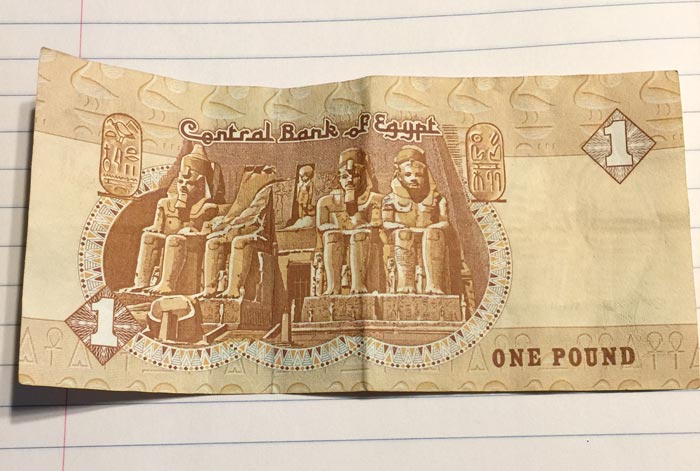
Many foreign countries have different types of currency that can be very interesting to keep in a journal. If you have a few smaller value notes leftover from a trip they can be a great thing to put in a journal or slip into a clear pocket you attach to the pages.
47. Track Your Budget
Budgeting might not seem exciting, especially while supposedly on a vacation! Still, it is definitely an inevitable part of life that doesn’t go away just because you are somewhere different!
Fortunately, it can be way more fun to do when you find a way to express your creativity in your journal or planner. Keep records of expenses while you are traveling and think about different ways you can save money.
If you haven’t left for your destination yet, there are lots of great ways to plan a trip without spending a lot. Make a page about how you will save for an upcoming trip or make a list of ways to you can see the world without going into debt.
48. Random Fun Facts
Do you enjoy games like trivial pursuit? Something that can be fun to do before you leave is read up on different fun facts about an area, or you can even just jot down these things as you experience them in the place you visit.
Random Fun Fact Example: We can thank computer scientist Scott Fahlman at CMU in Pittsburgh for the widespread use of the smiley face symbol . 🙂 Pittsburgh is also home to another famous smiley face – the Eat ‘N Park Smiley !
49. Local Business & Industry
Do you ever need to travel for work? Business travel can sometimes create all sorts of new interesting opportunities to see sights and document parts of a place that don’t exactly make it to the city guides!
Many cities are also famous for different things related to businesses and industries. Factory Tours can be super fascinating and educational – they also make for a great activity during rainy day travels.
50. Movies, Plays & Film
Many places you wouldn’t expect have been featured in movies – other times there may be films or movies that take place in the very same places you visit.
One example is the time we visited Savannah, Georgia. My husband loves the movie Forest Gump so naturally this meant we had to visit Chippewa Square and the famous park bench at the Savannah History Museum when we explored the city.
51. The Clothes We Wear
Just like food and money, most of the time we typically need to also wear clothes. You don’t have to be a fashionista to appreciate unique clothing styles in different places you visit.
Depending where you travel to, the culture and weather can be very different from where you live and so the style of clothes and things people wear and do can be fascinating.
Don’t forget to also pay attention to the clothes you are wearing. Maybe it’s a raincoat because it’s raining or you bought something special to wear for the trip.
52. Travel Shoes
Going places usually means lots of walking and standing – which means the pair of shoes you wear can make all the difference! Sketch a pair of your shoes and take note of whether they have reliably served you well in your travels, or if they’ve caused you pain, agony and misery.
53. Hobbies & Interests
When I visited NYC my top must-see destination was the Sketchbook museum at the Brooklyn Art Library of course!
One of the ways I documented that visit was to put a safety pin in one of my pages once I got home because I noticed one of the journals there was completely bound with safety pins and I thought that was pretty unique and I didn’t want to forget it!
Your different hobbies and interests can always overlap in travel – and sometimes in the most of unexpected ways. If you have a specific hobby or interest you enjoy, take some time to research different clubs and organizations in the area. You can find groups and points of interest for almost anything!
54. What’s Trending Now
Do you notice any interesting trends about the place you visit? Maybe there is an activity that is popular or something you notice everyone is doing.
This could be something like a TV show everyone is watching, something seasonally related or it could even be many of the homes decorated with certain pieces or in a certain style.
55. Funny Stuff
One thing you should always bring along any adventure is a good sense of humor. I love this one picture we snapped while we traveled through VA – antique tables made daily!
There are also lots of great travel-themed jokes you could use in your journal.
What travels around the world but stays in one corner? A stamp.
{Sorry, I couldn’t resist, I love punny bad jokes!} Speaking of stamps…
56. Postage Stamps: Send Yourself Some Mail Back Home
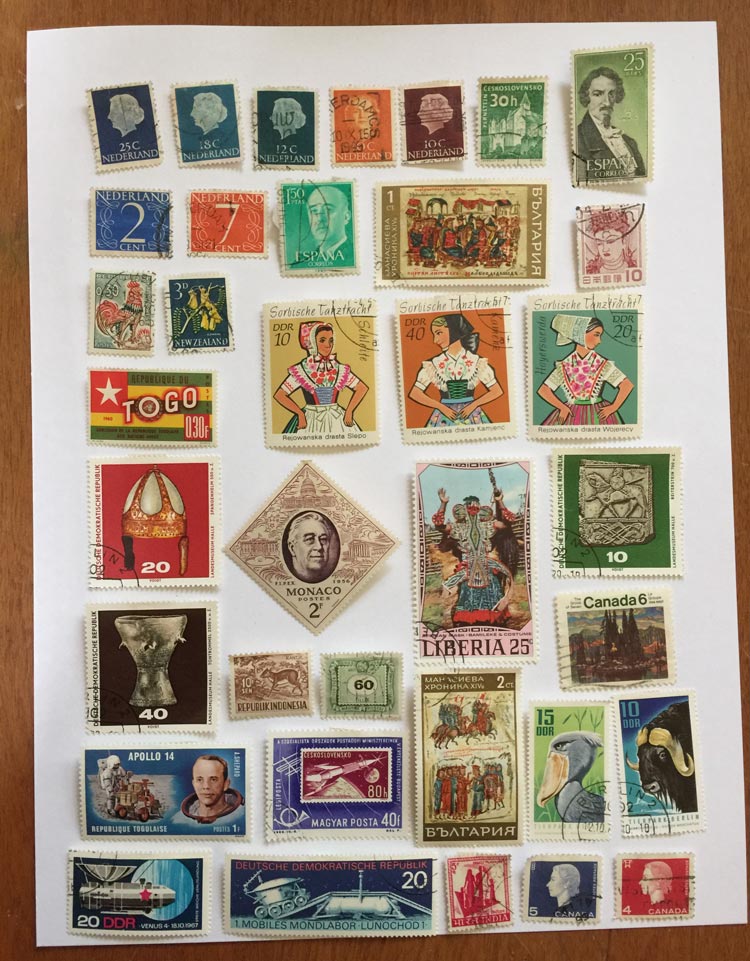
Postcards and foreign stamps can make for an excellent addition to any type of travel journal. You can mail yourself a letter or post card, or even pick up some post cards where you are visiting to add to your pages.
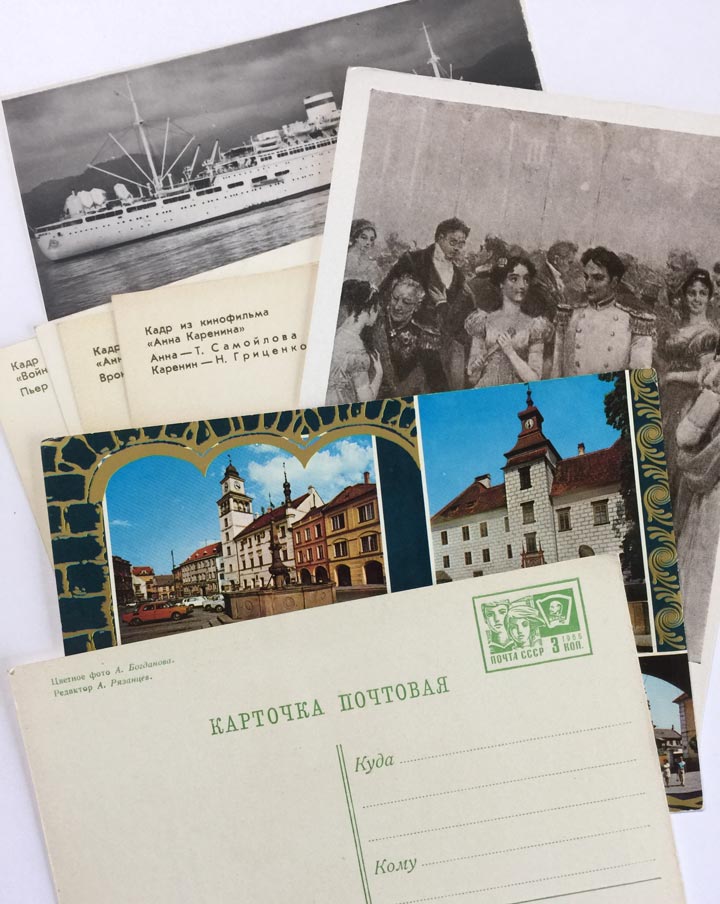
Shown above: A photo of some of the vintage postcards I have in my ephemera collection. If you have friends and family members who travel a lot, be sure to offer to pay for postage and ask them to mail you things!
57. Color Combos
Do you love color? Different places can be great inspiration for unique color combinations or even noticing things you may ordinarily ignore. Take a look at your surroundings and try to create a color palette based on what you see around you.
58. Rainbow Page
Another fun travel journal idea is to try to make a page that includes something of every color of the rainbow you see while you are on a trip. This could be done with ephemera or even just making notes and drawing in your sketchbook to add in photos later.
59. Inspiration is Everywhere
What do you see that inspires you to create while you are traveling? Maybe you notice an interesting pattern on textiles being sold at a shop or you like the way the vase on your table looks at a restaurant.
Take note of these little details that inspire you and sketch or jot them down. These can be great sources of inspiration for those days you need a little kickstart to create.
60. Bottle Caps, Drink Labels and Coasters
Many bottled beverages have labels and unique bottle caps that can make for great things to include in a journal. You may also notice several restaurants have coasters that are nice to save after your meal.
Bottle labels and coasters are two types of things that are normally thrown away but can make for great ephemera to include in your journal and help document the trip.
61. All the Different Shapes
Another idea for different places you visit is to create pages based on different shapes. For example, you could have a page for things that are round, such as wheels, windows, or stones.
You could also easily do this for things that are square, rectangles, triangles, etc.
62. Define Some Travel Words
What does adventure mean to you? What do you consider to be a journey?
There are lots of different travel-themed words and they often mean different things to different people. Write your own definition for words, or you could even find these words in a dictionary and cut them and paste them to the page in your book.
Here’s a couple more words you could use on the page or define:
63. Why do you love travel?
People travel for different reasons, and of course the reasons we enjoy it are also usually unique to us. What do you like the most? Is it meeting new people? Seeing something different? Learning new things?
Write or illustrate your favorite things and the reasons you enjoy discovering new places.
64. Stickers
Stickers can be found anywhere, whether it’s a price sticker on something you buy or even a marketing sticker they give away at a promotional event. Some places you visit may even have shops that sell unique stickers for the area.
65. Technology & Apps
There are many apps and websites that can make traveling a lot easier, and it can be something fun to document in your journal. These apps can help you find new places or even possibly read reviews and get special coupons and deals.
Another thing to think about is how the place you are visiting uses technology. Do they seem advanced or are they behind compared to where you currently live?
66. Trip Stats
Another fun thing to record in your journal are trip stats. Your might record your odometer reading, number of miles you traveled, or if you have a fitbit you could make a note of how many steps you walked that day.

67. Try Zentangle
Zentangle is a super portable form of art and very relaxing so perfect if you’re going on vacation to unwind. All you need is some paper and your favorite Micron 01 pen.
You can start with basic shapes or just tangle freely on the pages of your journal. Who knows – some places you visit may even be home of certified Zentangle instructors and classes may be available during your trip!

68. Practice Creative Lettering
There are so many great ideas and ways to have fun with creative lettering in your journal. You can try different styles of letters, mix up big and small writing.
Hate your handwriting? Our post on creative lettering ideas can give you lots of inspiration for ways to add unique text without necessarily mastering calligraphy.

69. Stencil It
Stencils are flat and portable – so very easy to bring with you along your travels and keep right inside your notebook. There are TONS of inexpensive stencil sets on Amazon or you could even try making your own journal stencil templates.
A couple of stencils can definitely can help you with making shapes, layouts, and different designs in your journal – no fine art skills required!

70. Bodies of Water

Water is always a source for inspiration, relaxing, and feeling refreshed – and where there is life, you are sure to find water! As the author of How to Read Water points out, you can learn just as much about water from a puddle as you can from the sea.
Create a page in your journal based on what you like to do in the water – whether you go fishing, swim laps in the pool on a cruise ship or just admire the sailboats out on the bay.
71. Make a List of Things to Research
While you are on your trip, you might find yourself curious to learn more about stuff you encounter. Make a list or note of this in your journal so you can read up on it when you come back home.
Before you go somewhere new it’s also a very good idea to research different laws, customs and practices. This to-research-list can be a great thing to add in your journal before you leave to remind you to actually learn about these things before you get there!
72. Visiting a Sports Town?
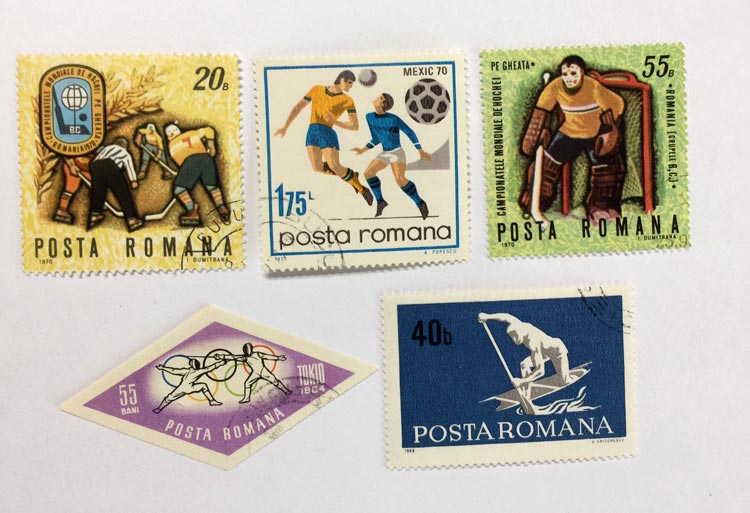
Sports teams around the world have some very loyal fans and this can be another thing worth documenting if you are in a place that takes their sports seriously. In some areas it’d be impossible not to take note of arenas and stadiums!
Even if you’re not a sports fan, you may notice where you are visiting what important sports games are happening and what teams people proudly wear on their t-shirts, jerseys and hats. If you do visit an event, don’t forget to save your ticket stubs and program with the team roster!
73. Stick to the Grid
Grid lined pages can be nice to have when you are writing or drawing, because they also make it super easy to try to draw things when you want to be mindful of things like ratio and perspective relationships.
You can also have fun just arranging different elements in a grid-like fashion – draw your own freehand grid and fill each box with different memories or images you cut and tear out of a local magazine or newspaper.
74. What Are You Really Good At When Traveling?
Do your planning skills shine as you come up with the perfect trip itinerary? Have you mastered the fine art of packing a suitcase with all the right things? Have a knack for strumming up conversation with the locals? Or, maybe you’re just really good at getting lost!
Whatever your strengths and skills are when it comes to travel, these should be celebrated and certainly worthy of being documented in your travel journal! Draw yourself an award, make a list of your best strengths, and celebrate all the hard work that goes into exploring.
75. Gratitude
You can never go wrong keeping track of things you are thankful for. See our list of gratitude journal prompts for even more ideas of ways to incorporate thankfulness in your journal pages.
76. No Place Like Home
Sometimes distance makes us all the more appreciative of home. What things do you miss the most while you are away from home? Draw pictures, doodle, paint, or make a list!
77. Wish You Were Here
Sometimes when we go someplace new we can’t help but think of family or friends back home. Is there anything specific where you are that reminds you of someone? Write about it or tuck those little pieces of ephemera you find on a page.
78. What Went Wrong
It’s tempting to only document the good parts of a trip but sometimes the mishaps of travel become great funny stories after a few years…like my husbands famous melt down over a lack of parking or that time we went camping and got flooded out.
These sorts of things aren’t exactly fun in the midst of the trouble, but years later we can look back and at least say the trips were memorable!
79. What Did You Learn?
Every trip is an opportunity and discovery is synonymous for learning. What did you learn during your trip?
Maybe you learned something new about the cultures, customs and history of the place. Or, if staying local… maybe you learned to always bring sunscreen or bug spray or how to avoid rush hour traffic.
80. Document Digitally
While I will forever be a pen and paper kind of girl, I know I also enjoy the convenience of digital art journaling – especially when it’s not always easy to pack lots of supplies! This is especially true for trips that aren’t necessarily for fun or I know I’ll be spending a lot of time indoors.
You can edit and arrange photos in a photo editing app or software program, or you can even enjoy the creative fun of painting digitally. I love using my laptop and Wacom Intous tablet to paint with Photoshop. You can also have a lot of fun creating designs with an iPad and Apple pencil.
81. Draw a Clock
Clocks are fun and easy enough to draw – all you need is a circle! It can be fun to compare clock times all around the world, especially if you have ventured to a different time zone.
Another idea is to doodle clocks for when you want to make note of times on your itinerary and schedule.
82. Make a Chart
Charts are a creative visual way to display information and a great idea for adding some art to your travel journal. You could create a table of train and bus times, a pie chart for how you spent your time on the trip, or a Venn Diagram comparing and contrasting your first trip somewhere to the second trip there.
For those who are particularly dorky like me, you might even consider making a histogram or scatter plot in your journal!
83. Healthy Matters
If you are into all things health, wellness and fitness in everyday life, it would only make sense for this to overflow into your journals while traveling.
Whether you note healthy foods you eat, exercise, changes in your mood, how much you sleep, number of glasses of water you drink each day, or have a list of medications to take daily, noting these things in your journal can help you stay on track with all the excitement and routine disruptions from traveling.
84. Design Your Own Travel Symbols & Icons
There are many common symbols and icons used for travel – an airplane, a map, a suitcase, a backpack, a compass, cars, directional arrows, trains, etc.
All of these things are a great starting point to give you some ideas for things to doodle in a travel journal. You can make them flat, line-art style, or even make them 3-D complete with shading.
85. Travel Role Models
Do you know someone who is a great inspiration for your travel aspirations? This could be a person who inspired you to be more courageous and explore new foreign places, or could just be someone you know who has real-world experience in traveling the globe and taught you a lot of things.
86. Favorite Travel Blogs
Speaking of people who inspire us to travel – I know many of the places I find inspiration are various travel blogs I like to follow! Seeing their pictures is always great motivation and inspiration to go to new places I may not have considered on my own.
Whenever I am not sure of where I might like to go or what to do when visiting an area, I also love to read different blogger’s guides on attractions to visit and travel tips to make it a smooth trip.
87. The Road Not Taken – Add Some Poetry to Your Pages
There are lots of great travel inspired poems you can include in your journal, or you can even try your hand at writing your own poems.
Not a natural wordsmith? Prefer to stick to something more visual? Check out our post on found poetry in your journal pages.
88. Challenge Yourself
Sometimes a little bit of a challenge can make even the most mundane of places a bit more exciting. You could challenge yourself to take a photo every day, or challenge yourself to visit a different neighborhood or part of town each day you are in the city.
You could also challenge yourself to commit to a certain type of art each day – a doodle a day, or a watercolor a day, or a pencil sketch a day.
Challenges should be fun – so if the idea of this sounds like a chore or one more thing to add to already a jam packed schedule, skip it or save it for the next adventure.
89. Paper Clips & Binder Clips Are Your Friends
Paper clips, binder clips and other page fasteners are wonderful and practical things to include in your journal. They are super handy when you are on the go to attach all sorts of papers and notes – no glue stick required!
Also, they make TONS of travel themed paper clips. I mean, I don’t know if you would really need 40 of them, but how adorable are these airplane shaped paper clips ? They also make ones that come in assorted animal shapes !
So many different styles of paper clips, I actually made an Amazon Idea List with some of my handpicked favorites – I couldn’t believe I found over 40! See all my favorites on my list: All the Pretty Paper Clips .

90. Pins, Patches & Badges
I love collecting small novelty pins, patches and badges – but I don’t always have a great way to display or wear them. One way around this is to add them to your journal pages!
You can decide to either pin or sew the item directly onto the page, or you can attach it to a small piece of fabric that you attach into the page. You can often find these at gift shops or even while you are at different places that give them away for free as promotional materials.
91. Have a Stamping Good Time

There are LOTS of ways to use rubber stamps and ink pads in a journal. But… I also like to keep my supplies very minimal, especially when on the road. Something I like to do to prep my journal pages is stamp things in advance.
You can use simple ink dabbers to create patterns or add a distressed effect to your empty pages – and of course if you already have travel themed stamps this is a great opportunity to put them to good use, whether before or after the trip!
In the page above I tried to use some of my rubber stamps and realized one of my very well-loved ink pads was finally starting to dry out after years of use.
I used the ink pad itself to stamp the page with the remaining ink on the edges to create journaling block areas. I also used the edge of the ink pad to make the lines – perfect for impromptu lists or quick daily notes.

92. Travel Tags
There are all sorts of tags that can be useful while traveling. Luggage and suitcase tags are also a great way to add some interesting stuff to your favorite journal pages.
You can also opt to use paper tags – I love to start with small round tags like these ones and use them for doodles or quotes. Standard shipping tags like these are also like mini blank canvases waiting for your creative touch!
93. Travel Bingo: Inspired by My Favorite Road Trip Game as a Kid
A long time ago, when dinosaurs roamed the earth without technology, we played a game called Auto Bingo in the car. If you drove past something like a railroad crossing or a cow, you would slide the little marker over the picture when you spotted it and try to get them all before the end of the trip.
This gave me a great idea to make a list of different things to look for while I’m at a certain place and then check it off if I saw that thing. It’s a like a scavenger hunt game – can you find these things in your surroundings?
94. A Boost of Encouragement
We tend to glamorize travel a lot – but sometimes it can be hectic, chaotic, stressful and even a little bit scary.
As much as I love traveling, I don’t always like the packing & preparing, and I also admittedly have no sense of direction – I still get lost on roads less than 10 minutes away from my house!
If this sounds like you, adding some encouraging words and positive affirmations can be a wonderfully uplifting thing to see if you are in unfamiliar territory or stressed out.
95. Spiritual Sense
If you are a spiritual person, or maybe just someone curious to learning about the different spiritual practices of different cultures, there are many ways this can be reflected in your journal.
You could include prayers and blessings for travelers, visit spiritual places of interest, or even just spend a few moments in quiet meditation. It can also be interesting to explore and document the various practices and traditions in the culture you are visiting.
96. Which Way Up? Arrows & Directional Signs
I love the treasure-map style dashed and dotted lines with arrows. They really grab a person’s attention when they look through your completed journal. It makes one ask: now where does this lead?
Arrows can be used in so many different ways for a lot of different travel journal page ideas. Call attention to a specific phrase or photo, or add them to continue a story on another page. In some ways, you could make your journal a sort of “Choose Your Own Adventure Book” where the reader {or even yourself} – can explore a place in a different kind of way.
97. Attention Please! Highlights
If you are the sort of person who might fill an entire page with a LOT of words while journaling your thoughts and experiences, highlights are a fun way to call attention to things that are important or most notable.
You can choose to highlight things like dates, or just pick words and phrases you like. If you don’t have or want to use highlighter markers, you could also accent different things by using colored pencils and pens or simply by circling and underlining different things.
This can also be a very fun thing to do with newspapers or other printed ephemera style things you might find in your travels.
98. If You Had to Do It Again…
Would you go on this trip again? Do you want to go back? What would you want to do differently? What would you want to do the same? These are all great questions to think about while you reflect on the trip on the return back home.
99. Return to Reality
What did you have it do when you got back from your vacation? Sometimes remembering responsibilities and “real life” can make us all the more appreciative and nostalgic for the time spent away!
100. Actually Print Out Your Vacation Photos
I’m totally guilty of taking a bazillion pictures…and then never printing them. They go on my external hard drive/cloud storage to never be seen by another human being again…that’s not good!
One of the things I’m making a more concentrated effort to do is actually print out photos we take. You can choose to print them from home on your own home printer, or upload them to your favorite photo print website.
101. Where to Next?
Did this trip make you want to visit any other new places you hadn’t considered before? Where do you want to go next? Or, perhaps, after all these adventures, maybe you are content to stay-cation for awhile?
I know this is a super long list, and if you made it this far, I hope you found these ideas inspiring and encouraging! Travel journals are a ton of fun to make and I’d love to see what you create!!
And of course, if you have ideas for things to include that aren’t on this list – I’d love to hear your creative ideas in the comments below!
Sharing is caring!
Join our facebook group!
Share what you’re creating and working on, ask questions + connect with over 4000 creative artjournalists for inspiration + ideas!
AWESOME post!
Thanks Andi, glad you enjoyed it!
What an absolutely FANTASTIC list! I do a lot of journaling when I travel and already do several of the things on this list, but there are tons I’d never even thought of. I’m particularly in awe of the color palette idea. Brava!
Thank you Naomi, glad it inspired you!
This is the BEST post – thank you sooooo very much! Although it is overhwhelming how much there is because I am a newbie when it comes to this kind of art form, it has given me so many awesome ideas and inspiration and I will try to do some but not all LOL! Thank you again!
Leave a Reply Cancel reply
Your email address will not be published. Required fields are marked *
Save my name, email, and website in this browser for the next time I comment.

10 Great Travel Destinations for Art Lovers
From a japanese art island to a creative colony among ancient olive groves in israel, these are the global art towns, big and small, we’d happily visit..
- Copy Link copied

Art meets nature at Brazil’s Instituto Inhotim, home to one of the largest collections of contemporary art in the country.
Photo by Brendon Campos
New York, London, Paris, Berlin, Los Angeles, Florence, Miami Beach, Hong Kong, São Paulo—these cities are all home to blockbuster art markets, creative superstars, and museums as famous as the works they house. We love these places, but we also love art destinations outside of the art-world orbit: places with an air of mystery, a whiff of a pilgrimage, a winking nonconformity, a love of experimentation, and a tight-knit sense of community.
Read on for 10 great destinations, big and small, art lovers should bookmark for their next vacation.

‘Your Rainbow Panorama’ tops the AroS Art Museum in Aarhus, Denmark.
Photo by Shutterstock
Aarhus, Denmark
In the heart of Aarhus, Denmark’s second-largest city and one of its oldest (dating to the 8th century), a colossal rainbow ring rises above the city. This is artist Olafur Eliasson’s installation, Your Rainbow Panorama, a walkway circling and capping the ARoS Art Museum, itself a jewel among Aarhus’s many cultural institutions. The museum is home to another art colossus, the crouching Boy sculpture by Australian artist Ron Mueck, and it hosts collections of Danish art from the 18 th century to today, as well as the work of international artists. Art lovers can wander among pieces by London-based, British-Palestinian Mona Hatoum, known for her probing and glowing installations; Japanese photographer Miwa Yanagi; and New York–based Tony Oursler, who has been innovating video and installation art since the 1970s.
In Aarhus, self-dubbed “Smilets By” (Danish for “City of Smiles”) and the “World’s Smallest Big City,” ARoS is just a jumping-off point for a smørrebrød (smorgasbord) of art destinations and happenings. Spiral out from the museum and see the city’s famous modern architecture, such as The Iceberg , a seaside apartment building that lives up to its name, and the grass-covered Moesgaard Museum . We love Charlotte Fogh Gallery , a Danish and international contemporary art gallery; the Højkant art collective and design shop full of cheeky creations; and the intimate PS Art Gallery and studio in a green, half-timbered, 17th-century home in the city’s Latin Quarter.
Juxtapose all this contemporary art and design with Den Gamle By (The Old Town), an open-air folk museum comprised of 75 historic buildings relocated from across Denmark, cobbled streets, and Danes dressed in period clothing baking bread and chopping wood. You can eat an actual smørrebrød here, as well as fried fish and frikadeller (Danish meatballs).

Chris Burden’s ‘Beam Drop’ (2008) was re-created at Inhotim; the original work was on display in New York in 1984.
Brumadinho, Brazil
Brumadinho is home to the Xanadu of the art world: the Instituto Inhotim , a contemporary art museum and sculpture park in a 346-acre private botanical garden founded by mining magnate and art patron Bernardo de Mello Paz.
Celebrating 15 years in 2021, the institute is one of the largest outdoor art spaces in the world, placing hundreds of giants of the art world alongside thousands of giants of the plant world, from octopus agave to ponytail palm and swamp cypress. The garden hosts more than 700 works by 60 artists, including Brazil’s own beloved boundary-defying Hélio Oiticica. As Oiticica intended, visitors can walk through his Magic Square #5 (1977), a colorful abstracted “public plaza” built of cement, glass, and stone. You could spend weeks wandering the grounds, a crash course in modern and contemporary large-scale art, studying the likes of Elisa Bracher’s eucalyptus and cedar wood Embrionário , going tête-à-tête with Paul McCarthy’s Pinocchio Block Head , gazing through Olafur Eliasson’s mirrored Viewing Machine, and falling in love with your own reflection at Yayoi Kusama’s Narcissus Garden Inhotim, 750 stainless steel orbs bobbing in a reflecting pool.
While the garden is the main draw, Instituto Inhotim has many noteworthy pieces in its indoor gallery as well, such as the blue-and-white tile room Celacanto provoca maremoto by Adriana Varejão , the sci-fi-inspired plant and mirror maze structure Vegetation Room Inhotim by Cristina Iglesias , and the enforested glass geodesic dome by Matthew Barney .
There are several places to eat across the sculpture park and the institute has many recommendations for nearby lodging, including Villa Rica , decorated with local art, or Villa Domaso , surrounded by lush nature.

Zeitz MOCAA has become a destination unto itself in Cape Town, South Africa.
Photo by Kiev.Victor/Shutterstock
Cape Town, South Africa
Rising from the Victoria & Alfred Waterfront, with Table Mountain as a backdrop, is the world’s largest museum devoted to contemporary African art: the Zeitz Museum of Contemporary Art Africa , commonly known as Zeitz MOCAA. First things first, the museum itself is a marvel , a towering structure revamped from the historic Grain Silo Complex with an interior that looks like an abstracted concrete-and-glass honeycomb.
Zeitz MOCAA is home to works by some of the continent’s leading artists such as Athi-Patra Ruga and Mary Sibande of South Africa, Njideka Akunyili Crosby of Nigeria, Ghada Amer of Egypt, and Nandipha Mntambo of Swaziland. The permanent collection also includes works by artists of the African Diaspora, like Kehinde Wiley and Frohawk Two Feathers, both of the U.S.
But Cape Town was an artist’s haven long before the arrival of MOCAA in 2017. The Woodstock neighborhood alone, with its pink town hall, is home to several renowned galleries dedicated to contemporary African artists including SMAC , Goodman Gallery , Stevenson Gallery (all of which have sister galleries in another top South African art destination, Johannesburg).
Cape Town is also delightfully crowded with public art, such as Es Devlin’s installation Zoetrope at the Waterfront and Arch for Arch, a woven wooden structure next to St. George’s Cathedral that honors Archbishop Desmond Tutu. The organization Baz Art hosts the annual International Public Art Festival , which in 2021 focused on painting murals in the Salt River neighborhood . There are also several art road trips worth taking from the Cape. Drive inland through mountainous wine country (many of the vineyards you’ll pass have their own fantastic art collections) to Stellenbosch, an oak-lined university town packed with art studios and the awe-inspiring Dylan Lewis Sculpture Garden .

Mismatched pastel buildings that look like scoops of gelato along the water in Collioure, France.
Photo by Pani Garmyder/Shutterstock
Collioure, France
Legend has it that Henri Matisse said the quality of light is just different— magical —in Collioure, a laidback and ancient fishing town on the French Mediterranean 15 miles from Spain. Matisse and André Derain would summer here and become the first fauves (French for “wild beasts”), leaders of fauvism, the early 19th-century art movement known for its bold colors and brushstrokes, an unruly descendent of Impressionism. Matisse’s famous Open Window (1905) and Derain’s Fishing Boats (1905) were painted here, among many more fauvist works.
Collioure’s very petit harbor still captures the brilliant sunlight, bouncing off a 13 th -century castle and fortress and layers of mismatched pastel buildings that look like scoops of gelato along the water. Visitors can see the town through the artists’ perspectives along the Chemin du Fauvism, which features both empty bronze frames that outline the views of their most famous canvases, as well as reproductions. The Maison du Fauvism offers guided tours.
Keep cool with an actual scoop of gelato—countless gelaterias line the streets and try a bite of Catalan fare at Le Neptune overlooking the bay or the Templiers restaurant and hotel, a cozy spot with a bar made from a ship hull and walls lined salon-style with paintings.

Bronze sculptures by the residents of Ein Hod, Israel, dot the surrounding landscape.
Photo by Leonid Radashkovsky/Shutterstock
Ein Hod, Israel
Within hilly olive groves, tucked between the Mediterranean sea and Mount Carmel, is Ein Hod , a small artist colony established in 1953 by artist Marcel Janco , one of the founders of the avant-garde dada movement, which formed in reaction to World War I. Legend has it that Janco toured Israel, sketchbook in hand, and stumbled across the then-abandoned village and found it could be the perfect refuge for artists.
Today Ein Hod , 12 miles south of Haifa, has about 650 residents—mostly painters, sculptors, jewelers, architects, and artisans—and the landscape is dotted with their handiwork: outdoor bronze sculptures (look for Couple in a Sardine Can by Ben Levy), murals, studios, galleries, and workshops that offer classes for visitors. See the abstract colorations of Miriam-Ruth Sernoff Frohlich at the Sernoff-Frohlich Gallery Of Fine Art , the soulful book art of Nechama Levendel at the Karoyan Gallery , and the work of many locals under one roof at the Artists Gallery Ein Hod .
This tiny bohemian enclave is also home to two museums, the Nisco Museum of Mechanical Music and the Janco-Dada Museum , created in 1983 to honor the work and vision of the colony’s founder. This museum features the restored stone-arch studio of Janco and the DadaLab , where museumgoers can try their own hand at creating the absurdist, convention-defying art that defined this movement. Since 1990, Ein Hod has hosted an international Sculpture Biennale , inviting artists to install large-scale works outside amid ancient olive trees.
You can eat with the locals in one of the village’s classic stone buildings at Café Ein Hold. While larger hotels are available in nearby Haifa, Ein Hod itself offers a handful of quaint and eclectic apartments for rent, many with views of the Mediterranean.

Hobart’s Museum of Old and New Art is
Photo by C. de la Cruz/Shutterstock
Hobart, Tasmania
Looking out from the Berriedale peninsula onto the River Derwent is the Museum of Old and New Art (MONA), or as founder—businessman, art collector, and high-stakes gambler David Walsh—calls it: a subversive adult Disneyland.
MONA is as irreverent as its benefactor, its website describing the museum’s everchanging identity as a “really elaborate marketing stunt” and “somewhere people can come to say ‘not sure about the art but the architecture is amazing.’”
And many are not sure about the art : MONA has the work of some of the biggest shock jocks of the art world: Hermann Nitsch’s bloody 6-Day-Play videos and Wim Delvoye’s stinking waste machine that is Cloaca Professional, to name a few.
Regardless of your take, the museum has helped put Hobart’s art scene on the map, bringing deserved attention to other art spaces like the Art Mob , which specializes in Tasmanian and Australian aboriginal art by the likes of Queenie McKenzie and Dennis Nona. Across the harbor are the contemporary fine art Despard and Handmark galleries, the latter of which is part of the bustling Salamanca Arts Centre , a transformed warehouse space home to several galleries and exhibition spaces, a theater, and the jewelry and metal collective Hammer & Hand , as well as public art such as We Are Made of Stardust by Michaela Gleave and Escape Pod by Colin Langridge. Stay in the neighborhood at the Henry Jones Art Hotel , which features contemporary art by Tasmanian artists in its rooms.

Kilns have been firing in this hilly city of Jingdezhen, China, known as the “Porcelain Capital of the World.”
Photo by CYSUN/Shutterstock
Jingdezhen, China
Leading ceramics artists and students worldwide travel to Jingdezhen, China, the “Porcelain Capital of the World,” where the ruins of ancient kilns meet contemporary factories and galleries. For more than 1,700 years and many imperial reigns, kilns have been firing in this hilly city of Jiangxi province along the Chang River, where ceramic masters have innovated technologies to produce the most coveted china, such as the emblematic blue and white pottery developed during the Ming Dynasty.
The stunning Jingdezhen Imperial Kiln Museum —shaped like ancient kilns in red brick, and the Jingdezhen Ceramic Industry Heritage Museum , help put the expansive history of this art industry in context. The industry, however, is alive and well today, cultivating the next generation of ceramicists at the renowned Jingdezhen Ceramic Institute and employing 30,000 people at outfits like the Porcelain Sculpture Factory in the Eastern suburbs or in the nearby Sanbao International Porcelain Art Village filled with artist studios and workshops. The Pottery Workshop , run by artist and curator Caroline Cheng , is an education center and hub for young artists in Jingdezhen, known as jingpiao . Every Saturday morning, the jingpiao sell their wares—traditional pottery, jewelry, contemporary art—at the Pottery Workshop Creative Market .
Countless ceramic artists and designers have their practices in the city such as Cheng herself, plus Wan Liya , Juz Kitson , Lin Wang , Robin Best , and Ryan LaBar . Walk down the Taoxichuan, known as the Ceramic Art Avenue, to peak into studios, galleries, and markets, and try some classic Jiangxi fare such as Lushan San Shi and fish banquets. The Fairfield by Marriot Jingdezhen hotel is near many of these attractions, and there are a handful of gorgeous Airbnb options .

An art lover’s trip to Japan has to include Naoshima in the Seto Inland Sea.
Photo by N_FUJITA/Shutterstock
Naoshima, Japan
There is a string of tiny flecks of land in the Seto Inland Sea that are teaming with museums, architectural marvels, and art installations. Naoshima, commonly referred to as Japan’s art island, home of the Benesse Art Site , leads the pack. Here, massive sculptures such as Lee Ufan’s Porte vers l’infini (2019) and Beatriz Millhaze’s Yellow Flower Dream (2018) dot the landscape creating a fine art playground. (Until recently, one of Yayoi Kusama’s massive pumpkin sculptures sat on a pier before a typhoon swept it out to sea . Benesse Art Site is in the process of restoring it.)
Then there are the museums and galleries: the mind-bending subterranean Chichu Art Museum designed by architect Tadao Ando housing works by Claude Monet and James Turrell; the Benesse House Museum , which melds a hotel and exhibition space with nature (with a restaurant serving kaiseki meals that rival the art for presentation); the kooky art facility Naoshima Bath where—you guessed it—visitors can take a bath surrounded by the artwork of Shinro Ohtake; and the Miyanoura Gallery 6 in the site of a former pachinko parlor once popular with islanders.
If you’re willing to island hop, head to Teshima to see large-format paintings in the Teshima Yokoo House (named for artist Tadanori Yokoo) and Inujima for an art museum housed in a old copper refinery .

You could spend a full day just exploring Georgia O’Keeffe’s artwork in Santa Fe, New Mexico.
Photo by Fred Mays/Shutterstock
Santa Fe, New Mexico
One of the oldest cities in the U.S. (older than the country itself, with a founding date of 1607) Santa Fe and its iconic pueblo architecture encompass many art scenes and histories, from the vast indigenous collections of the Institute of American Indian Arts (IAIA) to the electro-pop experiences of Meow Wolf to the storied career of Georgia O’Keeffe who was so deeply influenced by the New Mexico landscape.
Housed in a historic Peublo Revival-style post office downtown, the IAIA’s Museum of Contemporary Native Arts stewards the National Collection of Contemporary Native Art, featuring 9,000 artworks created since 1962 including pieces by legends such as George Morrison, Helen Hardin, and Fritz Scholder. From here, walk past the Santa Fe Plaza to the Georgia O’Keeffe Museum to see up-close and personal Black Hollyhock Blue Larkspur (1930), Pelvis IV (1944), and Spring (1948), among others. O’Keeffe fans can stay at the Abiquiú Inn , next to the The O’Keeffe Welcome Center housed in the artist’s former home and residence.
Around Canyon Road, you’ll find 80-plus galleries including Turner Caroll Gallery —whose international roster of artists includes Judy Chicago, Wanxin Zhang, and Swoon; Nedra Matteucci Galleries with its renowned sculpture garden; and the art collective and gallery Cielo Handcrafted , with goods including stoneware ceramics, leather totes, and silver jewelry.
Down Cerrillos Road, follow the neon glow of Meow Wolf’s House of Eternal Return , an “explorable art experience,” a sort of dayglo haunted house with more than 70 immersive rooms.

The streets of tiny Todos Santos are full of galleries and shops stacked with handmade ceramics, metal work, and beautiful textiles.
Photo by Arturo Verea/Shutterstock
Todos Santos, Mexico
About 50 miles northwest of Cabo San Lucas on the Baja California peninsula lies the bohemian Todos Santos, oft-compared to a young Taos and one of Mexico’s “ Pueblos Mágicos ” (magical villages), a designation given to places that have preserved their original architecture, traditions, history, and culture. Surrounded by Mexican cardon, the tallest cacti in the world, and azure water where whale sharks pass, Todos Sontos is also home to a thriving artist enclave. February is a prime month to engage the local art scene with the annual weeklong Festival del Art and Todos Santos Open Studio Tour . However, visitors can stroll the old-town cobblestone blocks fluttering with papel picado year-round to see what artists are up to.
A great place to start is La Sonrisa de la Meurta , an international gallery and workshop (with a sister location in Belgium) featuring graphic arts—from limited-edition prints to card decks to handkerchiefs—printed by young and emerging Mexican artists. Nearby (everything is nearby in Todos Santos) are the Galería Arturo with Mexican artist Arturo Mendoza Elfeo ’s whimsical impasto and textured canvases, and Galería Logan , featuring American expat Jill Logan’s dreamy swirling canvases in sunbaked colors. For a historical perspective, stop by the Centro Cultural , housed in a red-brick former school with revolutionary murals dating back nearly a century.
The Hotel San Cristóbal makes for a chic home base in town, while Paradero Todos Santos could be your cultural retreat at the intersection of desert, mountains, and Pacific coast. At the hotel, and beyond, order any fish dish: Todos Santos began as a fishing town and fisherman still take their little panga boats out daily.
>>Next: 10 UNESCO World Heritage Sites That Mix Nature and Culture

70 Easy Drawings You Can Do in 5 Minutes or Less
Do you want to learn how to draw but don’t have much time? Or maybe you’re an experienced artist who wants some easy drawings to do on the side. Either way, this blog post is for you!
We’ve collected the best easy drawings you can complete in 5 minutes or less, perfect for beginners and experienced artists alike.
Ready to give easy drawings a try? Grab your pencils and paper, find yourself an easy drawing idea , and let’s get started!
Choosing Your Pencils and Paper
The first step in the drawing process is choosing the right tools.
A standard No. 2 pencil and drawing paper will work just fine, but you can also use colored pencils or markers to add some extra flair to your drawings.
If you’re a beginner, we recommend starting with simple black-and-white easy sketches before moving on to more complex colored drawings. That way, you can practice the basics and gain confidence in your drawing skills before adding color.
Finding Easy Drawings
Now that you have your pencils and paper, it’s time to find easy drawing ideas. There are plenty of online resources with easy drawings for beginners, including YouTube drawing videos and art blogs.
We’ve also included a few easy drawing ideas below that you can print out or draw directly from the screen.
You can also explore easy drawings in nature, like simple shapes and patterns found in plants and animals. Again, start with easy sketches before adding color to make sure you’re comfortable with your tools and techniques.
1. Spaceship

Less than five minutes?! Yes, it’s possible! You don’t have to be an artist to draw a spaceship, and they look even better with color.
Start by drawing a simple shape for your rocket ship’s hull. Then add details like engine exhaust, windows, wings, stars, and asteroids to make it more interesting.
If you want to learn how to draw the zombie in Plants vs. Zombies, here’s an easy video tutorial.
Drawing a zombie may seem intimidating, but with the right techniques, you can create a scary-looking creature in only 5 minutes.
Start by sketching out the overall shape of the head and body. Then add details such as eyes, teeth, and hair to give your zombie a unique look.
If you want to take it one step further, you can add a few rips and tears to the clothing, giving your zombie more of an undead look.
Pikachu is one of the most recognizable and beloved characters in the world of Pokémon. Drawing Pikachu can be a fun and quick way to pass a few minutes while also honing your drawing skills.
Start by sketching out the basic shape, starting with the iconic ears, eyes, and mouth. Then add details like fur and whiskers to bring your drawing to life!
With a few strokes of your pencil, you’ll have an adorable Pikachu drawing in no time.
4. Doraemon
Doraemon is a beloved Japanese anime character and an easy drawing activity for people of all ages.
Start by sketching a circle for the face with his signature ears and nose, then add details like whiskers or glasses to make him look more like the real thing. Give your creation life by adding color!
5. Laughing Santa
Recreating a laughing Santa is the perfect way to channel your inner child.
Begin by sketching Santa’s face, then add details like rosy red cheeks or twinkling eyes to make him look more cheerful. Finally, color it in for an extra-fun result!
6. Christmas Tree
What better way to get into the holiday spirit than drawing a Christmas tree ?
Start with the tree’s shape, then add details like ornaments and candy canes for an extra fun look. Coloring in your design will give it a festive look.
7. Gingerbread Man

What could be more fun than creating your little gingerbread friend? Begin by sketching the gingerbread man’s outline, then add details like buttons and eyes. Once you’re finished drawing out your design, it’s time to bring it to life with color.
8. Christmas Penguin
Adding a Christmas penguin drawing to your décor is an excellent way to spread holiday cheer! Sketch the penguin’s body, then add details like a Santa hat or festive scarf for extra holiday spirit. For even more fun, color it in shades of black and white.
9. Candy Cane
You’ll have a blast drawing a candy cane! To start, capture the classic shape of the cane with your pencil, then add stripes or other designs to make it look more lifelike. You could even color it in for an extra-sweet result!
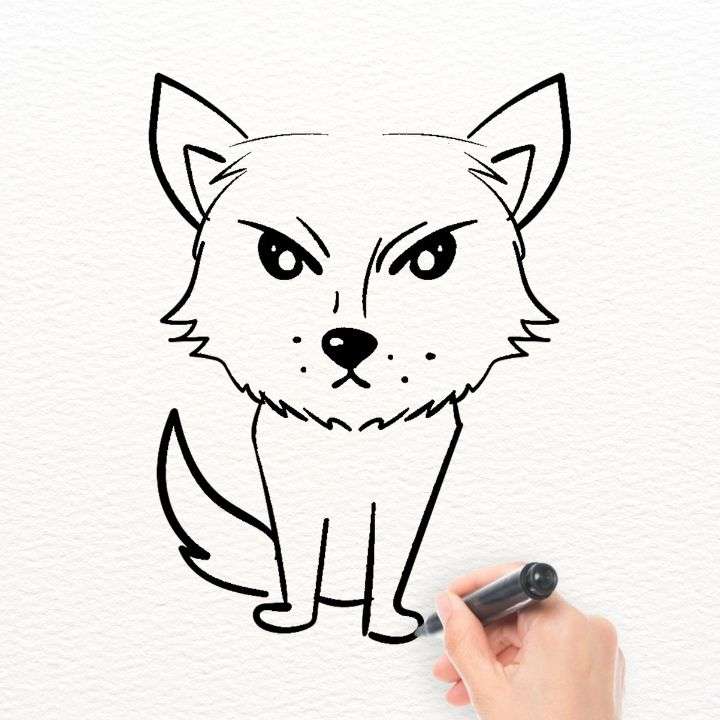
It doesn’t matter whether you use black-and-white or color to draw a wolf—it will look great either way.
Start by drawing the wolf’s face with pointed ears, then add details like fur and eyes to finish it off. Consider shading and adding texture to give your easy drawing a sense of depth.
11. Baby Shark
Baby shark is a charming, easy-to-follow sketch that features a smiling shark with big eyes, a wide grin, and a friendly fin.
This drawing looks great in both black-and-white and color, so it’s easy to customize and make your own!
12. Cute Dress
Here’s a video tutorial on drawing a cute girly dress.
If you like fashion drawings, this easy dress sketch is perfect for you. It features a simple silhouette with some interesting details like pleats and ruffles.
Just draw the outline of a dress with a few lines and curves, then add some extra details to make it your own.
13. Cute Girl
Here’s another easy-to-follow sketch featuring a cute girl with big eyes and an adorable expression.
This one looks great in both black-and-white and color – just draw the basic shape of the girl, then add some extra details to make your drawing unique.
14. Lollipop
Here’s a video of how to draw an easy lollipop.
Another easy drawing idea is this lollipop sketch.
Draw a curved line for the stick and an oval shape for the candy. Then, add some swirls and other details to make it your own. If you’re feeling creative, you can add color to your design.
15. Mickey Mouse
Here’s a classic drawing idea for Disney fans – Mickey Mouse!
Draw circles for his head and ears, then add details like eyes, nose, and mouth to finish it off. This one looks great in black and white or with a few colorful touches.
You can also follow this easy tutorial:
16. Anime Eyes
If you’re looking for easy anime drawings, this is a great place to start. Simply draw two circles and add some details like eyelashes and pupils to make it your own. If you’re feeling creative, go ahead and color it in!
Here’s a guide on how to color anime eyes:
Drawing a UFO is simple and enjoyable. Start by drawing the round shape of the UFO, then add details like stars or aliens to make it more interesting. You can also color it for an extra-cool result.
18. Camping Area

Here’s another great idea for your next drawing – a camping scene!
You can draw the outline of a tent, trees, and stars in the night sky. Add some extra details, like people around the campfire or animal drawings walking by, to make it more interesting.
If you’re looking for drawing ideas for beginners , this simple nose sketch is perfect.
Once you’ve got your basic shape, start adding shading to give the nose a three-dimensional effect. Use hatching or crosshatching techniques to create shadows and highlights on your drawing.
20. Diamond
Here’s a quick but fabulous drawing idea – a diamond! Just draw four shapes and connect them together, then add some extra details to make it your own. You can also paint it to make it look more glamorous.
21. Easter Bunny
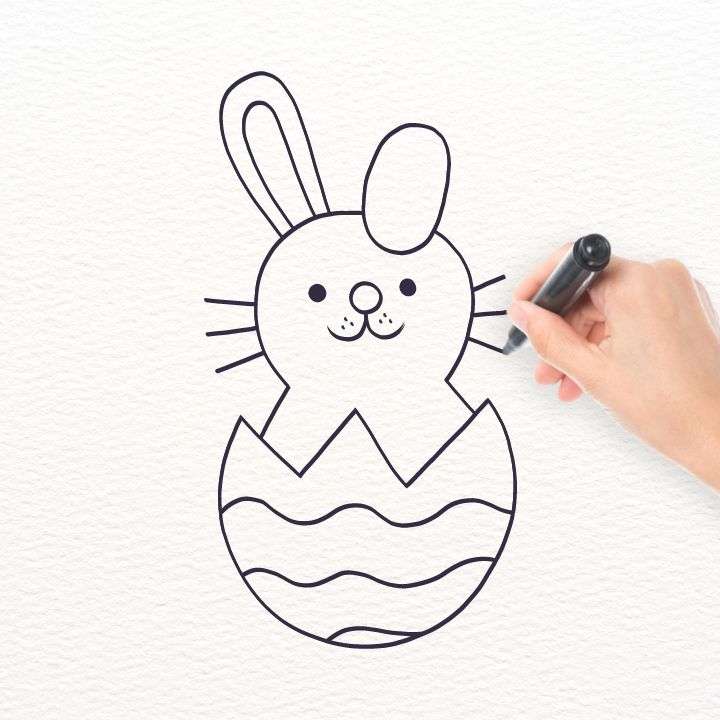
Why not try this adorable Easter bunny drawing idea? Draw two big ears, then add eyes, whiskers, and a fluffy tail to finish it off. If you’re feeling extra festive, bring out the coloring supplies and have at it!
22. Cute Cat
If you’re looking for an easy drawing idea, why not try a cat? Draw the cat with two ears and eyes, then add details like whiskers, fur tufts, and claws to make it your own. You can also color it if you want to add some extra flair.
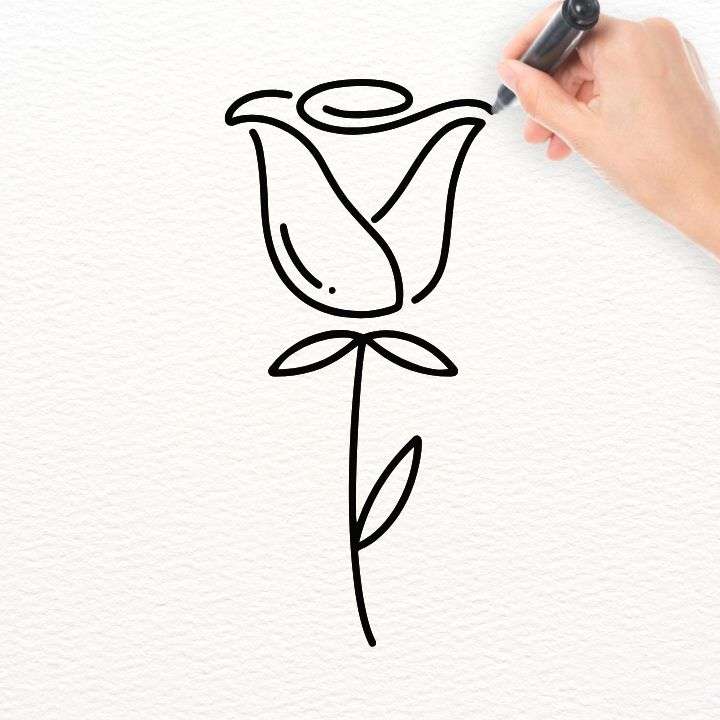
Roses have been used to symbolize love, beauty, and admiration for centuries, so creating your version of this classic flower is sure to make any art project special.
Simply draw the petals, then add some details like leaves and buds. Not only can you color it to create a lovely piece of art, but you can also frame it and hang it up for all to see!
Drawing a braid is easy and fun! Draw a curved line with some loops, then add details like beads or flowers to make it more interesting. Coloring your braid drawing is a great way to give it extra personality.
25. Eifel Tower
Do you want to draw an iconic structure in less than 5 minutes? Then the Eiffel Tower could be your perfect choice!
Start by sketching a rough outline of the tower and then add details like windows and balconies. You can also add details like plants or people at the foot of the tower for added dimension.
26. Tiny Penguin
Did you know that penguins are one of the easiest animal drawings?
Sketch the penguin with two flippers, then add some details like eyes, beak, and feathers. If you want to make your design even cuter, color it in!
27. Sea Turtle
This cute little guy is a breeze to draw and will only take about five minutes of your time!
Start with the long oval body, then add rounder shapes for the flippers and head. Outline it in black ink and finish off with some scales and details. You can use colorful markers to create a fun pattern on the turtle’s shell.
Here’s another easy way to draw a turtle:
28. Baby Alligator

This super-easy drawing can be done in minutes and is a great place to start for beginner artists.
Begin by drawing the shape of an alligator’s head, followed by the neck. Then draw two parallel curved lines at the bottom to make the legs. Finish it with two small circles on its back for eyes, and you’re done!
29. Planets
Drawing planets can be a great way to show off your artistic skills! Use colors like blues and greens or vibrant shades for a fun look.
Outline the planets’ round shapes, then add details like stars and asteroids. You can even use different shades of color to give your planet depth and texture.
Here’s how to draw our solar system:
30. Little Mermaid

If you’re looking for a cute and easy drawing idea that only takes 5 minutes or less, why not try the Little Mermaid?
Start by sketching a rough outline of the mermaid’s body. Make sure to include her long flowing hair, then add details like eyes, nose, and lips. Finish off the drawing with a tail and a seashell necklace.
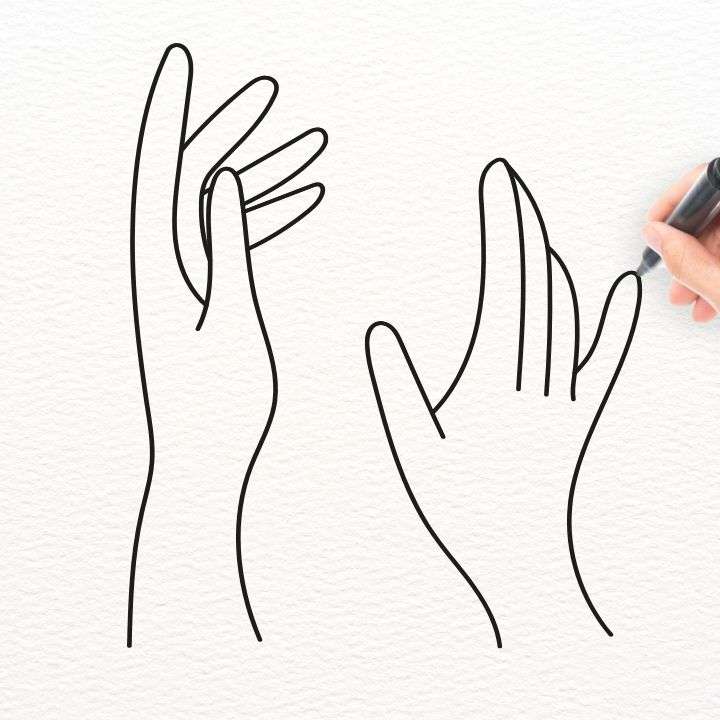
Not only is drawing hands easy, but it’s also therapeutic. Just draw circles for the joints, then add lines for the fingers to finish it off. Alternatively, you can add shadows to give it more depth.
Draw a simple mouth with teeth in five minutes or less!
Sketch the outline of the lips, then draw several small curved lines to create a set of teeth. You can also add other elements like tongue if you want.
Anyone can have fun drawing dice, regardless of skill level! Just draw simple lines and slight curves, then add details like numbers to make it more interesting. You can also color it in for a vibrant look.
34. Ballerina Shoes
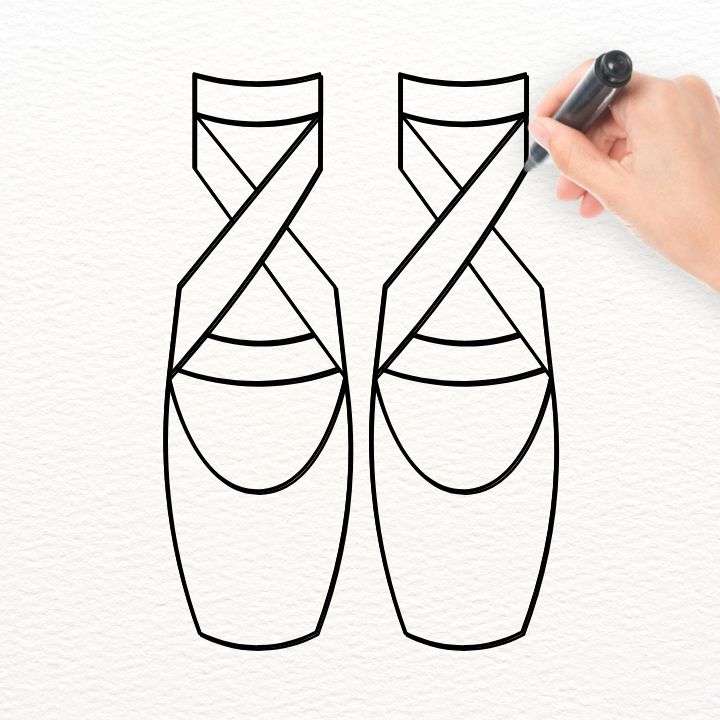
You don’t have to be a professional artist to draw beautiful ballerina shoes that look amazing in any color scheme.
All you need are simple shapes for the shoe’s sole, heel, and straps, and then add details like ribbons, buckles, or bows. Once you’ve got your shoes down, try experimenting with different colors and textures to give your drawing a unique twist.
35. Woman’s Face
In less than 5 minutes, you can draw a woman’s face with some realistic features. Start by sketching out the shapes and then add facial features like eyes, nose, ears, and mouth.
You can also add details like hair and eyebrows to make it lifelike. To finish your masterpiece, use shading and color to bring out the different elements of your drawing.
36. Head in the Clouds
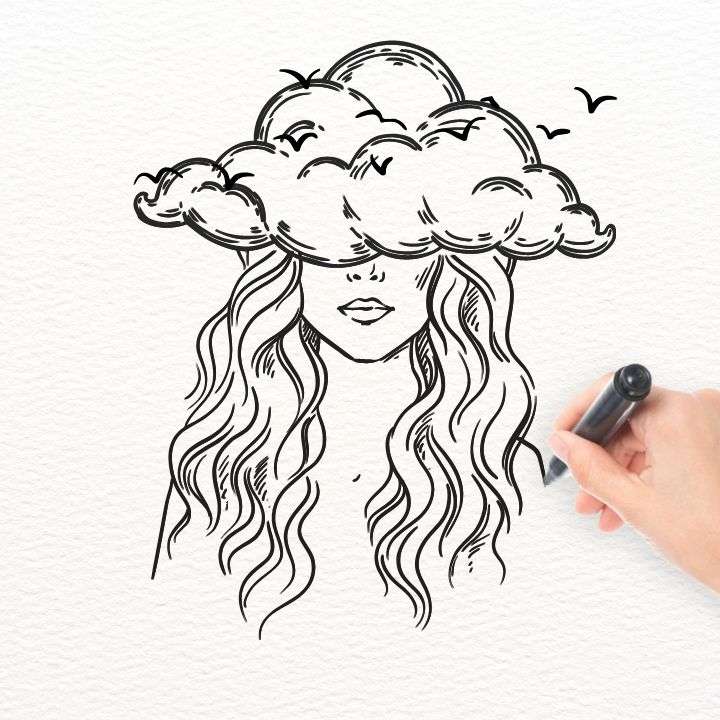
This timeless design can be recreated in five minutes or less – perfect for when you only have a little time to spare!
Draw an oval shape for the head, then add details like stars or birds to make it more interesting. When you daydream, it’s easy to let your mind wander and feel at ease.
37. Astronaut
Children will love this easy step-by-step drawing of an astronaut. Draw a space suit with a helmet, then add details like stars and planets to make it more exciting.
Here’s another way to do it:
38. Elephant
Drawing an elephant can be fun and easy, taking only 3 to 5 minutes of your time.
Start by drawing the head and trunk of the elephant. From there, fill in details like eyes, legs, tail, tusks, and other features that give it its unique charm. Once satisfied with your drawing, you can add color to make it more lively and interesting.
You can have an elephant drawing session with kids by following this tutorial:
39. Message in a Bottle
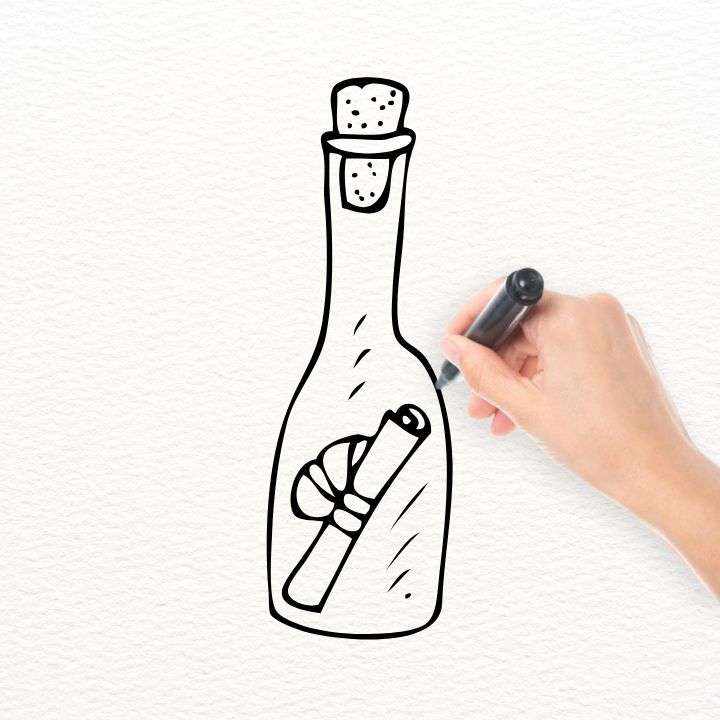
Drawing a message in a bottle is an easy and fun way to express your creativity. Just draw a bottle, then add details like stars or messages to make it more interesting. Or, you can color it in for an even more magical look.
40. Nature in a Triangle

Incorporating nature into your drawings is easy and will make them look great. Start with a triangle, then add details like trees, mountains, or birds to make it more interesting. For an even more beautiful look, color it in!
41. Unicorn
Drawing unicorns is one of the most popular doodles out there! It’s not only fun to draw but also quite simple.
Start by outlining a unicorn, then use your pencil to draw horns from the highest point of its head. Give your unicorn some ears, eyes, and a mouth. If you want, you can color it for a truly magical result!
Here’s another easy way to do it:
42. Octopus

Who doesn’t love drawing an octopus? You can have a great-looking octopus with just a few simple lines.
First, draw the head and body of the octopus using curved lines. Then add eight tentacles and some suction cups. Finish by drawing the eyes, and you’ll have an amazing drawing in less than five minutes!
43. Hedgehog
Draw a cute and simple hedgehog that kids will love with this easy step-by-step guide! Start by drawing an oval shape for the body, then add details like spines and a nose to finish it off.
You can also follow this video:
This easy drawing idea of a whale is perfect for beginners and looks great in any color palette.
Just draw an oval shape for the whale’s body, then add details like eyes and fins. Voila! You now have a cute whale swimming in the ocean. Not bad for 5 minutes of drawing time!
Another easy drawing idea you can do in five minutes or less! Owls are a popular subject for many artists, and with good reason – they have wide eyes, big wings, and intricate feathers.
Drawing an owl is easier than it looks. To get started, lightly sketch the shape of the head and body of the owl using a pencil. Then, add details like the eyes and wings, ensuring correct proportions.
Here’s a clever and easy way to draw an owl using the Number 22:
No matter your skill level, you can draw a cute panda in less than 5 minutes! Start by drawing a circle for the head and body, then add two circles for the eyes and black patches for the paws.
Here’s a quick guide on how to draw a panda:
A duck is one of the easiest animal drawings and a classic choice for kids. Draw its simple shape – an oval for its head with a curved bill, then add details like wings and feathers.
Finally, add some feet to your duck with a few curved lines! With these easy steps, you can draw an adorable duck in just 5 minutes or less.
Here’s how to draw a realistic duck using the Number 2 as a guide:
48. Sleeping Moon
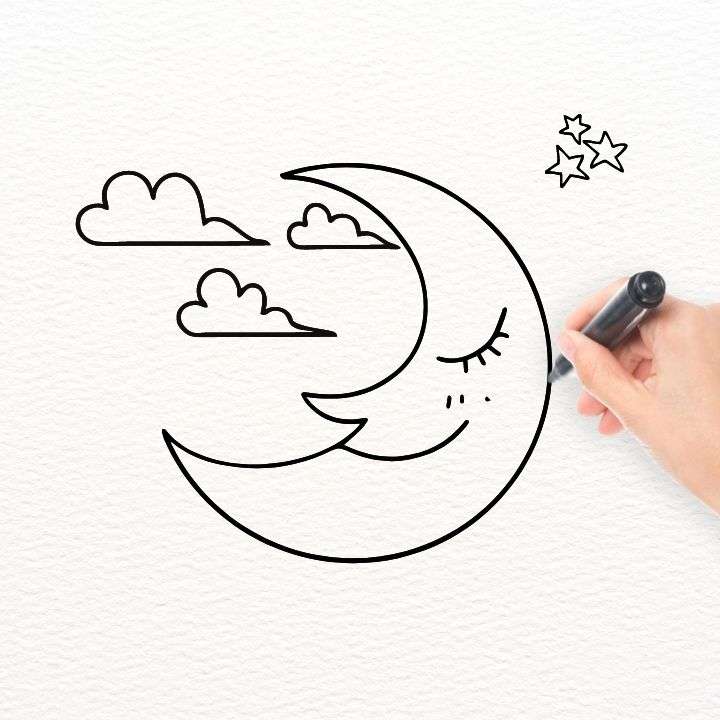
The moon is one of the easiest things to draw, and it can be quite calming.
Just draw a crescent moon, then add details like stars or clouds to make it more interesting. You can also color it in with different shades of blue and gray for an extra-magical look.
49. Smiling Sun
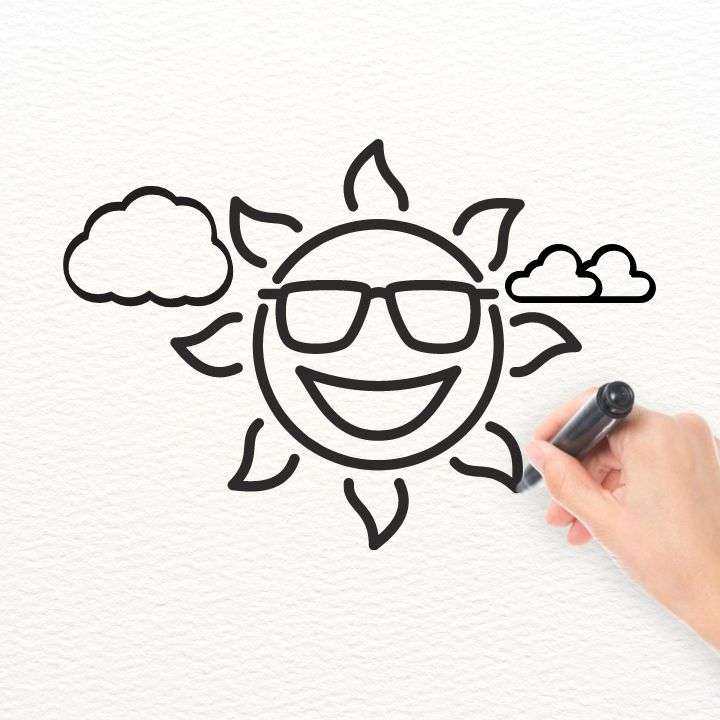
Drawing a sun is an easy way to satisfy your creative urges. First, draw a circle with beams of light, then add extras like clouds or planets to make it more captivating. For an even sunnier result, color it yellow and orange.
50. Dragonfly
Kids will love drawing a dragonfly! To begin, sketch the body of the insect on your paper. You can draw an oval shape for the head and two attached wings.
Then, draw four thin legs extending from each side of the body. Finally, add a few details like eyes and antennas to make it look more lifelike.
51. Band-aid
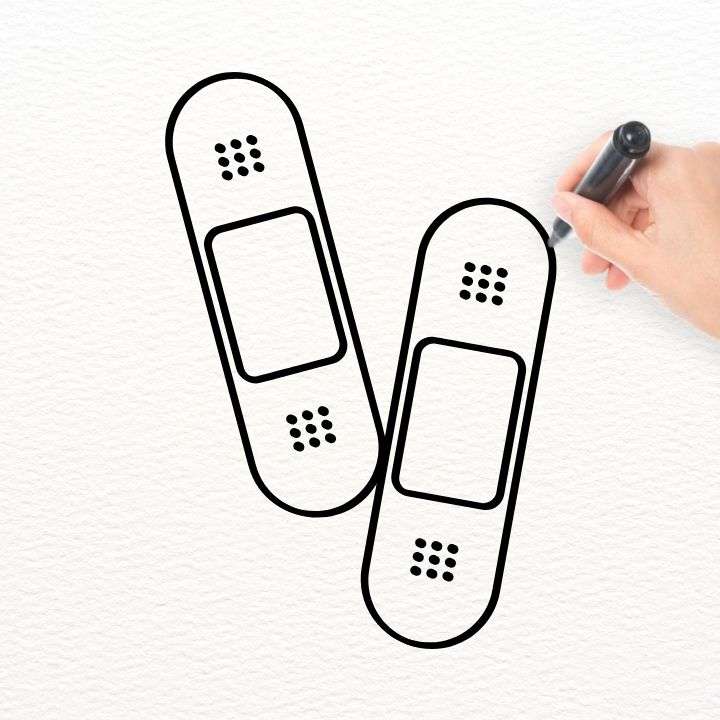
This simple drawing only takes a few minutes to complete, and it looks great! Begin by sketching the outline of a band-aid with curved sides. Then have some fun and go wild by adding extras like stars or hearts.
52. Stegosaurus
Stegosaurus is one of the easiest dinosaurs to try out if you’re just starting with drawing. Its recognizable shapes make it a good subject for even novice artists.
Start by sketching the body and the triangular plates down the back of the dinosaur. Then, add triangular spikes on the end of its tail. Finally, draw four legs and a head with two eyes to complete your stegosaurus drawing!
53. Eye Glasses
Sketching glasses are a great way to spend your extra time. To start, establish the outline of the glasses by drawing the frame and a bridge. After that, add authentic details like lenses. Fill your design with color for an extra-cool look.
54. Ice Cream
Ice cream is delicious, and drawing it can be a fun way to show off your artistic skills. Begin by sketching a scoop of ice cream cone, then add details like sprinkles or chocolate syrup for a delicious look. For a tasty finish, paint it with various colors!
55. Tea Cup
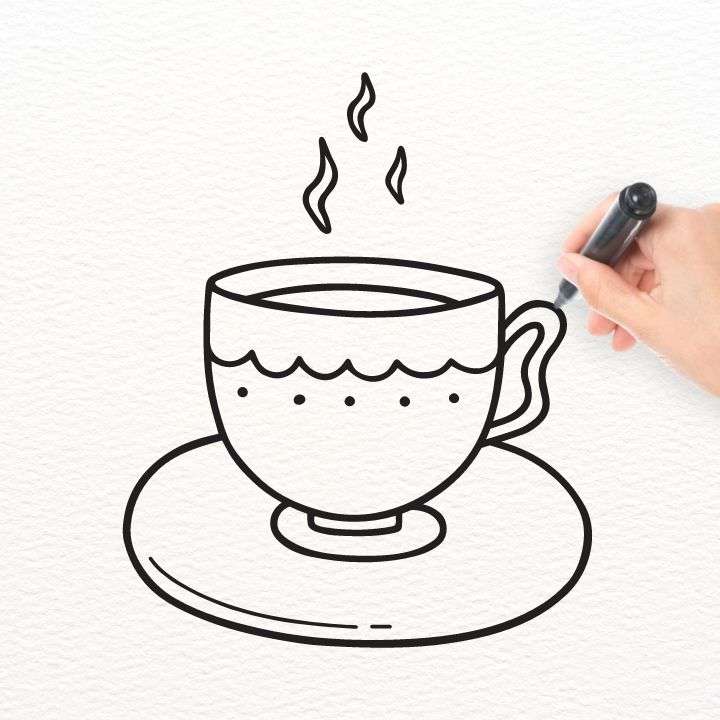
Drawing a tea cup is an easy and creative way to practice your drawing skills. Start by sketching the cup’s shape, making sure you pay attention to the details like its handle and saucer.
You can add more elements, such as steam or patterns around the cup. Finally, give it some dimension by adding colors and shadows.
56. Cute Cake
Designing a cake with pencil and paper is simple and fun. Draw a circle or oval shape for the cake with frosting, then add details like candles and sprinkles to give it that special touch. For more fun, color it with different shades for a vibrant finish.
Here’s a step-by-step guide on how to draw a BTS cake:
57. Cute Lipstick
Drawing cute lipstick is an easy and fun idea for anyone looking to create a quick sketch.
Start by lightly drawing an oval shape in the center of the page. From there, draw two small circles at the bottom of the oval for the base of the lipstick tube. Create details like ridges along the tube or swirls on the cap.
58. Cupcake
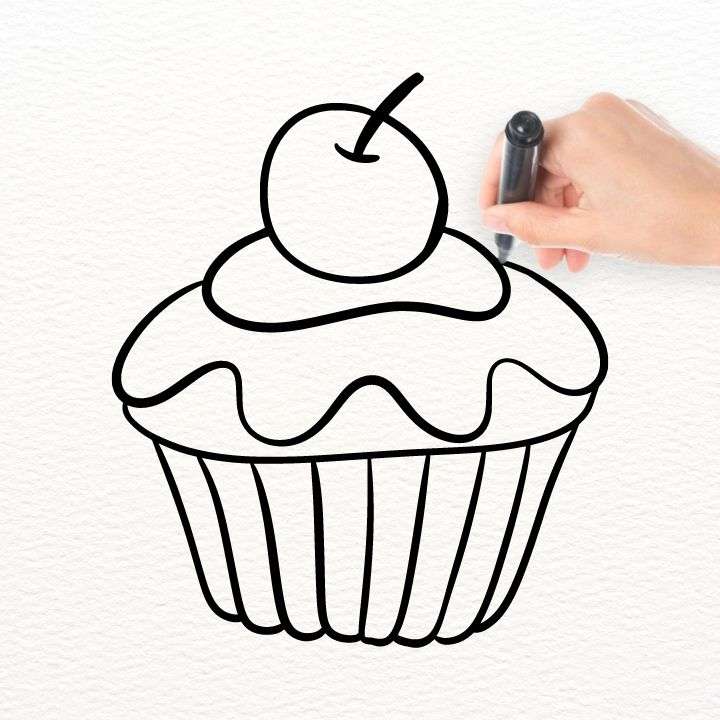
Draw a cupcake in under 5 minutes! All you need is some paper, pencils and your imagination.
Sketch a simple circle for the base of the cupcake and some curved lines. After that, add details like sprinkles or icing. To finish it off, use multiple colors to make it look extra sweet.
59. Rainbow Cloud
With this easy tutorial, you’ll be drawing a rainbow cloud in no time!
Start by sketching the basic shapes of clouds with a rainbow in between, then add details like raindrops to make it look more lifelike. For extra color and charm, paint it with shades of yellow, pink, and blue.
60. Cute Shooting Star
This is another easy drawing idea you can complete in less than 5 minutes. Begin by outlining the star, then add details like streaks or sparkles. And that’s it!
You now have a cute shooting star drawing that you can color with shades of yellow and pink for a magical finish.
61. Apple Watch
Drawing an Apple Watch is not only easy but also a fun way to bring technology to life.
Sketch the shape of the watch and its iconic buttons, then add details like bands or stickers for a more realistic look. Color it in with shades of white and silver for an extra-enjoyable result!
62. Cute Watermelon

This cute watermelon drawing is super easy to create and can be done in under 5 minutes!
Draw the large oval shape of the watermelon. Don’t forget to add seeds, texture, and color using just a few simple lines. Draw stripes along the sides of your watermelon to give it its unique look.
63. Yummy Pizza
Try your hand at drawing a delicious-looking pizza in just 5 minutes or less. With some creativity and helpful tips from us, you can have a great-looking pizza drawing in no time.
Start by sketching out a round pizza shape with your pencil. Then, draw fun details like pepperoni, olives, mushrooms, or cheese – whatever looks best to you!
64. Cute Basketball

Anyone can channel their inner athlete by drawing a cute basketball. Draw a circle for the ball, then add details like stars or stripes for a more playful look. Finally, color it in with different shades of orange and yellow for an extra-fun result!
65. Chimney
Drawing a chimney is a great way to express creativity in a short amount of time. Once the shapes are down, feel free to customize your chimney however you’d like!
Add some smoke coming out of the top, or make it look more elaborate with extra decorations. You can even combine different types of bricks for an interesting effect.
66. Pumpkin
Pumpkins are a classic drawing idea, and this one is easy to do in minutes.
Just draw an oval shape with a few lines for the stem and leaves, then you’re done! You can also add some details like eyes, teeth, or vines if you want to make it more complex.
67. Spooky Ghost
Use your artistic skills to create a spooky ghost!
First, sketch the shape of a ghost. Then add eyes, arms, or any other details you want. Finally, use shades of white and grey for the color scheme to make it look extra creepy.

Who doesn’t love a donut? Draw one with this easy tutorial!
Begin by sketching two circles for the donut, then add details like sprinkles or frosting. To finish it off, color it in with shades of pink and brown for an extra-delicious result!
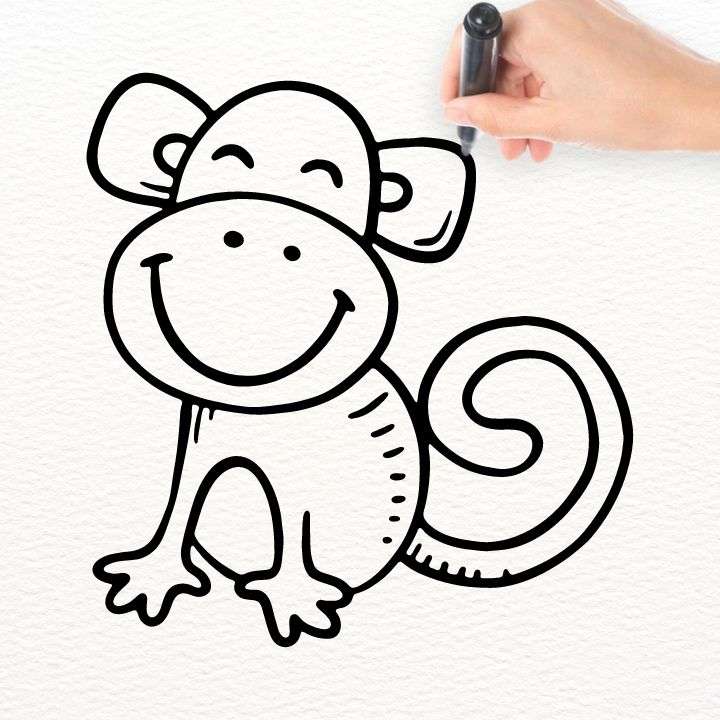
Try your hand at being creative by sketching a monkey. First, draw the monkey’s face, then add features such as fur or a mouth. Make it extra fun by coloring it with shades of brown and yellow.
70. Hello Kitty
Drawing Hello Kitty is a fantastic way to widen your creativity and imagination. Start by sketching a bow and a circle for her head, then add details like whiskers for an extra-cute look. For even more fun, color it in shades of pink and white.
There you have it! We hope you had fun practicing your skills and found easy drawing ideas that inspire you to create something unique .
Whether you’re an aspiring artist or a seasoned pro, easy things to draw are a great way to practice and improve your skills. Enjoy!
Related Posts
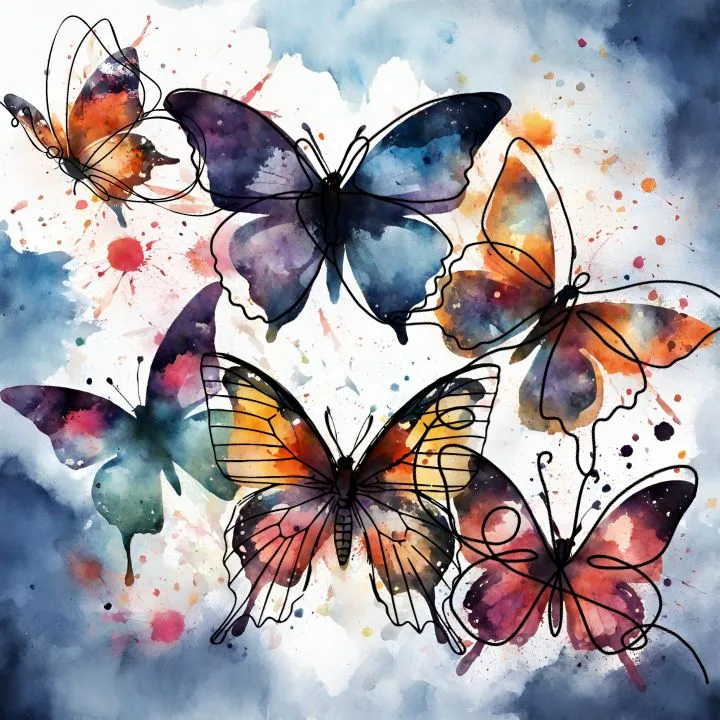
25 Drawing Easy Butterfly Ideas to Unleash Your Creative Wings
Explore a world of creativity with drawing easy butterfly ideas. Release your imagination and create stunning butterfly art with these inspiring concepts!

Sketching Love with 23 Heart Drawing Ideas
These heart drawing ideas invite you to embark on a creative journey that goes beyond the strokes of a pen.

37 Animal Drawings That Roar with Creativity
Embark on a visual safari with our collection of dynamic animal drawings, each meticulously crafted to inspire and captivate.
Leave a Reply Cancel reply
Your email address will not be published. Required fields are marked *
Save my name, email, and website in this browser for the next time I comment.
Art Studio Life

Articles » Painting » 9+ Best Travel Art Supplies for Painting Artists Who Travel
9+ Best Travel Art Supplies for Painting Artists Who Travel
- Last Updated: July 8, 2021
- Written by: Elisabeth Larson Koehler
This article may contain affiliate links, please read my affiliate disclosure for more information.

Fundamentals of Color Mixing [FREE] Guide >>
Get my Color Mixing Artist's Guide, with helpful tips for mixing colors you can start putting into practice right away!
One of the perks of painting is that all of the necessary materials are fairly portable. This article will guide you through which travel art supplies are the easiest to pack and take with you.
We are lucky in this day and age to be able to carry our paints in small paint tubes and have easels that are light and foldable. However, there are a LOT of different materials out there and it can be hard to know what exactly you need to paint and travel. I will break down exactly what you will need, so that you can easily be a traveling artist, painting on the go!
Painting Surfaces Best for Travel
This is one of the more important of the travel art supplies you’ll need to remember to take with you. As wherever you paint you will always need something to paint on.
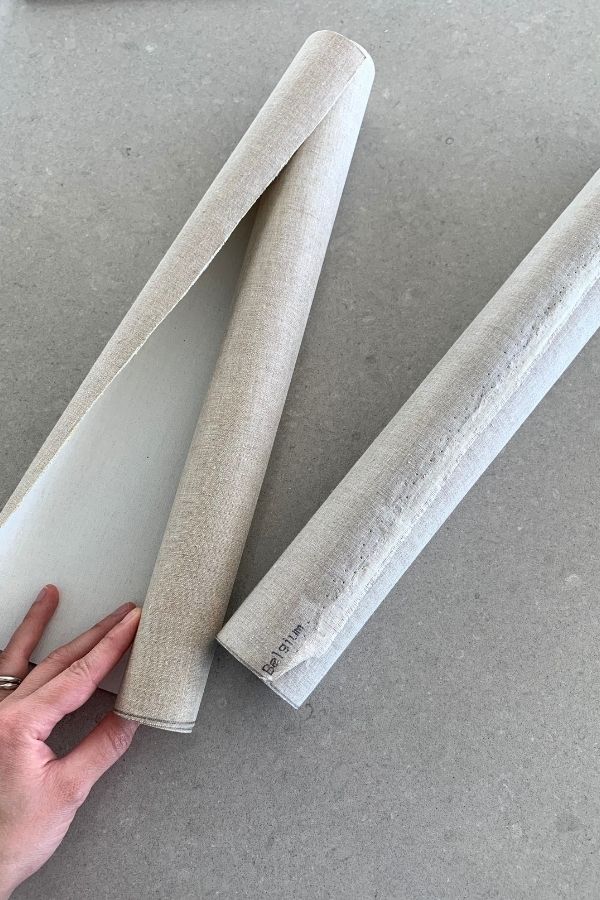
I recommend using loose gessoed canvas that can be rolled up. Boards will take up more space than stretched canvas. Not to mention you have to be a little more careful not to puncture or damage stretch canvases!
You can gesso your own canvas or purchase it already primed and ready to paint on! When you are ready to start your painting, you will simply cut out a size that is appropriate for your project. Then attach the piece of canvas to a hard board with some masking tape. This hard board will act as a support for all of your paintings on your journey. You will be able to use both sides if you wish to do multiple paintings at a time! I do this often 😉
Art Supplies for Storing Paintings and Canvas
To transport your canvas I recommend to roll it up and store it safely inside a mailing tube. This provides excellent protection for your painting surface and keeps it from getting any creases.
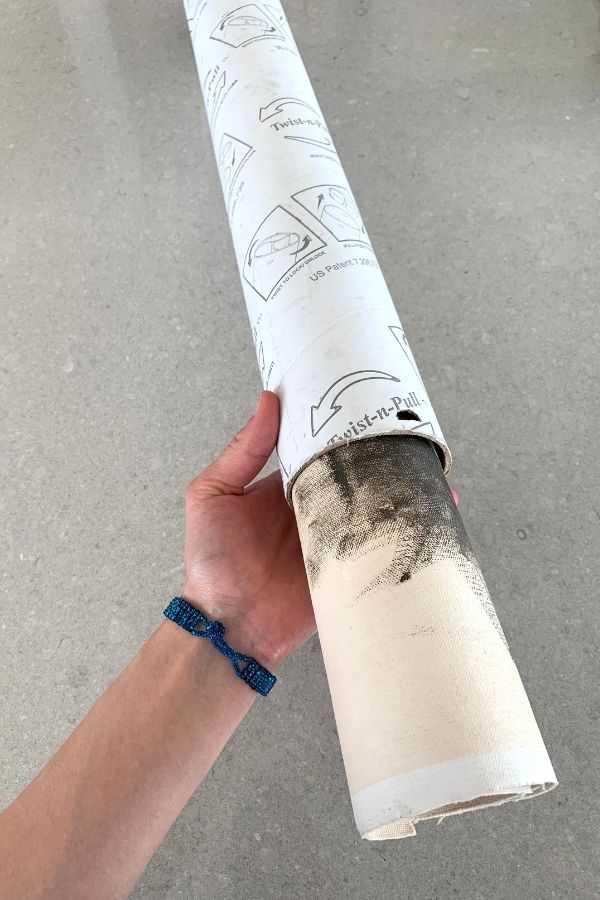
In addition, I recommend for you to use the mailing tube to store your completed paintings on your travels ( once they are dry ). Again this is a wonderful way to protect your work from getting any folds or creases. When traveling we often accidentally drop things or stack things on top of one another. Therefore storing your work in a mailing tube alleviates a lot of worry about any damage that may incur to your work!
✨ A quick tip about rolling up paintings – keep the painted side on the outside! I know this sounds odd but it is the best way to take care of your paintings while rolling them up. Rolling oil paintings inwards can cause them to chip or flake which will become visible when laid out flat again.
Travel Art Carrying Case
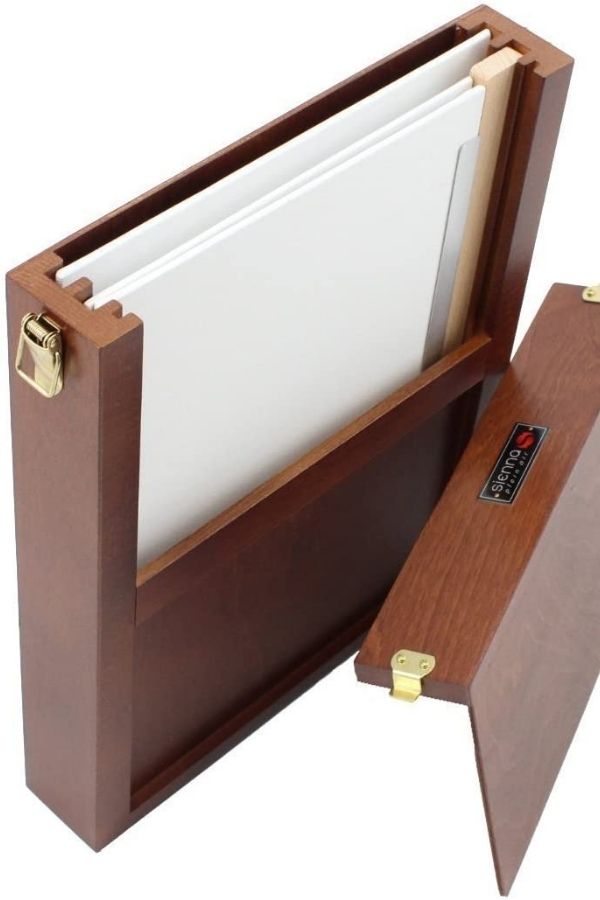
What if your paintings are still wet and you need to continue your travels? Enter the wet panel art carrying case ! You can purchase one or make your own. They allow you to store wet painting safely inside a box in such a way so that it won’t touch anything else. I personally keep my painting taped down to a board to allow for me to place my painting safely inside a carrier if I need to do so.
Art Supplies to Speed up Drying Time
If you are using oil paints and would rather not have to deal with wet paintings while traveling. There are specific travel art supplies that can help speed up the drying time.
Liquin for traveling artists

Liquin will help a great deal to speed up the drying time! Using just a little will go a long way. Add it to your paint at times when you would normally use linseed oil to thin out your paint.
Whenever I use Liquin in a painting, I take out a small amount of it from the jar using a palette knife and place a little pile of it onto my palette. This way it is easy for me to add it as needed while I mix my oil paints .
Lightweight Travel Easels
An easel can be a little bit of a headache for artists who are traveling, as it is most likely the largest item out of all your travel art supplies. However, there are some great travel easel options out there for every budget!
Pochade boxes for travelers

A pochade box is one of the most popular easels for plein air painters and traveling artists. They are also quite historical as they came into popularity in the 19th century when artists started to paint out of doors. Pochade boxes tend to be small and are highly portable as you can store not just your materials inside them but also your painting. You can purchase one or make your own out of a cigar box!
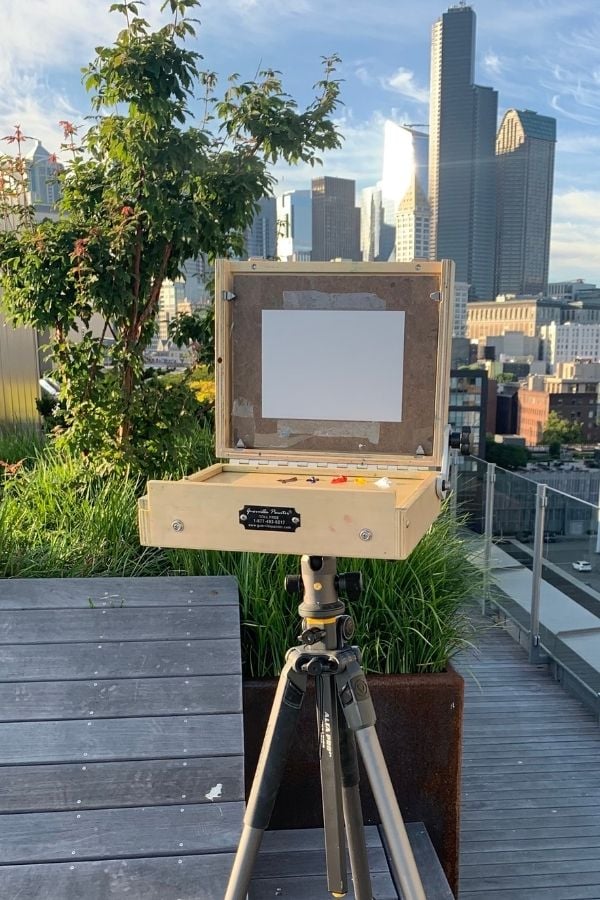
French easel travel supplies
I personally use a French easel when I travel as well as in my studio. So, it is nice to be able to use the same easel that I always use when on the go. Similar to the pochade box, it allows you to store a lot of supplies inside the easel including your palette. It can be folded up smaller which makes it easy to carry and transport.
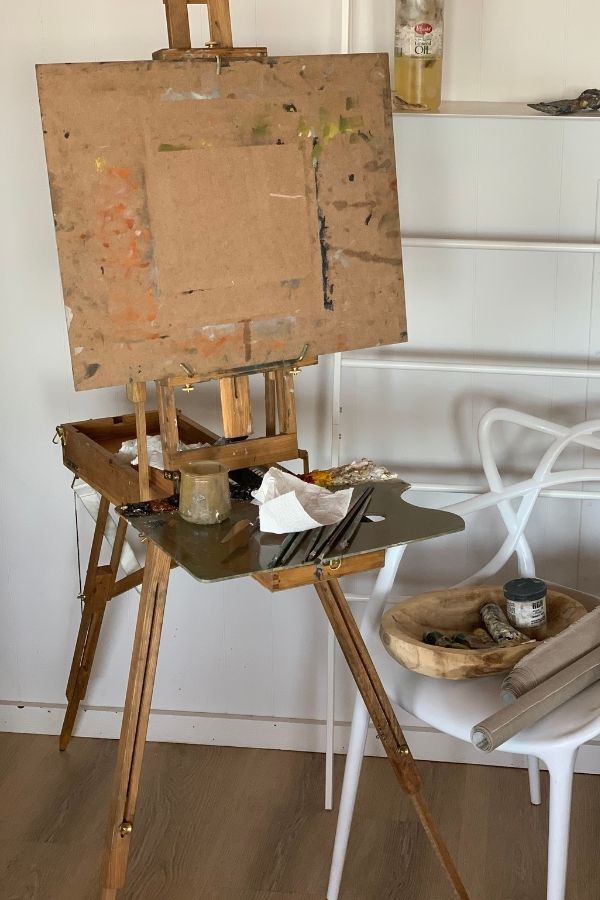
However, the downside to a French easel however is that it can be a bit heavier than other options, due to its wood construction. So, if you are looking for something particularly lightweight, this might not be the best option for you.
Tripod easel with palette box
The tripod easel and palette box can sometimes be a good alternative to the traditional French easel. The versions made out of aluminum can be lighter weight and less prone to breakage. In addition, this variety gives you a good distance between the painting and the palette – something missing with a pochade box.
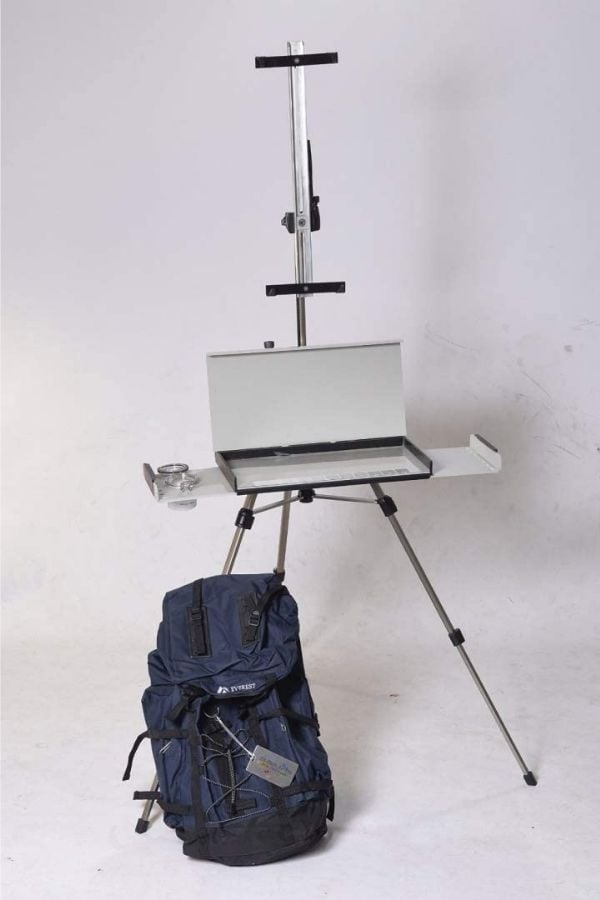
A good camera tripod easel with a palette box can be a little pricey. However, if you are planning to do a lot of plein air painting or walking with your painting supplies. It is really worth it to get a lightweight easel, as your back will thank you! 🙂
Brushes and Brush Cleaner
For traveling I recommend the Guerilla ‘mighty mite brush washer’ . It is leak proof, you don’t have to worry about soiling things when traveling with with linseed oil or turpenoid. In addition, it works as a terrific brush cleaner that lasts a long time.

Palette cups
You could also use oil painting palette cups. These are small metal cups that you can clip onto your palette. They are not meant to be a brush cleaners however. So you can’t clean your brush in this as thoroughly as you could in a regular brush cleaner. However, these make for super useful travel art supplies. As they work great as receptacles to keep your linseed oil and or turpenoid in – when you need to use those in your painting.

Paints for Travel
Most paint tubes come in a large or small size – typically 37 ml or 150 ml size tubes. So, when traveling with your painting supplies it is best to use small sized tubes. As this will help a great deal with keeping the weight down.

If small sized paint tubes are still too heavy and you don’t need to take that much paint with you… Then you could purchase small containers to store your paint in. Just keep in mind, that the paint will dry quicker in such containers than if it remained in a tube!
So, if you are planning to travel and paint for just a few days then small containers work nicely. However, not if you will be on the go with your travel art supplies for a couple of weeks or longer. As the paint will likely dry out over that period time.
If you haven’t already – grab my FREE Color Mixing Guide for helpful color mixing instructions and techniques!

Traveling with Oil Paints on an Airplane
It is possible to travel with your oil painting supplies on an airplane . However, there are a few things that are valuable to know before you start packing your travel art supplies! After traveling many times with oil paints – believe me when I say that you will appreciate knowing how to fly with oil paints!
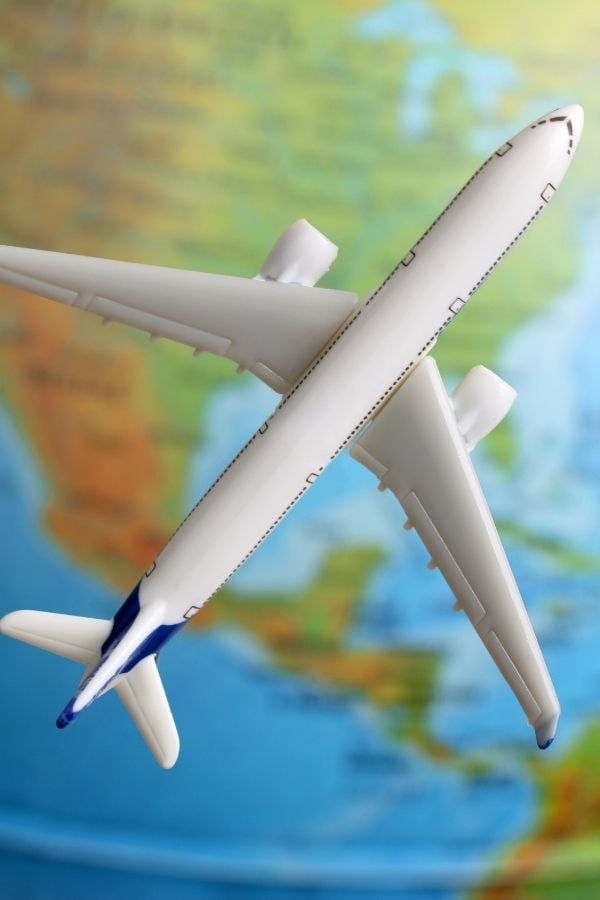
Start Taking your Travel Art Supplies with you!
Whether you are traveling by car or plane, all of the tips for painting above will help a great deal. As you now have a good base of which are the best travel art supplies to take with you. So that you can have a smooth experience as a traveling artist.
It can be extra work to carry your painting supplies with you on the move – but doing so is deeply rewarding and more than worth it…
The experience of getting to paint the places you visit is very rich. You notice and experience things you would not have otherwise. And, you have the extra perk of having a recorded visual memory of your travels!
Have you ever painted while traveling before? If so, I would love to hear how your experience went! What travel art supplies do you wish you had brought with you or maybe left behind?
Want to remember this? Save 9+ Best Travel Art Supplies to your favorite Pinterest board!
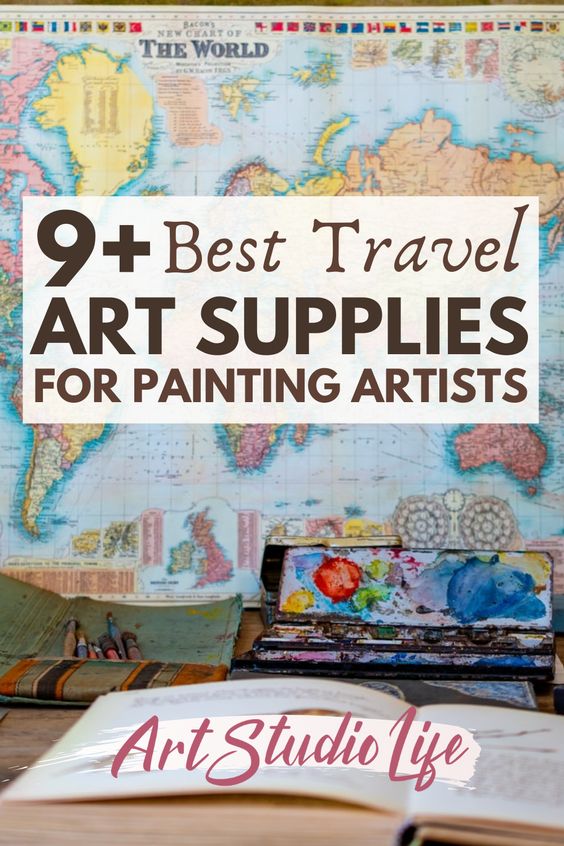
Did you get your FREE color mixing guide?
Subscribe (free) to get my best tips, and Color Mixing Artist's Guide . With tips to get started mixing colors right away!
Hello! I'm Elisabeth Larson Koehler
Art Studio Life exists for you to be able to stay inspired, learn, and improve your skills.

COLOR MIXING MASTER GUIDE (150+ Page PDF Ebook)
My ever popular Color Mixing Master Guide , will help take the uncertainty out of mixing colors. With over 60 Color Mixing Charts − spend less time struggling with mixing color and more time creating the shades of colors you want for your painting!
Recommended:
4 thoughts on “9+ best travel art supplies for painting artists who travel”.
I am not traveling very far but when I do travel I have a few art supplies! And I have taken a couple of trips to Yosemite National Park, and Big Sur, and even Lake Tahoe it was beautiful with so much to paint! I have a few travel watercolor sets! And I have gotten good at scouting out a spot with natural beauty as well as shade!
Hi Abbi – oh that is wonderful that you have taken your art supplies with you to some of those beautiful places! Watercolor sets are the best for traveling as they don’t require many materials. I have found that painting in different places does make you better at being able to scout good painting locations – and its wonderful when shade accompanies a good painting view 😉
Hi Elizabeth! I have been Plein Aire painting for years. Since I paint locally one of the best aids is my garden wagon. It collapses and stays in the car trunk ready to load up and head into nature filled up with all the painting supplies mentioned. It is better than using a backpack!
Hi Sandy! Oh that is a really good tip. What a great setup to be able to collapse it and keep it in your car. I completely agree – Carrying everything in a backpack can be quite exhausting as once you reach your destination you are a bit too tired to paint! 😉
Leave a Comment Cancel Reply
Your email address will not be published. Required fields are marked *
- Search Please fill out this field.
- Manage Your Subscription
- Give a Gift Subscription
- Newsletters
- Sweepstakes
How to Plan an Unforgettable Trip to Rome, According to Local Experts
Whether your tastes swing towards art and architecture, high-end shopping and dining, or browsing markets and munching on street food, it’s an exciting time to visit Rome.
Elizabeth Heath is a writer and editor living on a hill in Umbria, from where she writes about travel in Italy, the rest of Europe, and farther afield.
:max_bytes(150000):strip_icc():format(webp)/Elizabeth-Heath-c19882f034d94d69ab37f6714a220b7f.jpeg)
Best Hotels and Resorts
Best things to do, best shopping, best nightlife, best restaurants, best time to visit, how to get there, how to get around.
Alexander Spatari/Getty Images
For me, the Eternal City is eternally fabulous. No matter how crowded it gets, how dysfunctional its current government is, or how many bad pizzas there are in ratio to good ones, Rome remains. It’s persisted and resisted for more than 2,775 years, and even at this ripe old age, Rome is still evolving.
It’s an exciting time to visit Rome, and even for people who live there, the flurry of post-pandemic activity in the travel sector has been dizzying. “Archaeological sites that have been fenced-off for years are now accessible to visitors, there’s a host of innovative new tour options, and I can barely keep up with the number of absolutely stunning luxury hotels that have opened ,” says Travel + Leisure contributor and Rome resident Laura Itzkowitz, who also writes about Rome in her newsletter, The New Roman Times . “It’s a delight to see so much investment in the city and so many new ways to experience it.”
No matter how you decide to see the city or whether your tastes swing towards art and architecture, high-end shopping and dining, or browsing markets and munching on street food, Rome gives you options. We asked Itzkowitz and some other Rome travel experts to weigh in on their favorite places and experiences to recommend in eternal Rome.
Top 5 Can’t Miss
- Swoon over the cityscape. Few things are as romantic as Rome at night from a vantage point like the Fontana dell'Acqua Paola or the Capitoline Hill.
- See marble turn to flesh. At the Galleria Borghese, Bernini’s lifelike sculptures are a gazillion times more impressive than what you remember from art history class.
- Do the Full Monty of Italian dining. Bring your appetite and go big, with antipasto, pasta, main course, and dessert at a homey trat like Da Enzo da 29.
- Get up early. At least once during your stay, request an early wake-up call to discover a deserted city. ArcheoRoma can lead the way.
- Shop at a market. If you don’t buy produce, trinkets, or street food at a real Roman market like Testaccio or Campo de’ Fiore, have you been to Rome?
Courtesy of Bettoja Hotels
Palazzo Vilòn
If there’s one thing our experts agree on, it’s that Palazzo Vilòn luxury apartment is the most sumptuous new address in Rome. Nicole Bono, luxury travel and events planner with Bono Events International says, “When they open the doors for you, your jaw will drop.” Gary Portuesi, a T+L Top Travel Advisor with Authentic Explorations , says that at Vilòn, “you get to live like a Roman aristocrat in an intimate palazzo in the best neighborhood.”
Singer Palace
“I'm in love with the Singer Palace these days,” says Bono of this 19th-century beauty in the former Singer sewing machine headquarters. “It's family-owned, and that is felt with every single detail in this property. You're truly cuddled from the moment you walk in the door till your last Spritz before you leave.”
Hotel de Russie, a Rocco Forte Hotel
T+L readers’ favorite hotel in Rome is also a hit with Portuesi, who raves about its “with its unique and secluded Mediterranean tiered secret garden walking distance from the Spanish Steps, Fontana di Trevi and Piazza del Popolo.” The hotel’s Stravinskij Bar remains one of Rome’s most elegant locales for a cocktail.
Hotel Mediterraneo
Every time I exit Termini Station, I sigh with comfort at the sight of this trusty four-star in a fascist-era Art Deco building. Stepping through the doors feels like stepping back in time, in a good way, with old-school service, a delightful lobby bar, and humongous suites, some with skyline views of Rome.
Christopher Larson/Travel + Leisure
Basilica di San Clemente
For a real sense of how Rome’s history is layered like a lasagna, head to this church near the Colosseum — or rather, underneath it. An atmospheric archaeological area beneath the not-too-shabby 12th-century church holds an even earlier Christian church, which lies on top of a pagan altar and an ancient Roman apartment building.
ArcheoRunning
If you’re a runner, join archaeologist, guide, and running enthusiast Isabella Calidonna on an early morning jogging tour through Rome's truly magical empty streets. (Trust me, it’s okay if you run slowly.) If you’re not a runner, don’t sweat it — she’ll be happy to do the same informative tour at a walking pace.
Via del Governo Vecchio
Spend a late afternoon vintage shopping on my favorite street in Rome , then stick around for an aperitivo, followed by pizza and gelato. If that trifecta of Roman drinking and eating isn’t enough, this splendid street near Piazza Navona has a buzzy but manageable bar-hopping scene.
Largo Argentina
Want to stand at the very site (or very near it, anyway) where Julius Caesar lost his life? Long visible only from street level and best known as a cat sanctuary among picturesque ruins, the archaeological area at Largo Argentina site is now open to the public, thanks to funding from Bulgari . The Curia of Pompeo, where Caesar got shivved, stands near the ruins of four ancient temples.
Galleria Borghese
Reserve your tickets in advance and prepare to be overwhelmed by the beauty here, both of the ornate salons of this noble palace turned art museum, and the amazing works inside, including Bernini’s spellbinding "Rape of Proserpine" and several Caravaggio paintings.
Testaccio Market
This sprawling covered market in the working-class Testaccio neighborhood offers an authentic slice of Roman daily life. Even if you’re not shopping for clothing, produce or fresh fish, stop for some of Rome’s best street food, especially a suppli at Food Box or a drippy panino at Modri e Vai.
Itzkowitz is a fan of this artisan jeweler in Monti and even had owner Antonio design a pair of custom earrings for her wedding. If you don’t have time for a made-to-order bauble, the shop has many original designs, many of which feature colorful gemstones.
Essenzialmente Laura
For a real only-in-Rome gift or souvenir, Portuesi refers friends and clients to the perfumery of Laura Bosetti Tonatto, who’s made custom scents for celebrities, royals, and aristocrats, including Queen Elizabeth II. “You can create your own perfect perfume or find the scent you love,” he says.
La Bottega del Marmoraro
It’s hard to imagine a store like this anywhere else — a tiny workshop on pretty Via Margutta where stone carver Sandro Fiorentino tinks away at marble plaques by hand. “I love to bring out-of-town visitors here,” says Itzkowitz. “Prices start at around 15 euros, which means you can find an affordable, handmade souvenir.”
Courtesy of Hassler Hotel
Fontana dell'Acqua Paola
Some of the best things in Rome are free, including the views from this monumental fountain high on the Janiculum hill. It’s one of T+L’s top underrated things to do in Rome . Fans of the Oscar-winning film “Rome, the Great Beauty” will recognize this majestic spot.
This classy bar offers great cocktails and light bites with a sublime view. “A table there in the stunning Piazza di Pietra,” says Bono, “with the incredible Roman columns all lit up is truly magical, and it feels like it's just there for you."
Hassler Hotel 7th Floor Terrace
The recipe for an unforgettable Roman evening: Start with panoramic city views from atop the Spanish Steps, stir in a specialty cocktail, garnish with some elevated aperitivo fare, and drink it all in at one of our favorite family-run hotels in Italy and one of the absolute best in Rome.
Da Enzo da 29
Despite its near-legendary status and the long lines for a table (Enzo doesn’t take reservations), Itzkowitz says a meal here is “worth the wait and lives up to the hype — every time.” She’s a fan of the handmade tonarelli cacio e pepe but says that the food here is consistently good across the menu.
Trattoria Da Cesare Al Pellegrino
This new-in-2023 sister property of a neighborhood favorite in residential Monteverde brings hearty, traditional Roman pasta and meat dishes to the centro storico. “Run, don't walk,” says Bono, “because this city location is super charming, and tourists haven't found it yet.”
Pro Loco Pinciano
Portuesi says you’ll feel like a local at this super-casual pizza and pasta joint just outside the city walls, where the emphasis is on ingredients and wines sourced from the surrounding region on Lazio. Charcuterie platters are delicious and abundant here.
L'Antica Pesa
Regularly named one of the best restaurants in Rome, this Trastevere culinary landmark is, per Portuesi, “a standard and consistent classic” and worth crossing the river for. Head here for a special dinner or when you’re ready to go big (before going home, maybe?) and order an appetizer, pasta (primo), meat, and dessert for the full Italian dining experience.
You’ve heard all the warnings about visiting in high summer, but if that’s the only time you have to visit, Itzkowitz says to do as the Romans do: rest in your cool hotel room in the afternoon and venture out again in the early evening. Bono agrees that summer can be...sticky but adds, “Those summer sunsets on a rooftop with an Aperol spritz certainly make for that 'Dolce Vita moment' we all crave.”
Portuesi recommends November, as it’s still relatively warm and the crowds have thinned out; January, when sale season starts; or April and October. “Tourists might still be there, but the colors of spring and autumn are amazing, and temperatures are on the warm side.” I love visiting in January or February when the crowds are much more manageable, and if you’re lucky, you can catch some lovely, crisp, sunny days.
Most visitors fly into Rome’s Leonardo da Vinci/Fiumicino Airport (FCO). From there, you can take a 30-minute non-stop train to Termini, the central station, and take a taxi, Metro, bus, or tram to your accommodation. A cab from FCO to anywhere inside the Aurelian Walls costs 50 euros. Ride-sharing services other than Uber Black are not available in Rome.
Rome’s historic center is primarily flat and highly walkable. Many visitors take the Metro to reach the Vatican Museums, then walk back into the city from there (or take a cab from St. Peter’s Square).
Buses and Metro, both run by ATAC , are also reliable ways to get around, though depending on the distance, walking may be faster. Note that taxis in Rome cannot be hailed on the street. Instead, they wait at taxi stands or ranks generally located near tourist areas.
I strongly recommend against renting a car in Rome, as traffic and parking are a mess and the centro is a maze of one-way streets, many of which are pedestrian-only. If you pick up a car in Rome for a more extended tour in Italy, make sure you have your route mapped out in advance — and nerves of steel.
Related Articles
- Share full article

Now One Fast Train From Tokyo: Culture, Crafts and Hot Springs
A new high-speed train stop unlocks Kaga, a destination for onsen, nourishing food and traditional crafts, as an easy-to-reach getaway from Japan’s capital.
A riverside cafe pops up from spring through fall on the Kakusenkei gorge in Yamanaka. Credit... Andrew Faulk for The New York Times
Supported by
By Hannah Kirshner
Hannah Kirshner lives in Yamanaka, Japan, and wrote a book about the people crafting and cultivating the town’s culture, including sake brewers, woodworkers and foragers.
- May 17, 2024
At the southwest corner of Ishikawa, a verdant prefecture hugging the Sea of Japan, traditional craftsmanship thrives alongside contemporary art and architecture in the small towns that make up Kaga City.
Three of these towns — Katayamazu Onsen, Yamashiro Onsen and Yamanaka Onsen — are famous for their onsen, or hot springs. In centuries past, monks and merchant seamen made pilgrimages to these restorative waters. The 17th-century haiku master Matsuo Basho even penned two poems during a visit.
Japanese tourists still flock to Kaga’s onsen towns every fall, when the leaves turn fiery and snow crab is in season. But few foreigners find their way here, in part because the journey from Tokyo has not been easy.
That changed in March. A new extension of the Hokuriku Shinkansen, the high-speed train that rockets passengers from Tokyo to this region, now includes a stop at Kagaonsen station. The trip takes less than three hours on a single train.
When I first came to Kaga in 2015, the journey took two trains and nearly four hours from Tokyo. There was little English signage at the station and Google Maps didn’t yet list the (infrequent) local buses.
I had come to apprentice at a bar in Yamanaka, where I met people who craft wooden bowls, brew sake and make paper from mountain shrubs. Enchanted, I returned to write a book about how their work weaves into the vibrant local culture and community; by the time it was published, Yamanaka had become my home.
I set out earlier this year to be a tourist in my adopted home, looking for places that express the unique character of each of Kaga’s three onsen towns.

Katayamazu: Where retro meets modern
In Kaga, public bath houses (segregated by gender) are so ingrained in daily life that many homes were built without a shower or bath. I lived for a time in such an apartment, enjoying the daily ritual of showering among the softly echoing voices of neighbors and soaking in a communal pool of onsen water shrouded in steam.
Katayamazu , a fading red-light district, is the least traditional of Kaga’s onsen towns. Its public bathhouse, a glass and steel box, gleams along the edge of Shibayama Lagoon. The building was designed by Yoshio Taniguchi — the architect of New York’s Museum of Modern Art expansion — as part of a revitalization effort. It stands in contrast to Katayamazu’s dated hotels and shuttered shops, remnants of an exuberant domestic tourism boom from the ’60s through the ’80s, followed by decades of economic stagnation .
I frequent the bathhouse on odd-numbered days, when women get to bathe on the side overlooking the lagoon. In winter, it’s possible to spot migratory Mandarin ducks gliding across the reflection of snow-capped Mt. Haku, the tallest peak in Ishikawa. A cafe upstairs overlooks the same panorama, but I prefer the coffee across the street at Mie Coffee , served in local pottery. (Like many small businesses here, they take irregular holidays, so check their Instagram for hours.)
I stayed one night at Besso , a spare but cozy inn converted from a massage parlor, and walked along silent streets to a bar called Kikko , a 1970s time capsule with stained glass windows draped in red velvet, jazz and soul albums decorating the walls and a record player in the corner. The barman, 85-year-old Tokio Kameya, jokes that “even I am retro now.”
A group of amateur sumo wrestlers were wrapping up a karaoke party as I sat down. Kameya-san poured me a Japanese whiskey over perfectly clear ice and played a bossa nova record as he tidied up. He told me his bar caters to locals (it is cash only, no written menu, and no English spoken) and he doesn’t think Katayamazu has much to offer tourists. But to me the town’s charm is its anachronistic mix of modernity and kitsch.
Yamashiro: A meditation on art and fish
Onsen go hand in hand with ryokan, Japanese inns where guests luxuriate over elaborate seasonal meals and soak in mineral-rich baths. On my birthday in January, as snow blanketed Yamashiro, I checked into Beniya Mukayu , a 16-room ryokan tucked into the woods.
Guests who stay at least two nights can book experiences with artisans — making paper, shaping Japanese sweets or roasting tea — but I would happily spend days of quiet contemplation in the ryokan’s communal spaces. I hardly saw anyone as I soaked in a hinoki-wood onsen that frames a vignette of swaying bamboo, its rustling leaves harmonizing with the sound of running water.
On a map of the garden’s 13 varieties of moss, I recognized the spare typography of the designer and thinker Kenya Hara (best known as the art director of Muji, the Japanese retailer). Beniya Mukayu’s owners, Sachiko and Kazunari Nakamichi, share with Hara a decades-long friendship and exploration of minimalist Japanese aesthetics.
Later, while other guests trickled into the ryokan’s dining room for crab shabu shabu and duck hot pot, I stalled in the entryway, mesmerized by Hara’s kinetic sculpture on permanent display. Beads of water spun across a white lotus-like disc and disappeared into a small black hole described as a ho-sun, a Zen term referring to one’s mind.
In Yamashiro’s town center, I followed the trail of another artist, Kitaoji Rosanjin , a sought-after engraver and calligrapher who came to Yamashiro to study ceramics in 1915 (his pottery is now in collections around the world). I visited a cottage called Iroha Souan , where Rosanjin stayed and carved signboards for several nearby ryokan; guests of Araya Totoan can view his work, including a painting of a crow composed of loose brush strokes, in the ryokan’s lobby.
Next, I took a dip at Kosoyu , a bathhouse rebuilt to look as it did during Rosanjin’s time. Sunlight poured through stained glass onto Kutaniyaki tiles, Kaga’s style of brightly painted porcelain. (Kosoyu is for soaking only, so it’s best to arrive freshly bathed; there are showers at Yamashiro’s main public onsen across the street.)
Rosanjin was known as a gourmand as much as an artist — he became the creative force behind an exclusive restaurant , pairing ceramics and food — and he was said to have enjoyed the exceptional freshness and variety of ingredients in Kaga. These days, tourists and locals line up for unpretentious 2,000-yen lunch sets (they could easily cost five times as much in Tokyo) at Ippei Sushi . On a recent Friday, the chef, Yukio Nimaida, showed me three kinds of local prawns he’d sourced early that morning. The rice he uses, a bouncy sweet cultivar called Koshihikari, grows nearby in paddies fed by clean mountain water.
I asked Nimaida-san what he hopes visitors to Kaga will experience. “Hot springs and fish,” he said. “That’s all you need, isn’t it?”
Yamanaka: A pathway through woodlands and lacquerware
With Kiku no Yu public bathhouse at its heart, Yamanaka’s downtown stretches along one side of the Kakusenkei gorge. On the other side, a peaceful walking path meanders beside the icy aquamarine river; I walk there often, especially in spring, when wildflowers emerge from lush tufts of moss.
Yamanaka is also known for wooden tableware and teaware finished with lacquer made from the sap of urushi trees. The best of this lacquerware is not for sale in the souvenir shops along the main street but is on display in small museums and in service at tearooms, bars and ryokan.
One such place is Mugen-an , a house-turned-museum near the south end of the Kakusenkei walking path. Its shoin-style architecture — including paper doors decorated with gold and rare spalted persimmon-wood railings, naturally streaked with black — reflects the status of its original residents, a former high-ranking samurai family.
In early May, I brought friends from New York to Mugen-an to sip matcha — the same bright green as the new maple leaves outside — and admire displays of tea ceremony utensils decorated in maki-e, lacquer illustrations dusted with precious minerals.
A scenic hinoki-wood bridge, Korogi-bashi, leads back toward town. Up a steep stone-paved side street next to a shrine is Washu Bar Engawa (the bar I apprenticed at when I first came to Yamanaka), where sake and food are served in an exquisite collection of local lacquerware and antique pottery. Last time I stopped by, I drank from an elegant horse chestnut cup made by the craftsman Takehito Nakajima specifically to suit the local sake, Shishi no Sato . On any given night, there’s a good chance of running into a few craftsmen at the bar.
It’s not easy for tourists to access craftspeople’s studios, but at Urushi-za , a lacquerware showroom, visitors can make an appointment to tour the attached training institute — where students learn every step from forging their own tools to applying maki-e — and even try shaping a bowl by applying a sharp gouge to a fast-spinning piece of wood on Yamanaka’s unique style of lathe.
The most immersive experience of Yamanaka’s distinct culture is a stay at one of its high-end ryokan, like Kayotei , where the owner, Masanori Kamiguchi, has spent decades cultivating appreciation of local crafts and ecology among his guests. Across the street, the young proprietors of Hanamurasaki ryokan, Kohei and Manami Yamada, pursue a similar vision. And visitors don’t have to stay overnight to reserve afternoon tea in their sabo, a tearoom designed by the Tokyo-based restaurateur and designer Shinichiro Ogata to feature locally quarried stone and Japanese paper, along with teaware in shades of charcoal and porcelain.
“I believe that in order to pass down something traditional it has to fit into modern life,” Kohei-san told me. Manami-san added: “Ryokans have always been cultural salons.” This kind of hospitality encourages patronage of local crafts, and brings new people and ideas to small towns. Visitors who come on the extended Hokuriku Shinkansen can be part of that legacy, helping Yamanaka, Yamashiro and Katayamazu thrive.
Follow New York Times Travel on Instagram and sign up for our weekly Travel Dispatch newsletter to get expert tips on traveling smarter and inspiration for your next vacation. Dreaming up a future getaway or just armchair traveling? Check out our 52 Places to Go in 2024 .
Open Up Your World
Considering a trip, or just some armchair traveling here are some ideas..
52 Places: Why do we travel? For food, culture, adventure, natural beauty? Our 2024 list has all those elements, and more .
Mumbai: Spend 36 hours in this fast-changing Indian city by exploring ancient caves, catching a concert in a former textile mill and feasting on mangoes.
Kyoto: The Japanese city’s dry gardens offer spots for quiet contemplation in an increasingly overtouristed destination.
Iceland: The country markets itself as a destination to see the northern lights. But they can be elusive, as one writer recently found .
Texas: Canoeing the Rio Grande near Big Bend National Park can be magical. But as the river dries, it’s getting harder to find where a boat will actually float .
Advertisement
Every product is independently selected by (obsessive) editors. Things you buy through our links may earn us a commission.
This Nail Shooter Hangs Pictures Right on the First Try
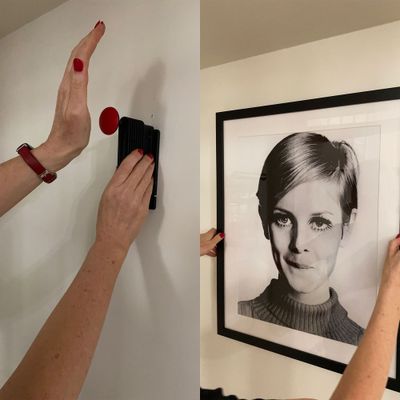
When you admire a particularly great at-home gallery wall — you know, the kind with a bunch of framed pieces hung together just so — on Instagram, you rarely think about the level of care it took to install each piece. Unless you’ve done a gallery wall yourself, that is, and remember the number of holes and uneven patches that live secretly behind your own art.
Take it from me: Gallery-wall hanging is not easy to pull off. I used to hang pictures by hammering a nail into the wall and hoping for the best. Picture-hanging hardware? Why bother! A hammer and any sort of nail, and I was good to go. But when it came to precision, this posed a problem. Nails hammered into the wall at an angle are never at the exact same angle (unless you use picture-hanging hardware), so pictures often end up looking slightly askew and don’t sit flush against the wall. The whole thing looks a bit homemade, and not in a good way.
That was many years ago, before I worked as an interior decorator and understood why the age-old “measure twice, cut once” philosophy can be applied to almost everything. And, most importantly, it was before I knew about the Takker.
A DIY tool that solves all the above issues, the Takker first came to my attention around 2009 when my mother in Ireland produced one from the cupboard to hang a picture. It had made an appearance on Dragons’ Den (the Shark Tank of Ireland) and soon found its way into Woodie’s DIY (the Home Depot of Ireland). The idea behind it was to invent a super-simple way to hang pictures and mirrors up to 22 pounds on drywall, wood, plaster, and aerated concrete block. To date, there’s a Takker in 10 percent of homes on the Emerald Isle.
Here’s how it works: You mark the spot, load some of the included Takks into the rear of the device, and give a satisfying punch to the large round red button, which pushes a Takk firmly and securely into the wall at an ecstatically perfect 90-degree angle. No risk of accidentally hammering your thumb, no loud repetitive banging sounds, no problem. The red button has a fun game-show feeling, as well.
I have always hung things directly on the Takk, but the Takker kit now comes with brass picture hooks, razor hooks, and large plastic hooks that work in tandem with the Takks. I’ve hung pretty much all my art under 22 pounds using the Takker. I’ve hung art at 11 p.m. without risk of disturbing the neighbors, and I’ve used it to hang the aforementioned precise grid gallery wall-art installation, which went fairly well, despite the most uneven walls imaginable.
The Takks themselves resemble pushpins (but smaller), and when you remove one from the wall, it leaves a 1-mm. hole that’s so tiny you can hardly see it, even when you’re standing right there. As someone who perennially prefers white walls, I can attest to the fact that these holes are practically unnoticeable, even with 20/20 vision. (I’ve used the Takker to hang Christmas decorations, leaving barely visible holes when it was time to take them down.) Although the Takks are hypersecure, they actually slide out very easily via an in-built removal slot in the device, so they can be reused. In lazier times, I’ve used a hammer hook to get them out, which leaves a scuff mark on the wall. Will I ever learn? Don’t be like me, your lazy friend; use the Takker slot. It’s there for a reason.
Just note: The Takker works amazing on drywall and wood, but it doesn’t work on exposed brick or exposed concrete block. That said, following the success of the original, the company invented a second version called the Hardwall Takker that can handle brick and even ceramic tile. Amazing! Maybe I’ll test it out. Stay tuned.
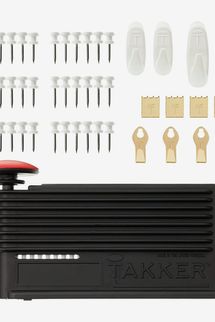
The Strategist is designed to surface the most useful, expert recommendations for things to buy across the vast e-commerce landscape. Some of our latest conquests include the best acne treatments , rolling luggage , pillows for side sleepers , natural anxiety remedies , and bath towels . We update links when possible, but note that deals can expire and all prices are subject to change.
- the strategist
- this thing's incredible
Every product is independently selected by (obsessive) editors. Things you buy through our links may earn us a commission.
Deal of the Day
Micro sales, greatest hits, most viewed stories.
- Everything We Want to Buy From the Dôen x Gap Collaboration
- The Best Running Watches, According to Runners
- What Anthony Roth Costanzo Can’t Live Without
- 21 Things on Sale: Including ‘Beach Corduroys’
- A Ssensible Guide to the Ssense Home Ssale
- 81 Gifts for Every Type of Husband
Today’s Top Clicked
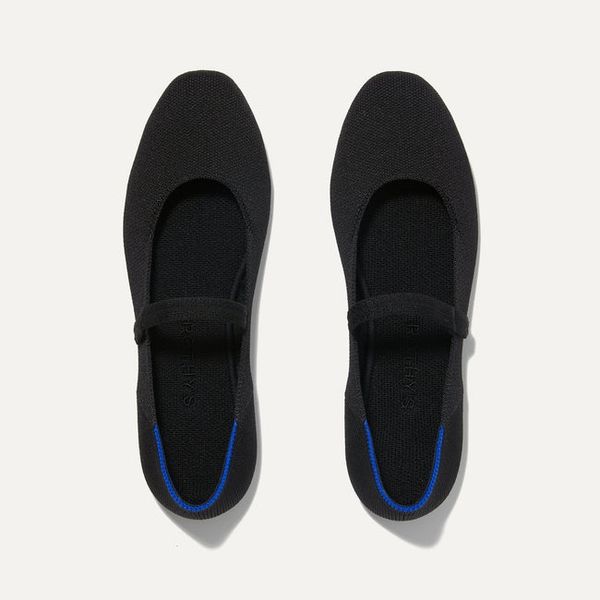
We've detected unusual activity from your computer network
To continue, please click the box below to let us know you're not a robot.
Why did this happen?
Please make sure your browser supports JavaScript and cookies and that you are not blocking them from loading. For more information you can review our Terms of Service and Cookie Policy .
For inquiries related to this message please contact our support team and provide the reference ID below.
DI softball regionals
DIII women's lax regionals
DIII men's lax quarters
⚾️ DII baseball regionals
NCAA | May 13, 2024
2024 ncaa division iii baseball committee announces championship bracket.

INDIANAPOLIS — The NCAA Division III Baseball Committee has announced the 60 teams that will compete in the 2024 NCAA Division III Baseball Championship.
Of the 16 regional sites played Friday-Sunday, May 17-19, four teams will compete at fourteen regional sites and two teams will compete at two regional sites. The four-team regionals will use a double-elimination format and the two-team regionals will play a best-of-five series. Thirty-nine conference champions qualified automatically.
Click here to view the full bracket | Click here to view the regional brackets
Winners of the sixteen regional tournaments will qualify for eight, best-of-three series at the super regionals, Friday-Saturday, May 24-25. The eight super regional winners will then qualify for the pool play double-elimination championship at Classic Auto Group Park in Eastlake, Ohio, Friday-Thursday, May 31-June 6, 2024.
Conferences receiving automatic qualification are as follows:
In the 2023 Division III championship series, Lynchburg captured their first national title with a 2-1 series win over Johns Hopkins.

2024 NCAA DIII baseball championship: Selections, bracket, schedule

2024 NCAA DII baseball championship: Bracket, schedule, scores

2024 college baseball conference tournaments: Schedules, brackets, auto-bids


IMAGES
VIDEO
COMMENTS
Katsushika Hokusai was a Japanese artist, printmaker, and painter who lived from 1760 to 1849. He is most recognized for his woodblock print series Thirty-Six Views of Mount Fuji, made in response to a domestic travel boom in Japan. From this collection, one piece in particular stood out among the rest. The Great Wave Off Kanagawa is arguably ...
2 Travel sketchbook ideas. 2.1 Draw the flora and fauna. 2.2 Draw the architecture of a new city. 2.3 Paint a crowded scene. 2.4 Create a cover for each location. 2.5 Create a sensory piece. 2.6 Draw or paint a self portrait in each location. 2.7 Visit the national parks. 2.8 Paint a night scene.
Brushes: I travel with three brushes: two Winsor & Newton Cotman watercolor round brushes (sizes 2 and 4), and my go-to, a synthetic squirrel hair brush by Mimik (round, size 6). I use the Mimik ...
Pro Tip: I like to keep all my art tools in a sling bag. This helps me access my art kit easily. 5 Awesome Tips for Travel Sketching for Beginners Choosing a subject. Start with a tiny step - don't try to draw the entire forest or city around you. Choose a small window of a house, a dry leaf on the ground, or an interesting branch.
Photo caption: Your travel sketching adventures can take you from Athens, Georgia to the streets of New York City. Photo by Ketut Subiyanto from Pexels. Student sketchbooks may count as one of the most underrated tools that art students have at their disposal for overcoming creative blocks. Within their pages, students attending any of the art ...
So read below for these cute step-by-step travel-themed tutorials. YOU MAY ALSO LIKE. New York Food Doodles For Travel Journal. Supplies you will need to doodle travel icons: Drawing pen (I like the Sakura Pigma Microns) Pencil (set) Eraser. Drawing paper, sketch book or bullet journal notebook. That's all!
A travel sketchbook is a place in which to record your adventures through the medium of drawing, painting or both. ... drawings or messages from your travel companions or people you meet ; Urban sketcher, Captain Tom, has a polaroid-type camera with him on his travels and sticks in his photos as he takes them to add to his sketchbook spreads:
8,811+ Free Travel Illustrations. Browse travel illustrations and find your perfect illustration graphics to use in your next project. / 89. Download stunning royalty-free images about Travel. Royalty-free No attribution required .
A travel art journal can be formatted in as many ways as there are personalities. My favorite format is an A5 size journal (about 5.5" x 8.5"), either in landscape or portrait mode, with sufficiently thick paper to stand up to waterproof ink lines and light washes. (80 lb. minimum, 140 lb. preferred) As with sketchbooks, an elastic closure ...
Join me on a sketching trip in beautiful, lively Guanajuato, Mexico! A travel sketchbook is a great way to capture a vacation, and it's a wonderful excuse to explore and observe when you're traveling. Whether you're an experienced artist or a beginner, this class will show you how to travel with art supplies and create quick sketches on the go.
The benefits of travel sketching. You see things better. Much better. You appreciate the details and understand how various elements relate. You discover small visual treasures you'd otherwise miss if you weren't travel sketching. You slow down. Travel sketching forces you to stop. And look. And look again.
8,745+ Free Travel Illustrations. Browse travel illustrations and find your perfect illustration graphics to use in your next project. compass nautical. loveourplanet earth. mountains landscape. astronaut spaceman. camp camping tent. woman flight travel. backpacker road walk.
Travel Sketching: A Manifesto. By Candace Rardon. May 15, 2014. • 7 min read. The idea of documenting a trip through art isn't a particularly new one. Aboard Captain Cook 's second voyage to ...
Keep your travel experiences and your art practice alive with travel sketching. "A travel sketchbook lets you keep memories," says artist Betty Lynch. "You remember more the smell of a flower market, the taste of a cafe dinner when you sketch your memories than you ever can by merely photographing the scene." Lynch should know.
Travel sketching: With these basic supplies you will be able to sketch while travelling: You can make a small portable watercolor set. About. Join Mailing List. ... Travel Sketching techniques. For drawing, I recommend you use a fine liner or fountain pen to make contour drawings. I like it better than using graphite as it will forces you to ...
3. Draw an architectural sketch. This can be especially fun if the structure has special significance to your travel experience. 4. Sketch and paint. Draw the sketch with a technical pen and then add watercolor. My favorite tool for pen-drawing is the Faber-Castell Pitt Artist Micron Pen (with a super-fine nib). It really makes the watercolor ...
Size: 6" x 8" Paper Weight: 120gsm Pages: 160 Suitable for: sketching with pencil and ink on the go! The Pentalic Sketchbook Traveler Journal was made from recycled, acid-free paper for professionals, students, and artists to sketch journals or draw art and their surroundings.
ARTEZA Sketchbook, Pack of 2. Sale. Arteza Sketch Book 2-Pack, 9x12 Inches, 200 Sheets, 100 Sheets Each Drawing Book, 68 lb, 100gsm Paper, Spiral Bound Artist Sketch Pad, Durable Acid Free Drawing Pad, for Adults and Teens, Bright White. More Art Paper, More Possibilities: You get 2 thick, large 100-sheet art books for drawing - 200 sheets in ...
101 Travel Journal Ideas: What to Put in a Traveler's Notebook. 1. Start With a Map. Maps are always great in a journal. You can paste or tape them in or even make pockets and envelopes with them. Drawing maps can be a lot of fun also. There are also a lot of ways to get maps: Google Maps: You could even print out a satellite/street view ...
On top of mobile materials—including a booklet of watercolor sheets and a compact sculpting set—you'll also find supplies that conveniently fold, collapse, and roll into easy-to-carry shapes and sizes. Plus, with an artsy travel mug and a book of drawing ideas, any journey can become a work of art!
Photo by Brendon Campos. New York, London, Paris, Berlin, Los Angeles, Florence, Miami Beach, Hong Kong, São Paulo—these cities are all home to blockbuster art markets, creative superstars, and museums as famous as the works they house. We love these places, but we also love art destinations outside of the art-world orbit: places with an air ...
Easy astronaut drawing by Super Easy Drawings. 38. Elephant. Drawing an elephant can be fun and easy, taking only 3 to 5 minutes of your time. Start by drawing the head and trunk of the elephant. From there, fill in details like eyes, legs, tail, tusks, and other features that give it its unique charm.
Brushes and Brush Cleaner. For traveling I recommend the Guerilla 'mighty mite brush washer'. It is leak proof, you don't have to worry about soiling things when traveling with with linseed oil or turpenoid. In addition, it works as a terrific brush cleaner that lasts a long time.
Do the Full Monty of Italian dining. Bring your appetite and go big, with antipasto, pasta, main course, and dessert at a homey trat like Da Enzo da 29. Get up early. At least once during your ...
May 17, 2024. At the southwest corner of Ishikawa, a verdant prefecture hugging the Sea of Japan, traditional craftsmanship thrives alongside contemporary art and architecture in the small towns ...
Takker Easy One Step Picture Frame Hanging Tool Kit. $30. Buy at Amazon. The Strategist is designed to surface the most useful, expert recommendations for things to buy across the vast e-commerce ...
Siesta Key Florida Tropical Paradise Travel Art. Transport yourself to the timeless beauty of Siesta Key, Florida, with this captivating retro travel poster. Dive into the allure of powdery white sands, crystal-clear waters, and the laid-back charm of Gulf Coast living. Let the nostalgia inspire your escape to this tropical haven. 🌴☀️ # ...
CNN —. That didn't take long. Less than a week after two public sculptures featuring a livestream between Dublin, Ireland, and New York City debuted, "inappropriate behavior" in real-time ...
And yet the concerts are drawing five times as many Americans as the Paris Olympics, according to figures from New York-based luxury travel agency Embark Beyond. For both events, trips would ...
INDIANAPOLIS — The NCAA Division III Baseball Committee has announced the 60 teams that will compete in the 2024 NCAA Division III Baseball Championship.. Of the 16 regional sites played Friday ...